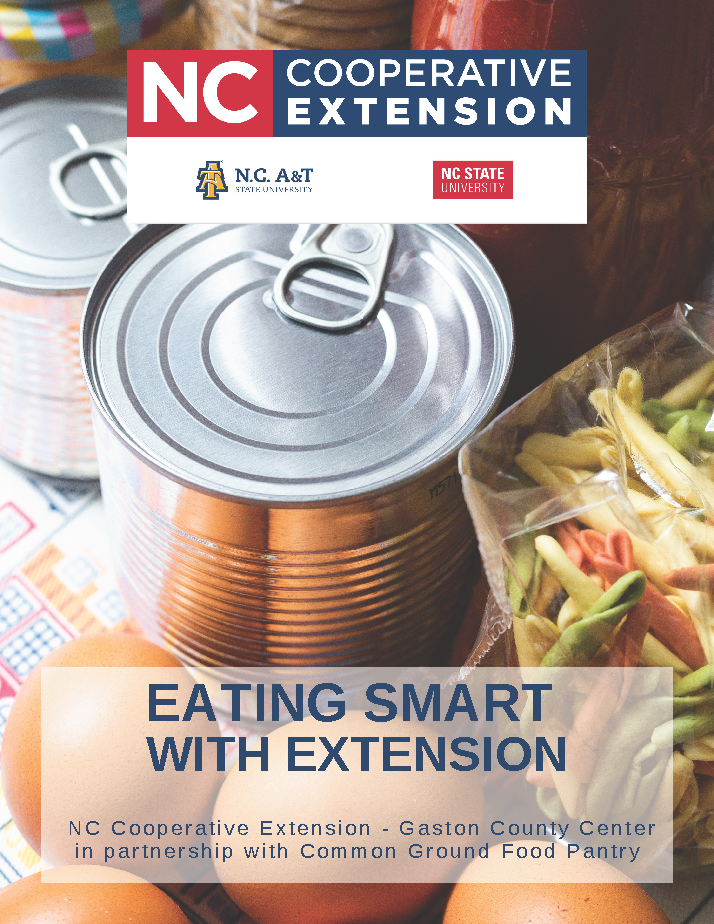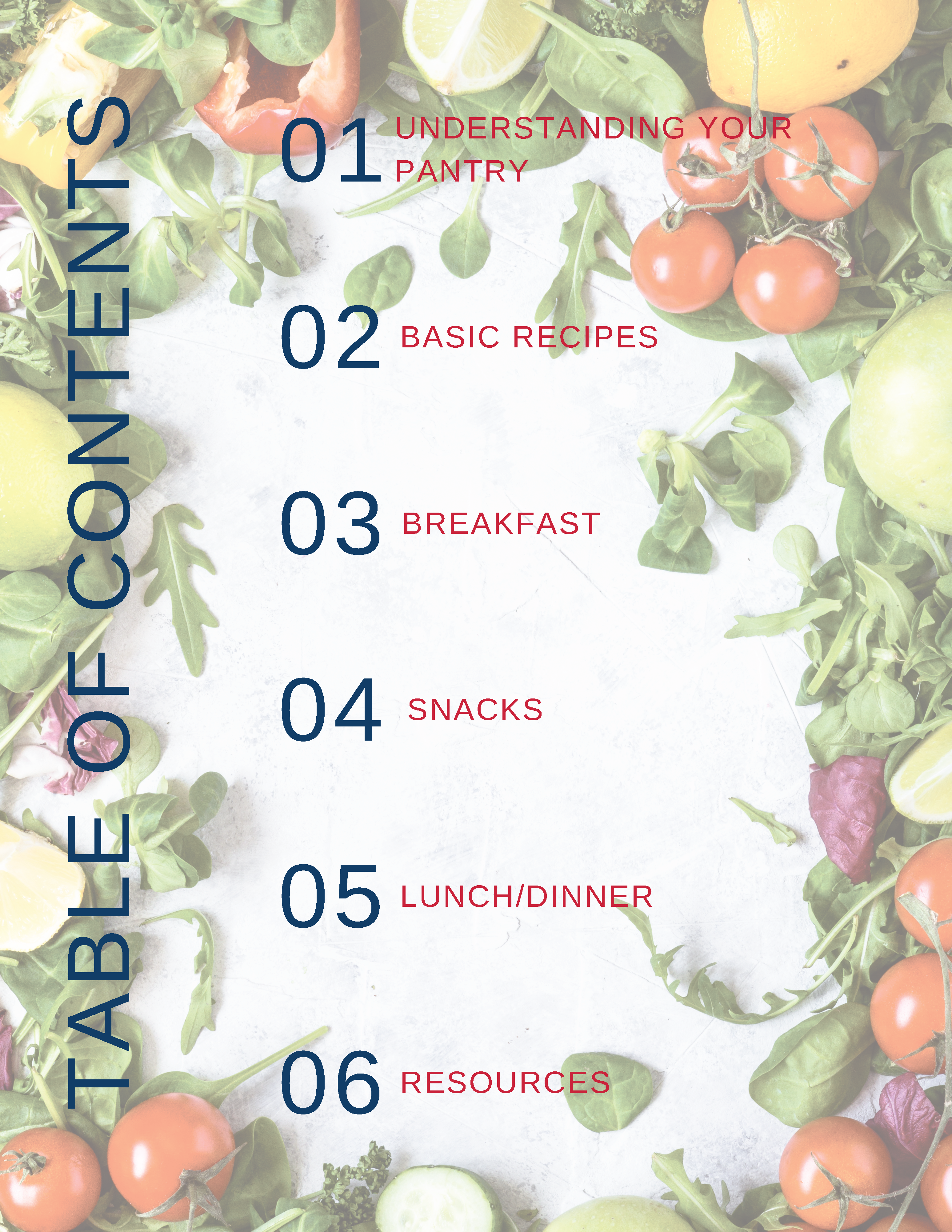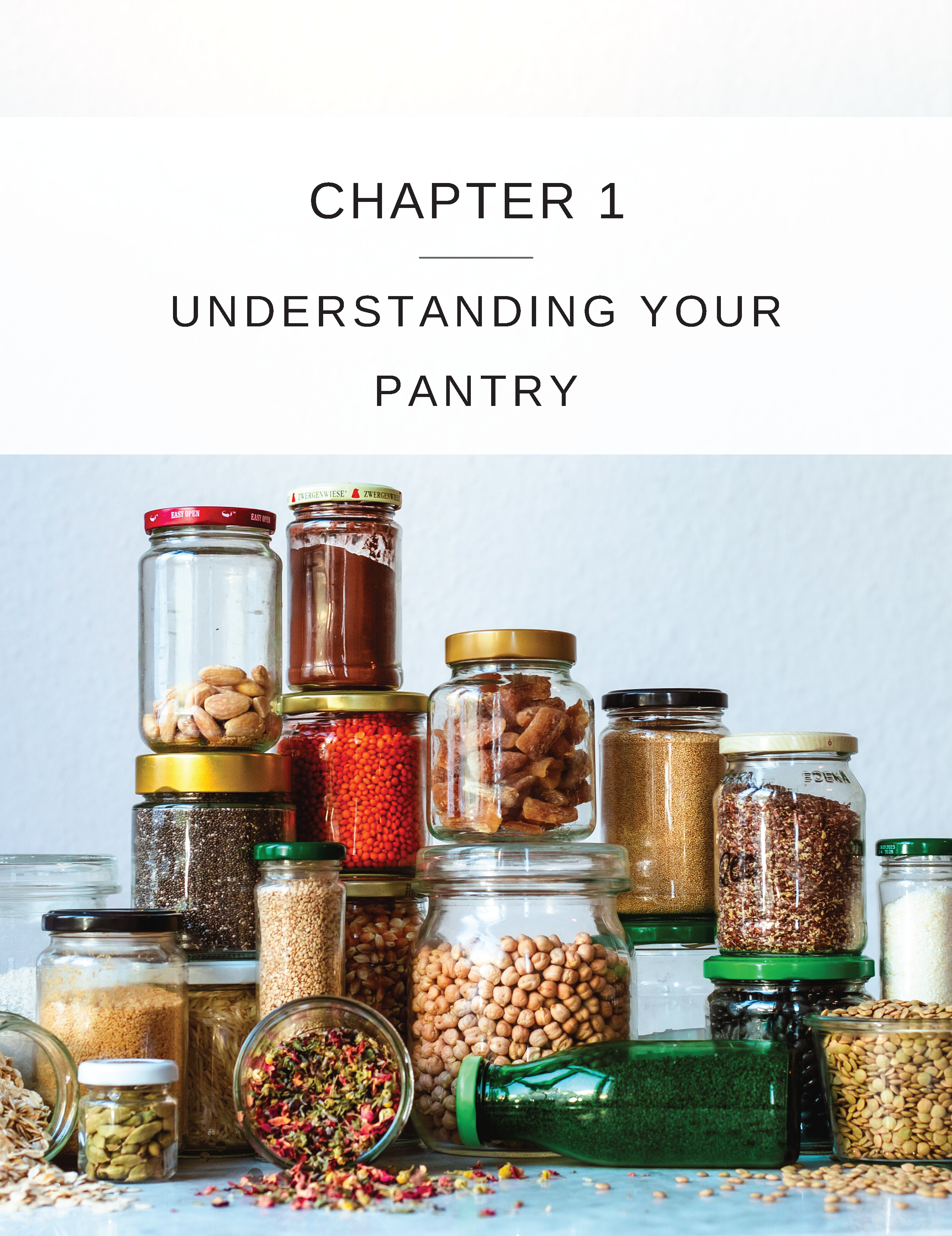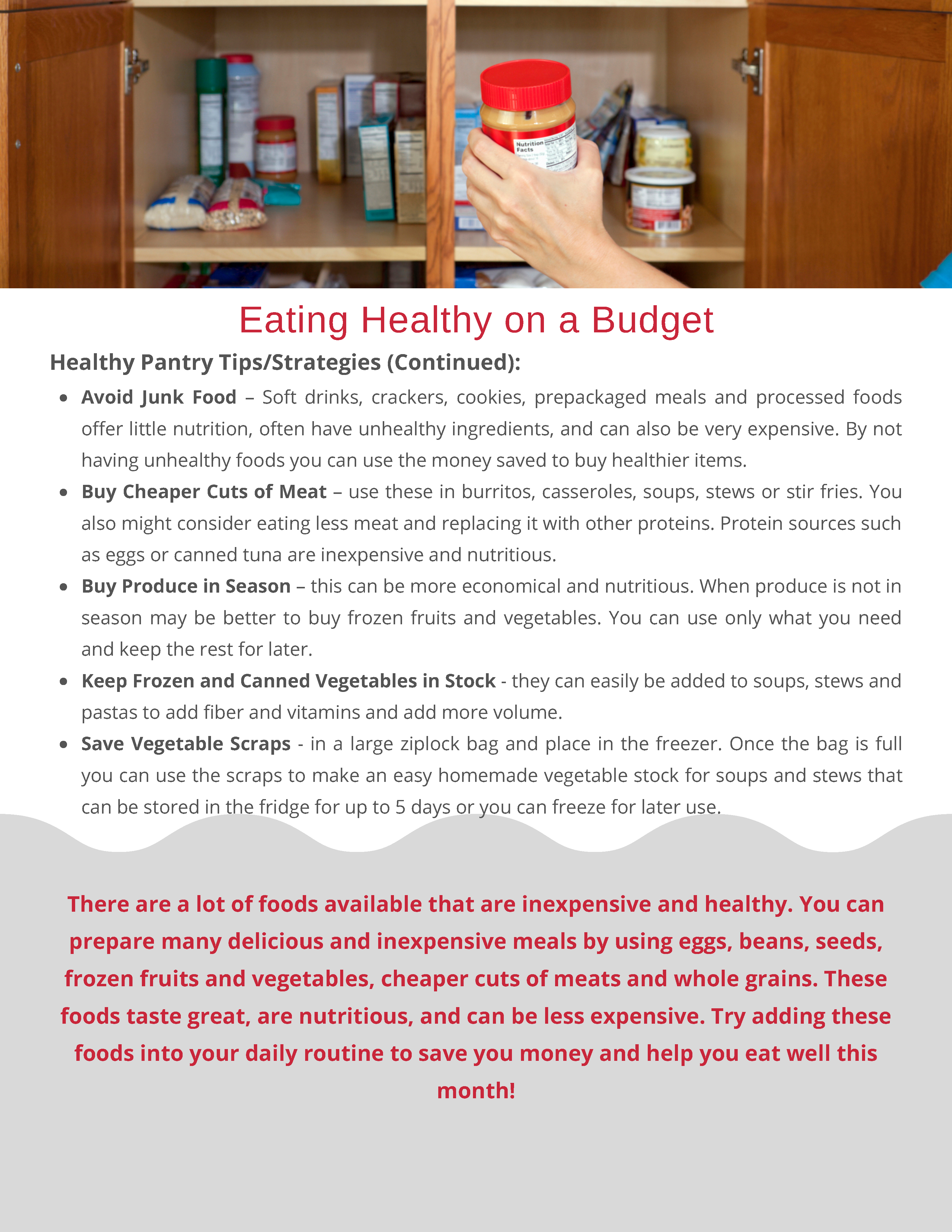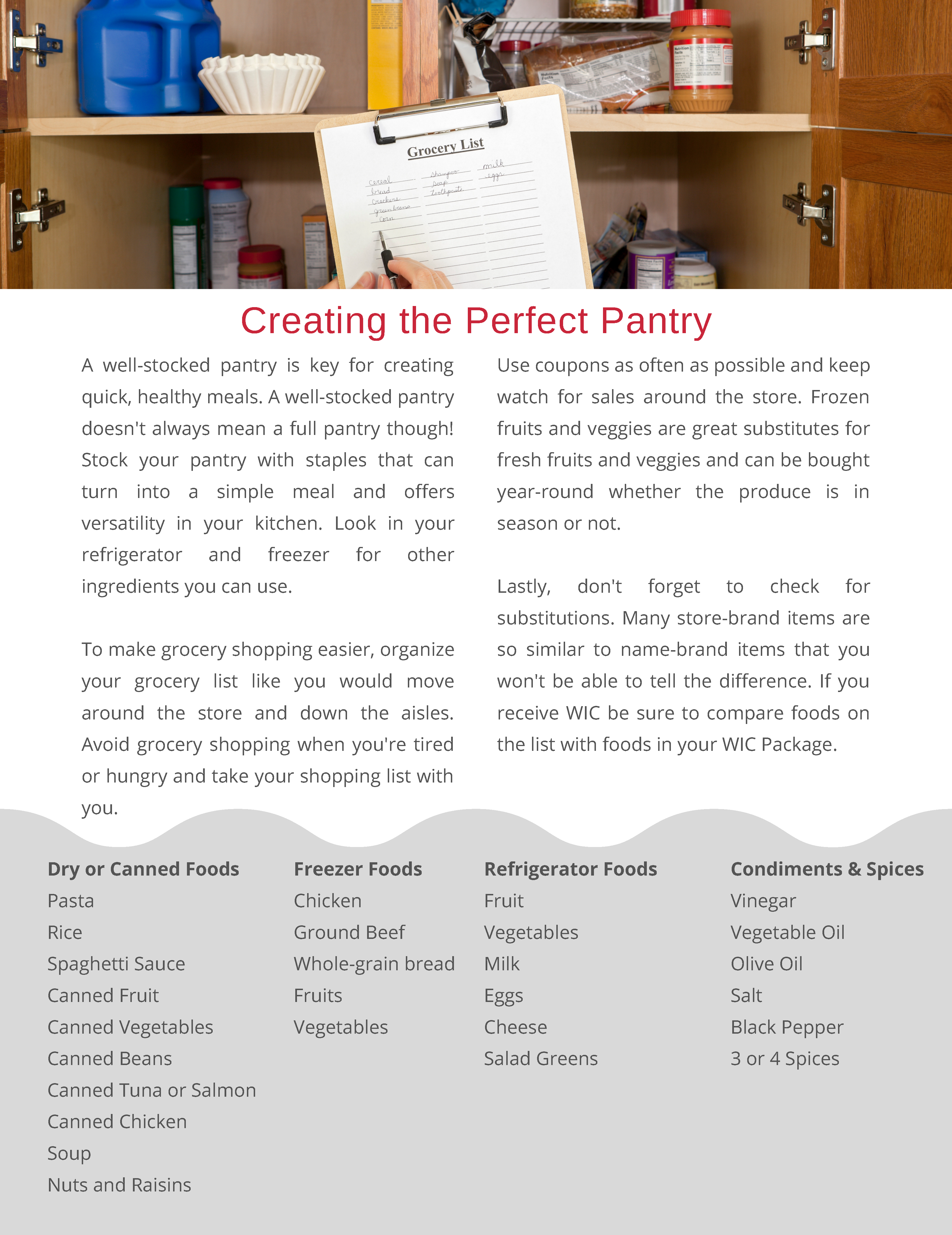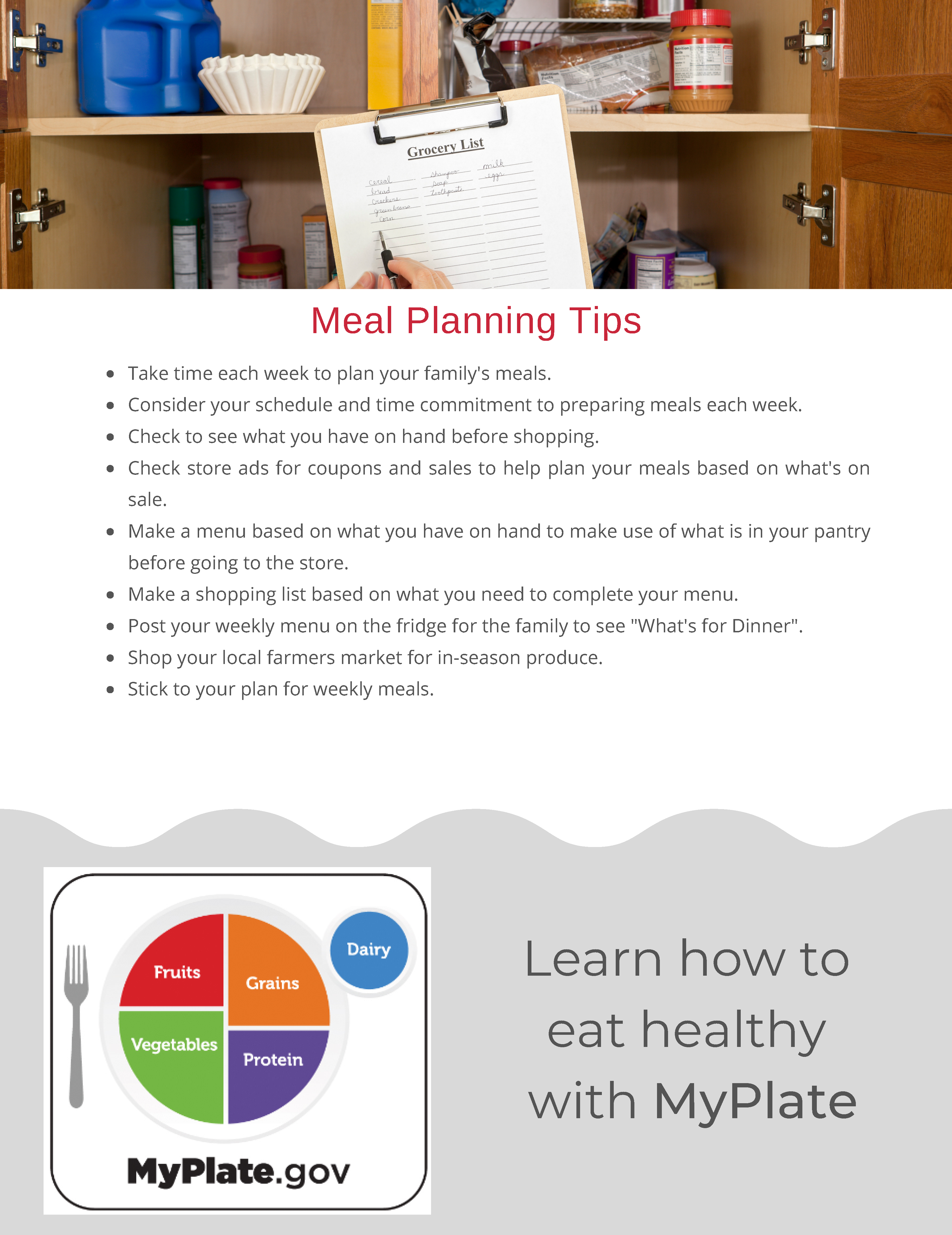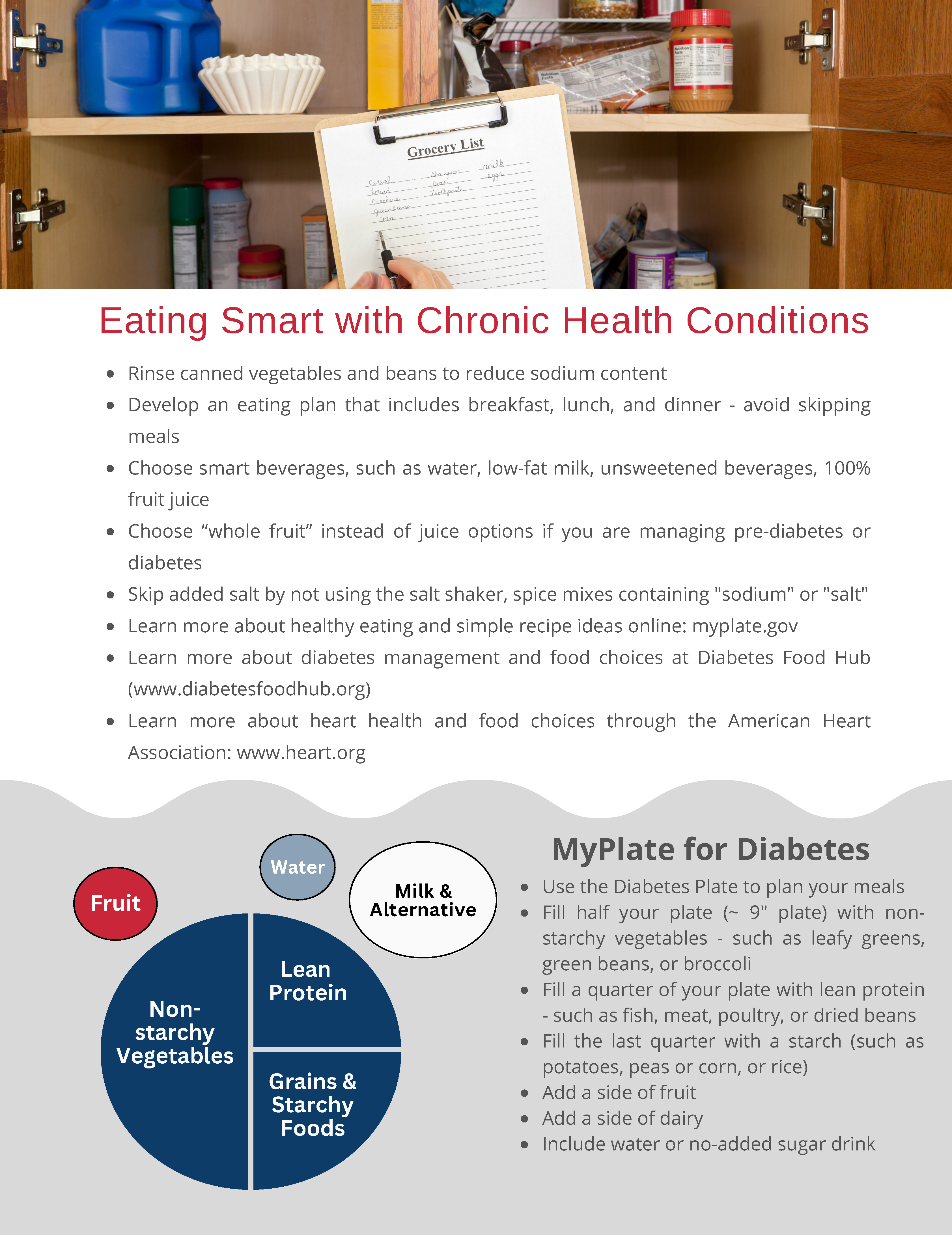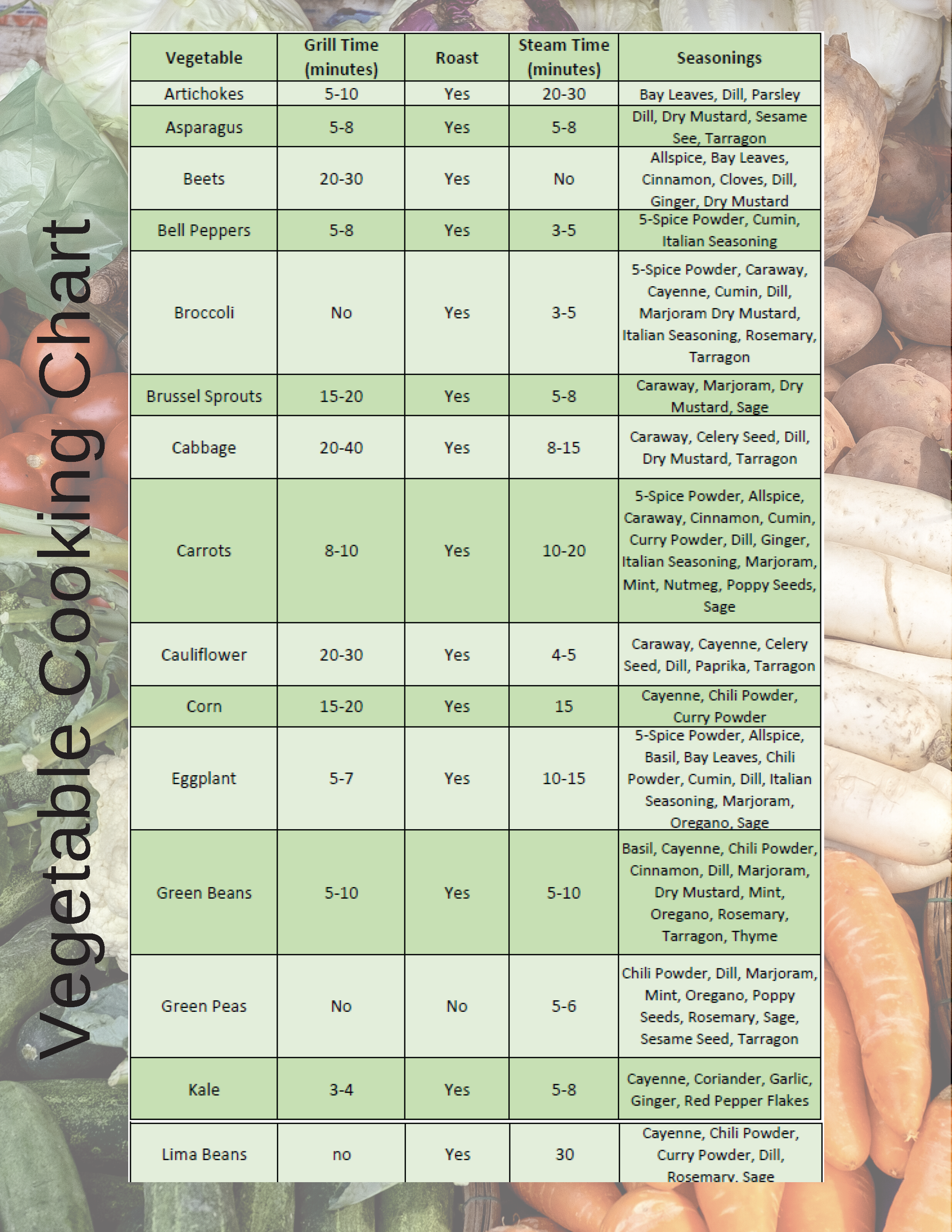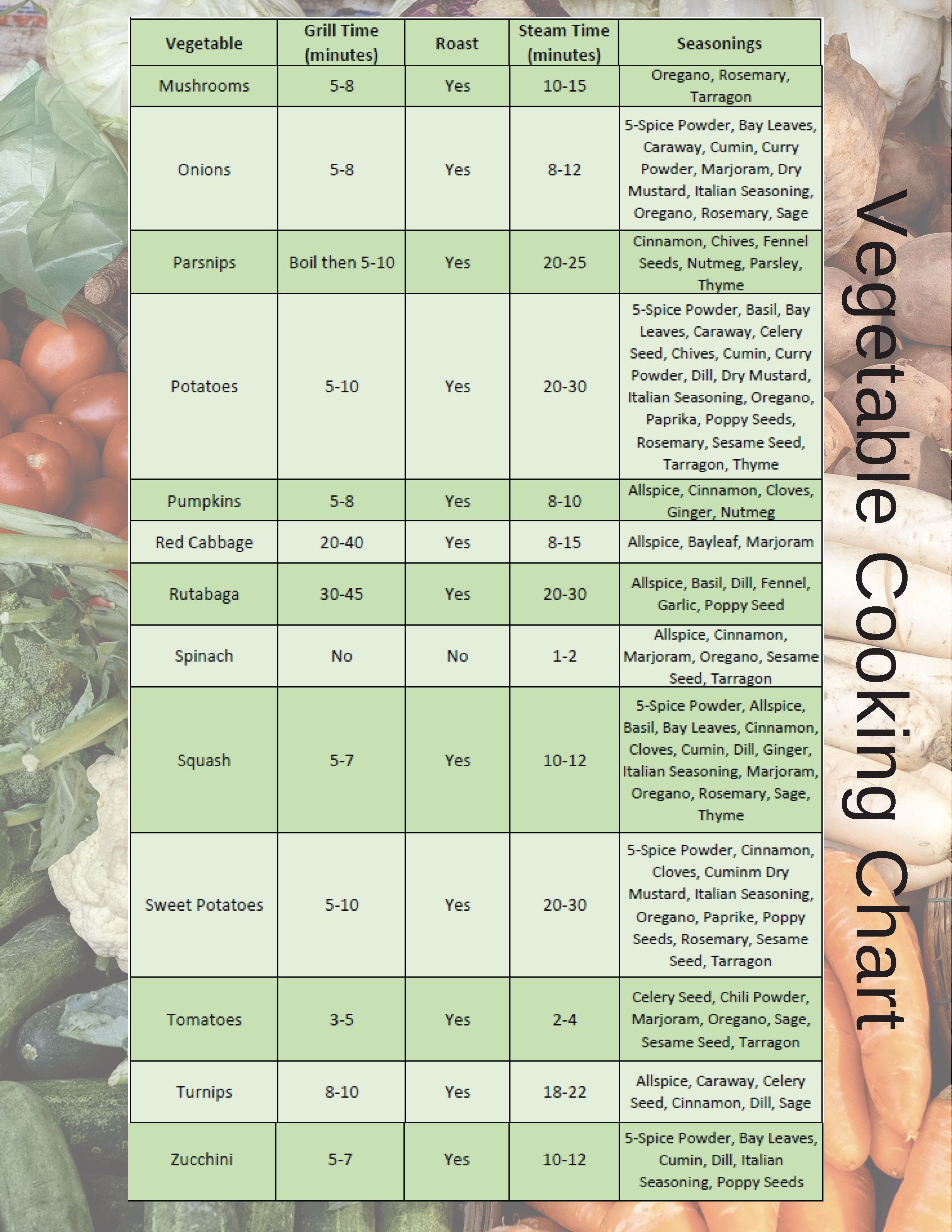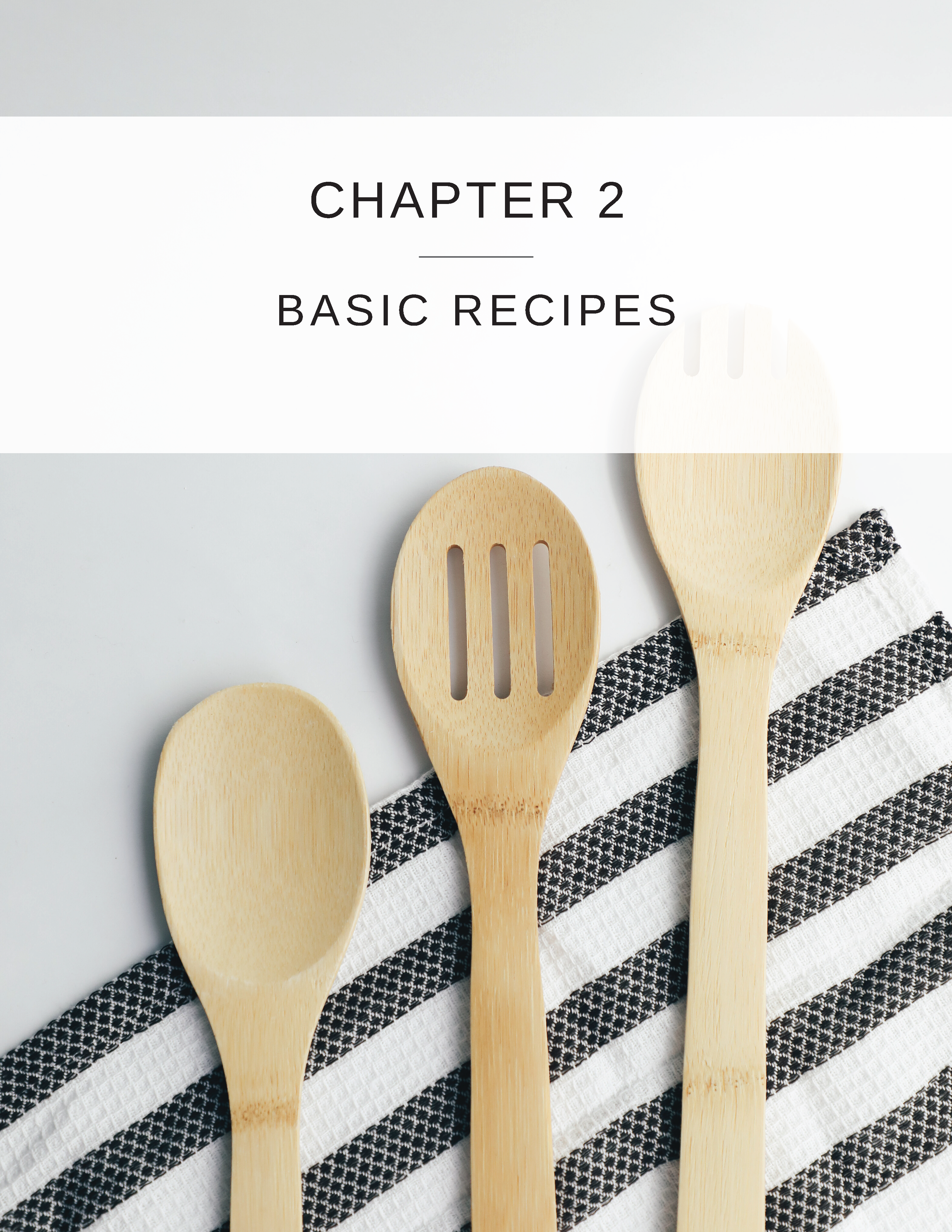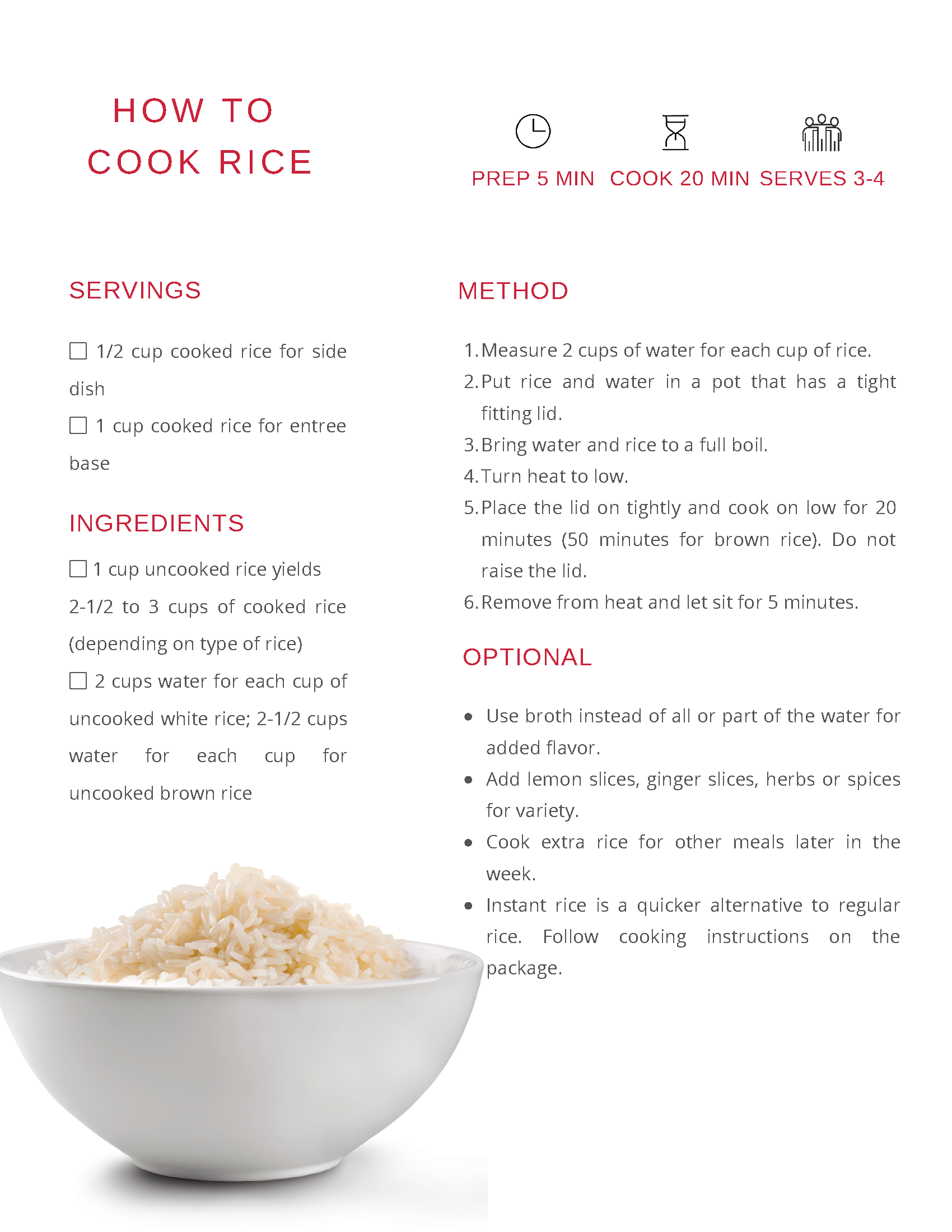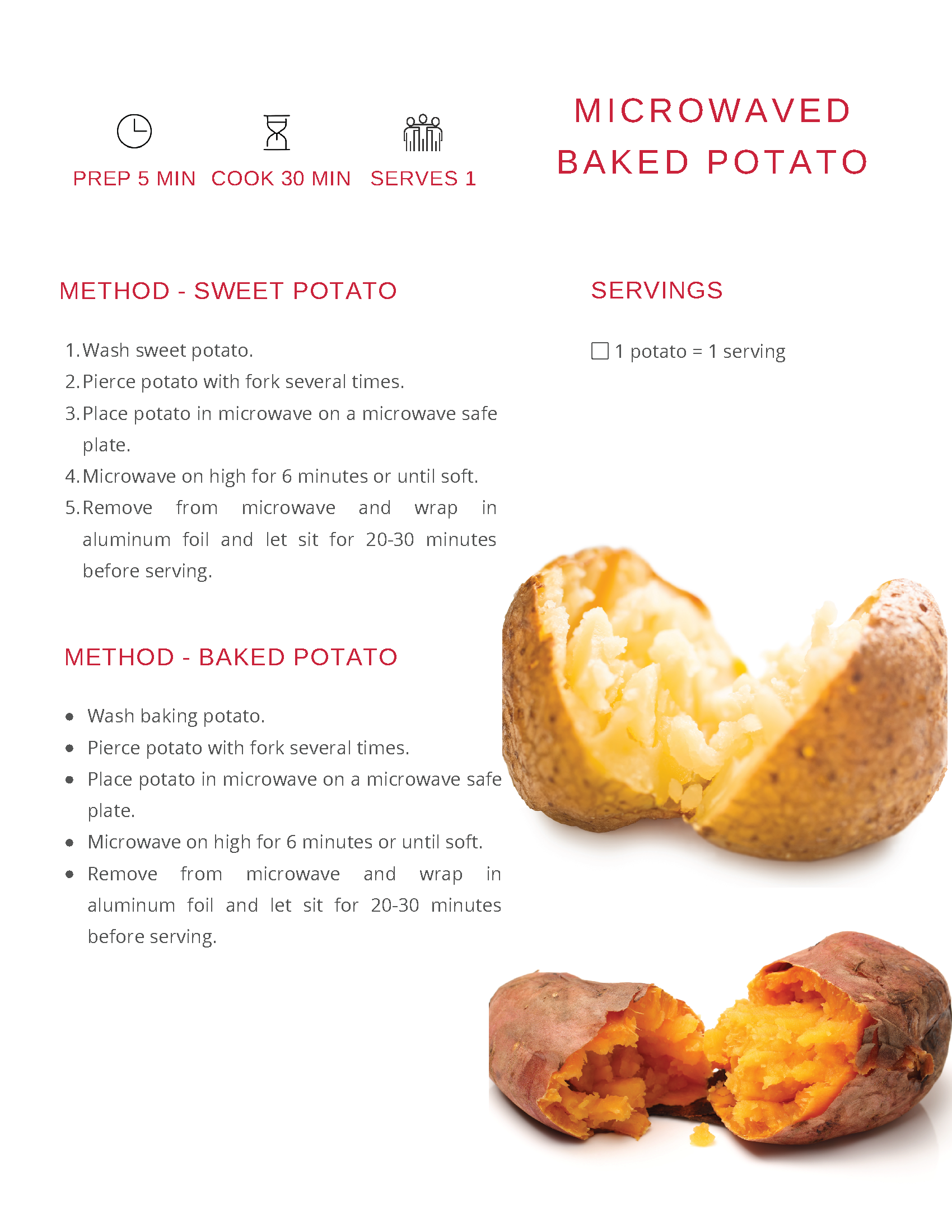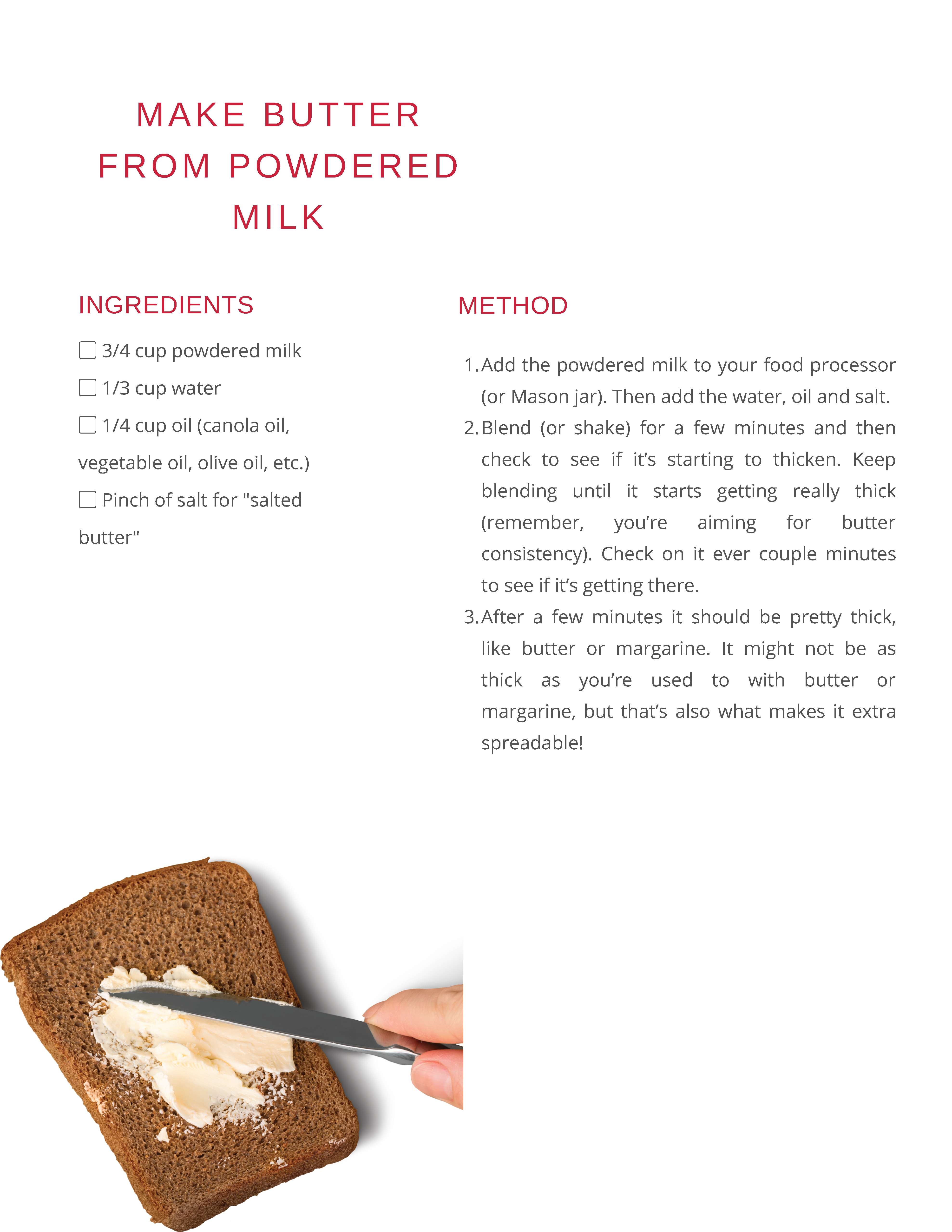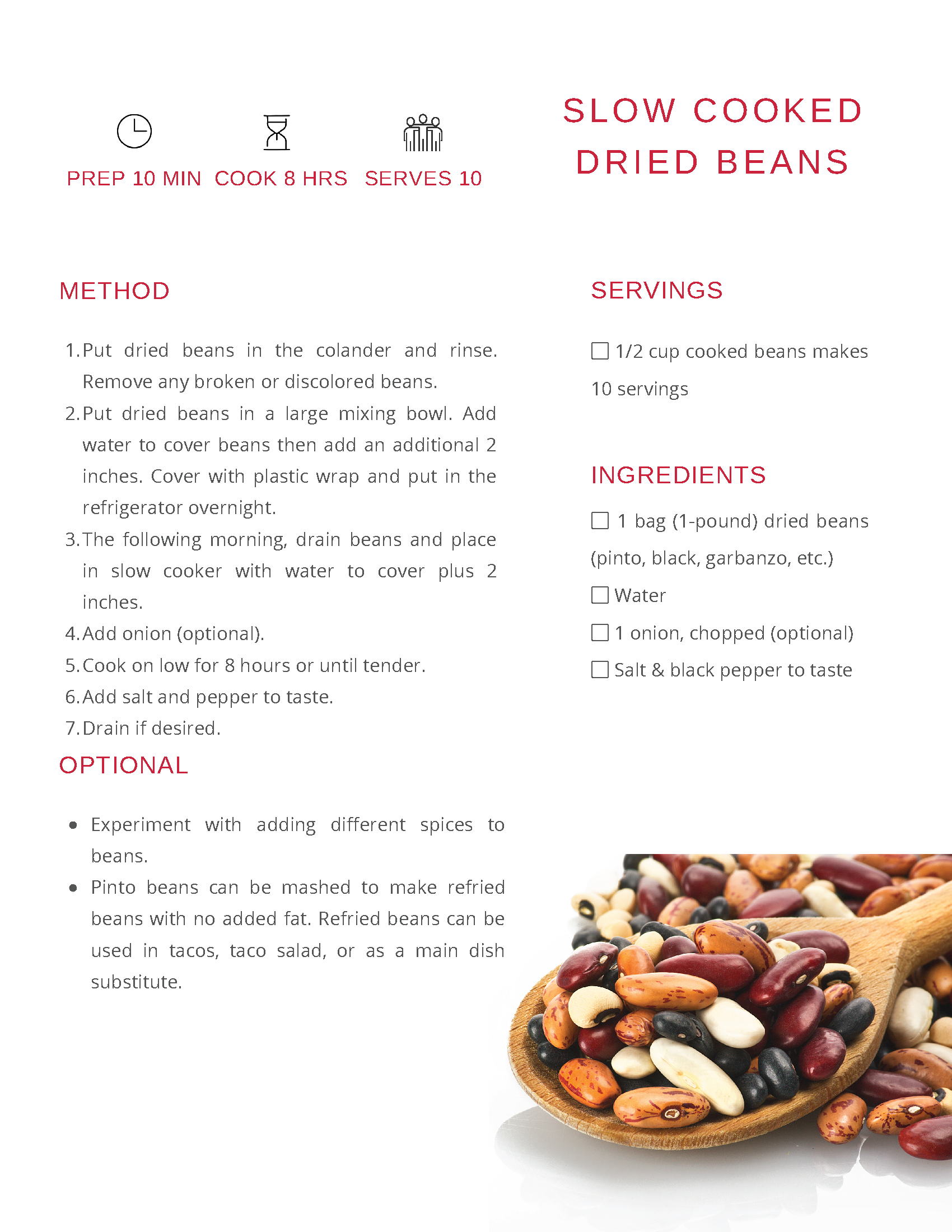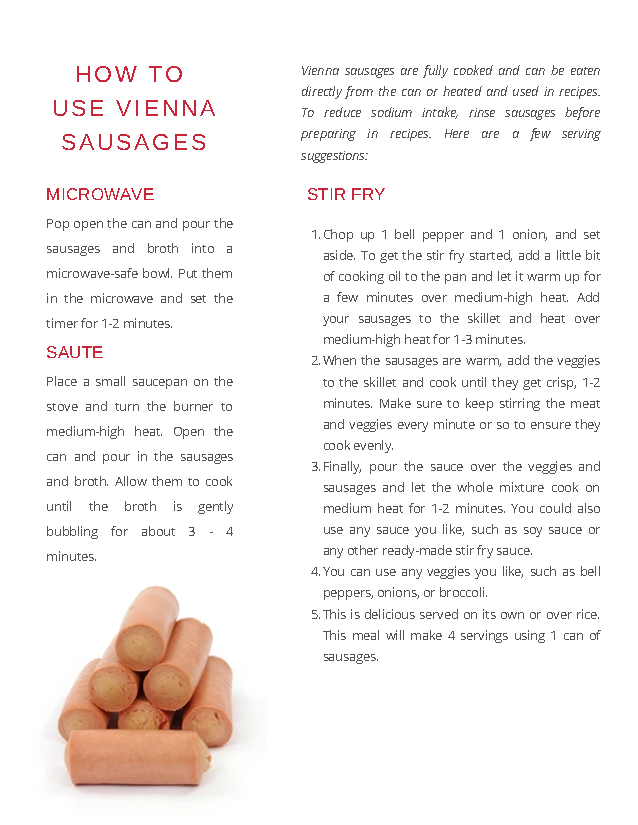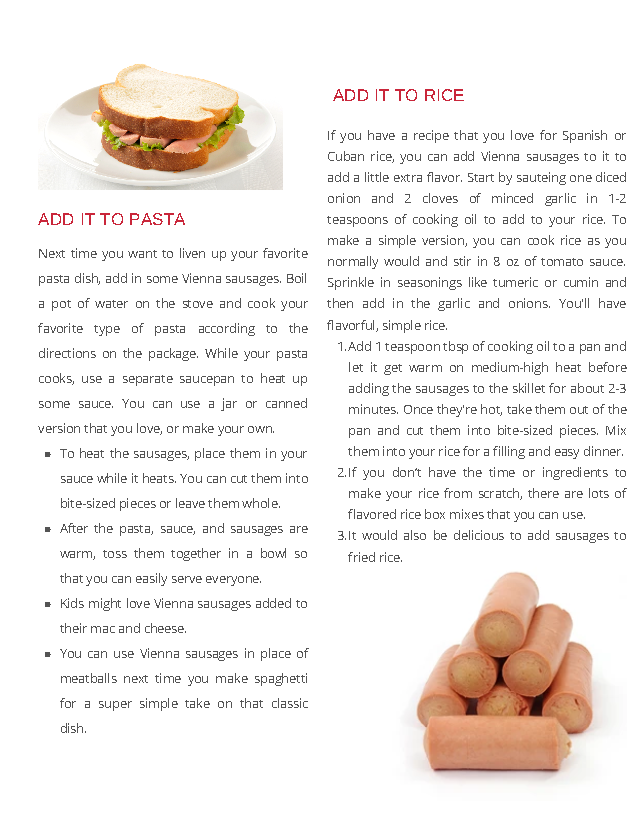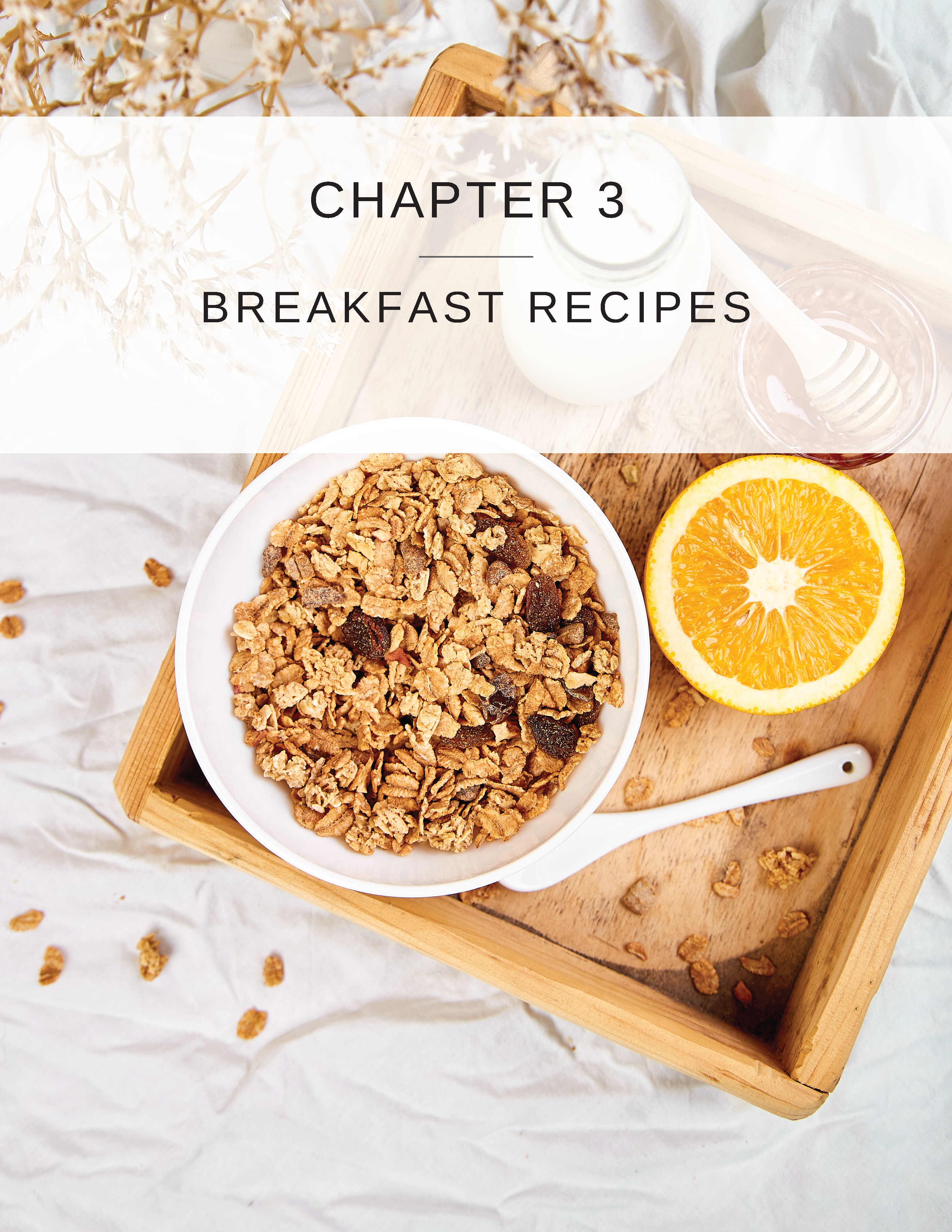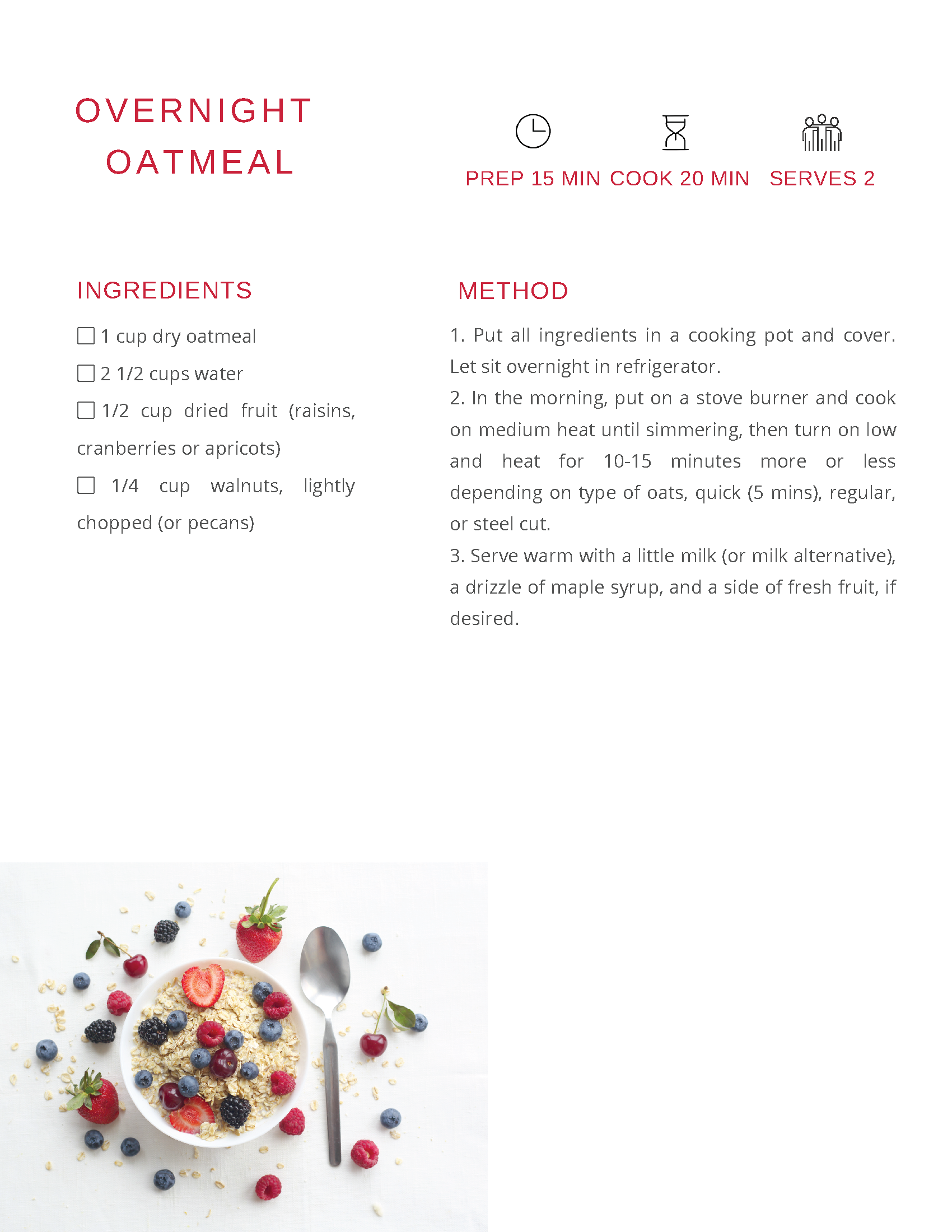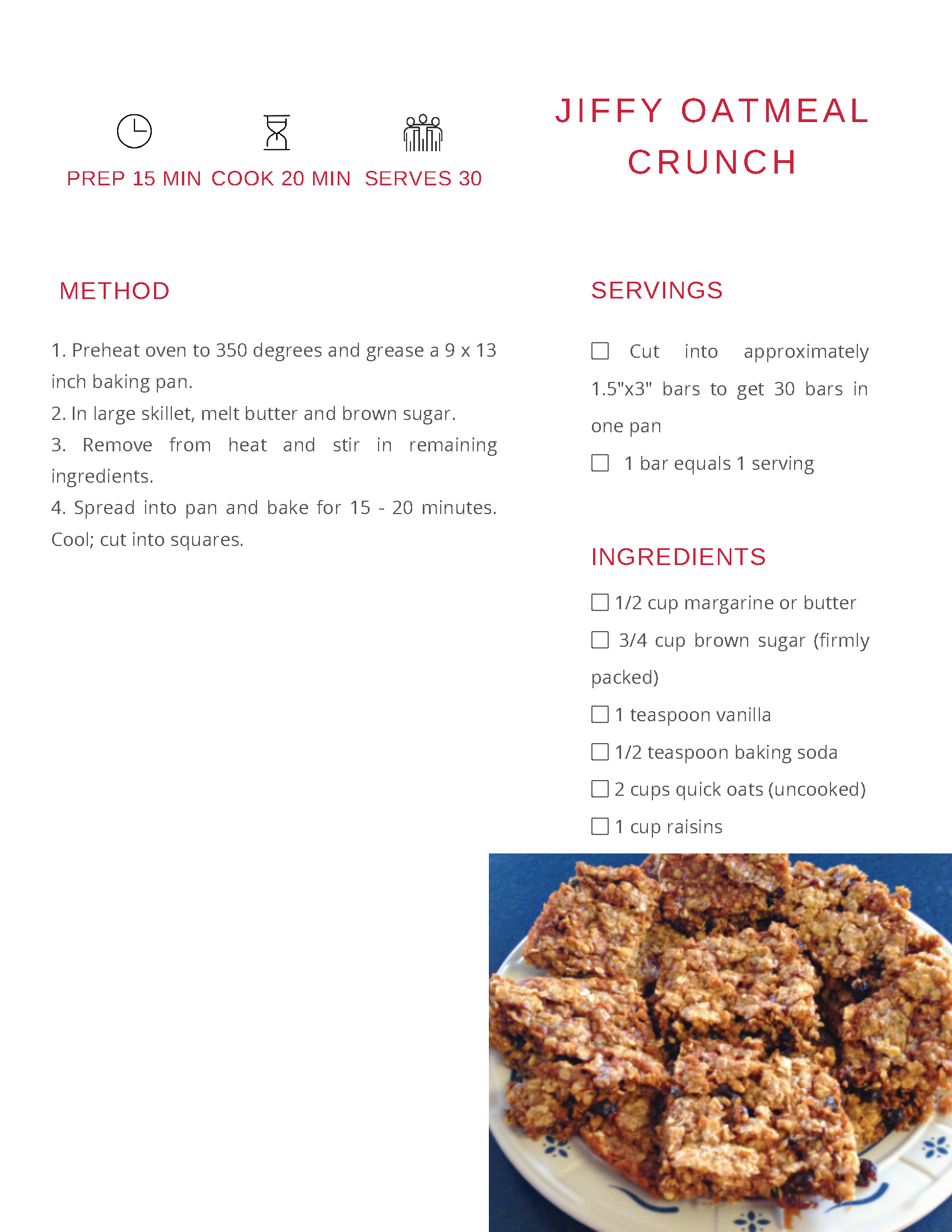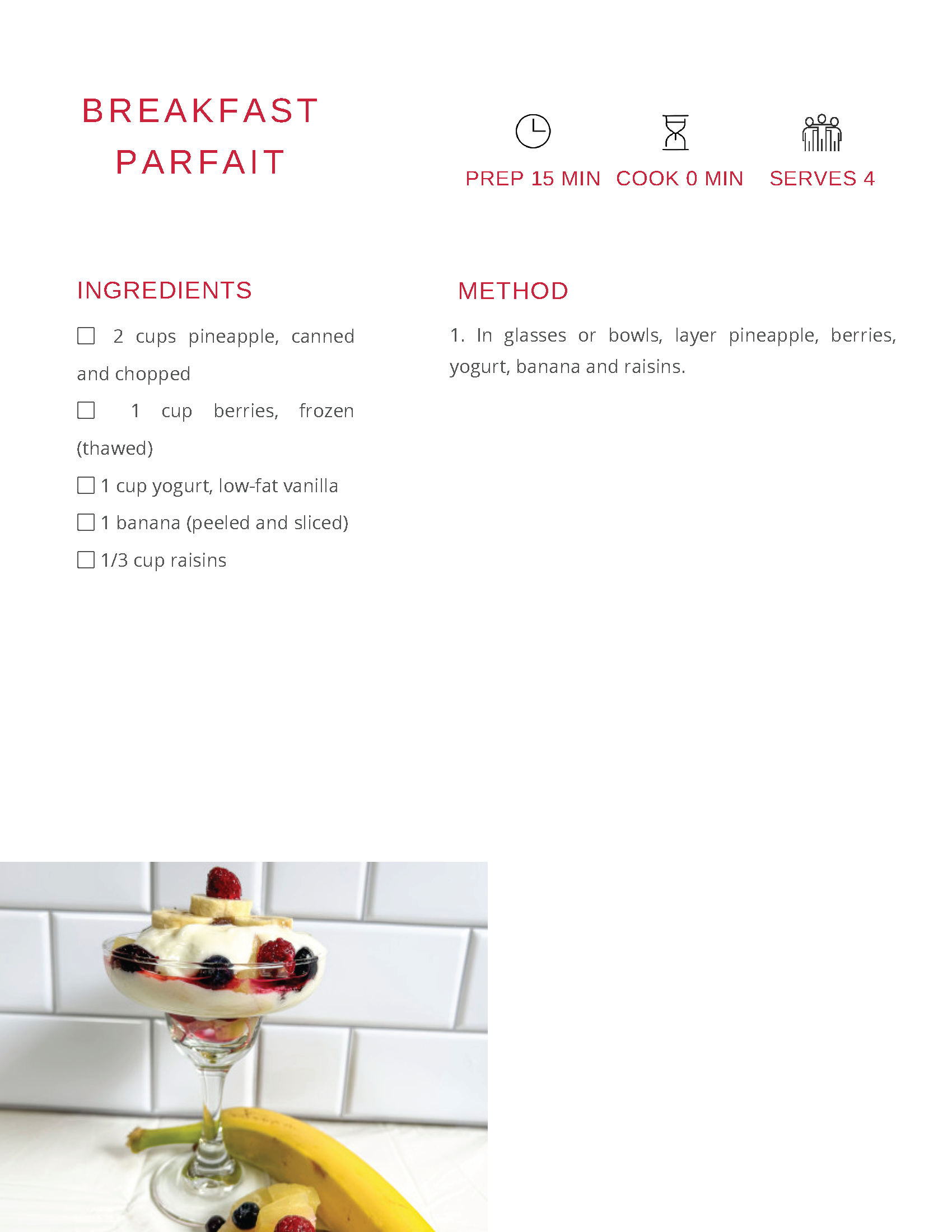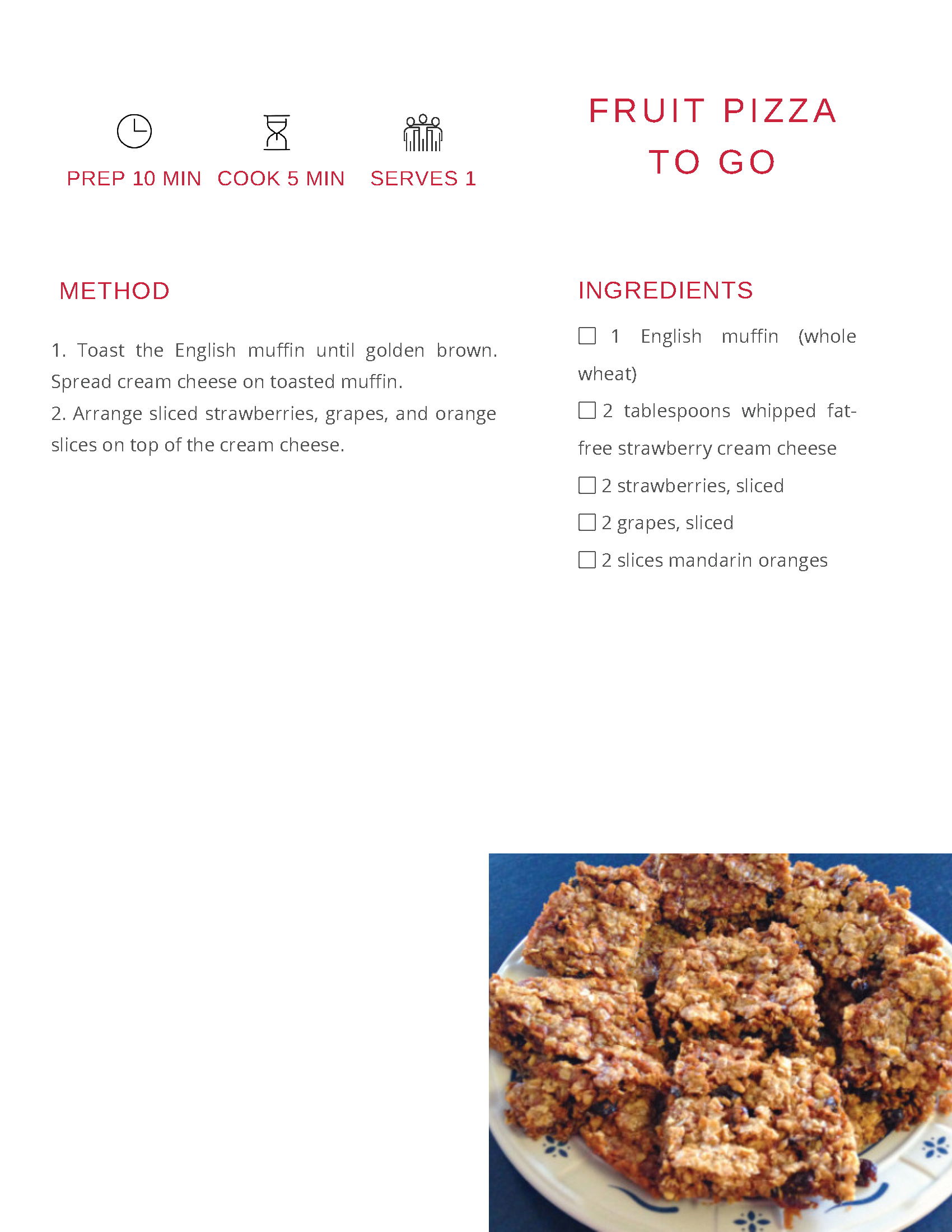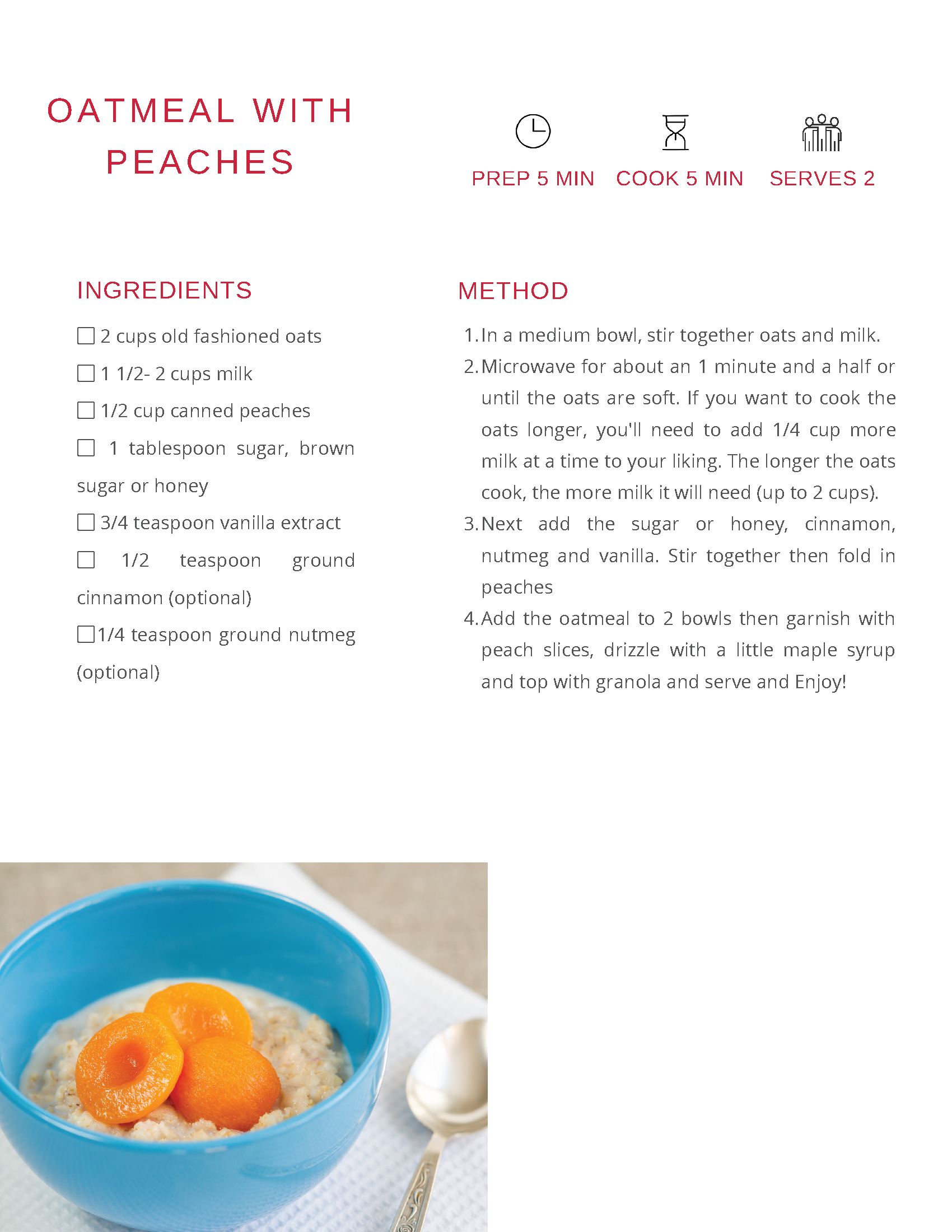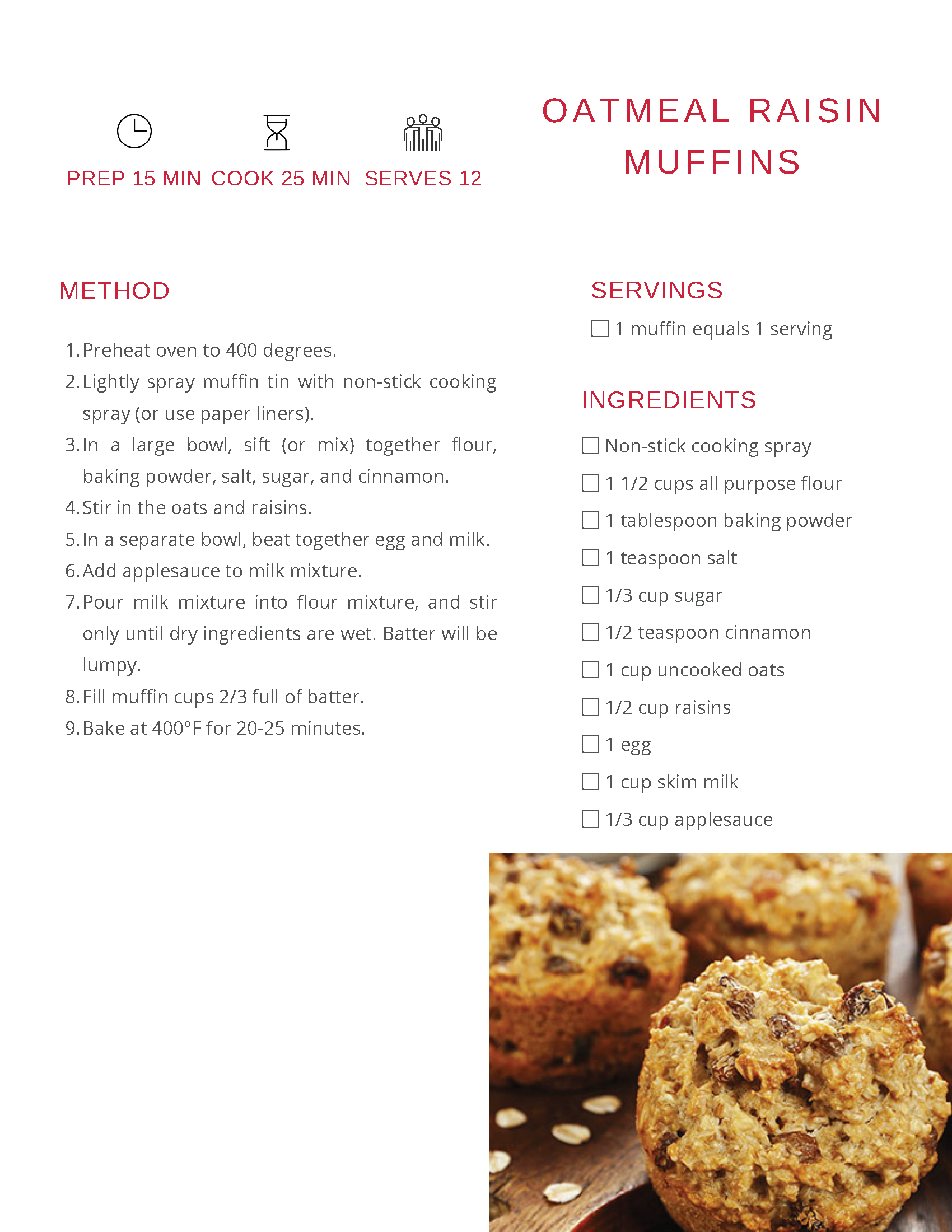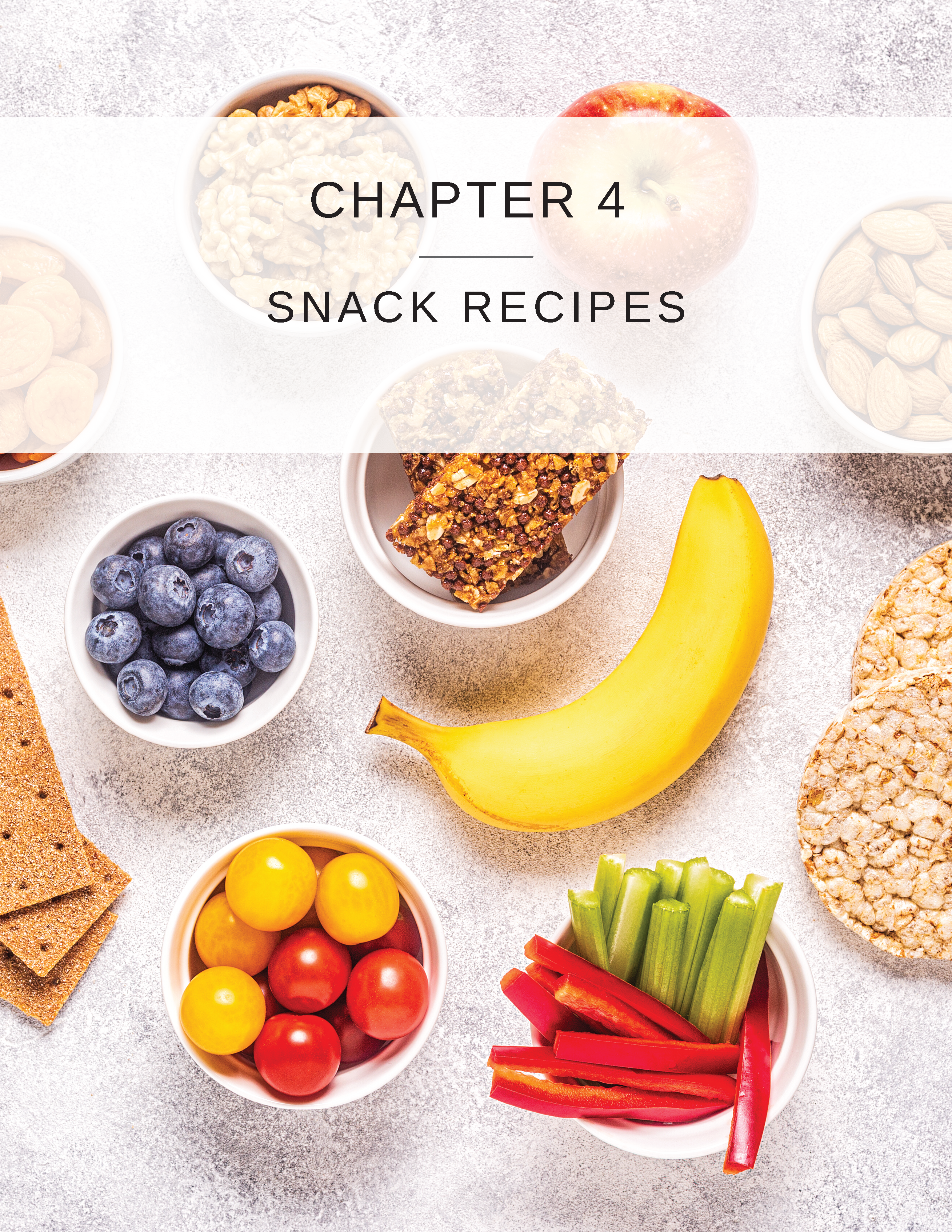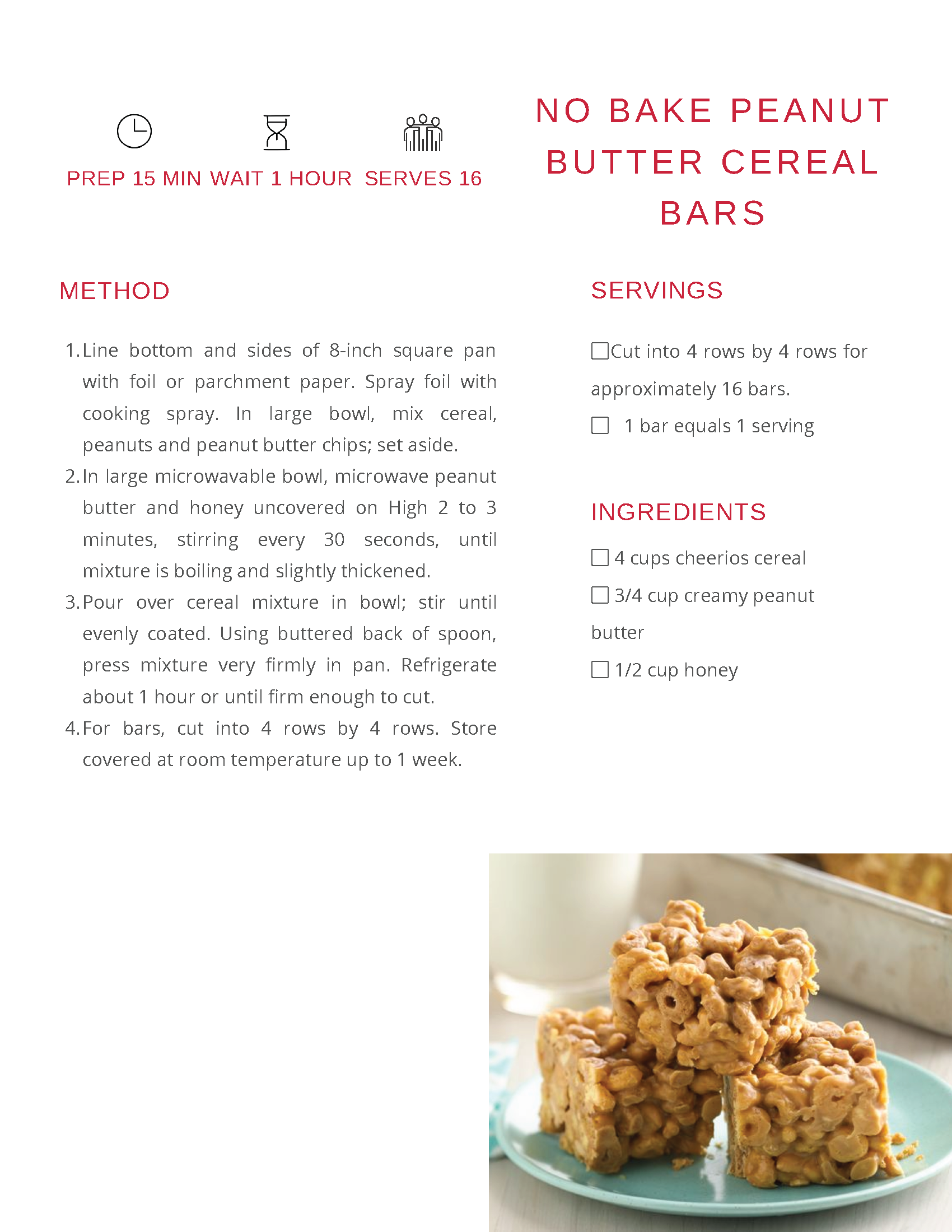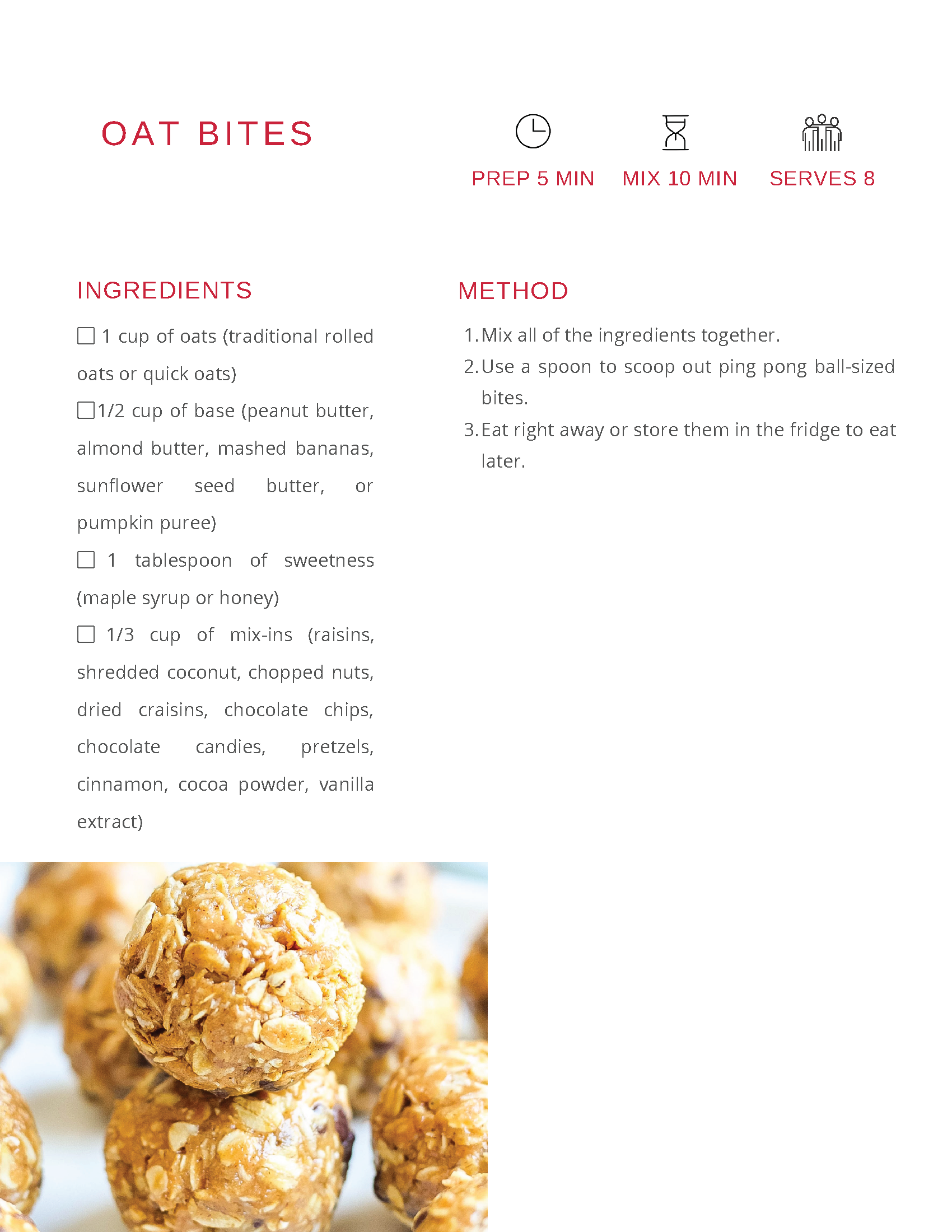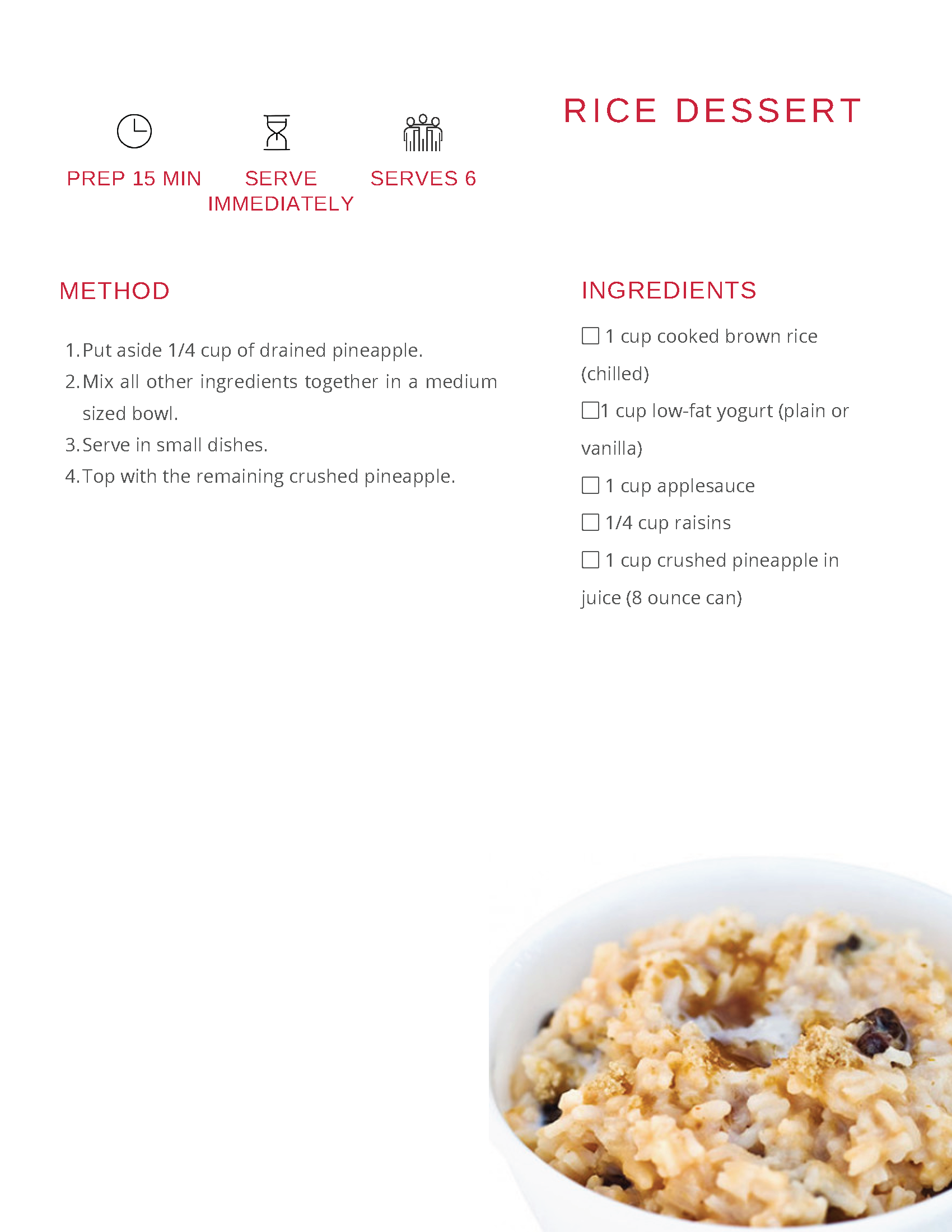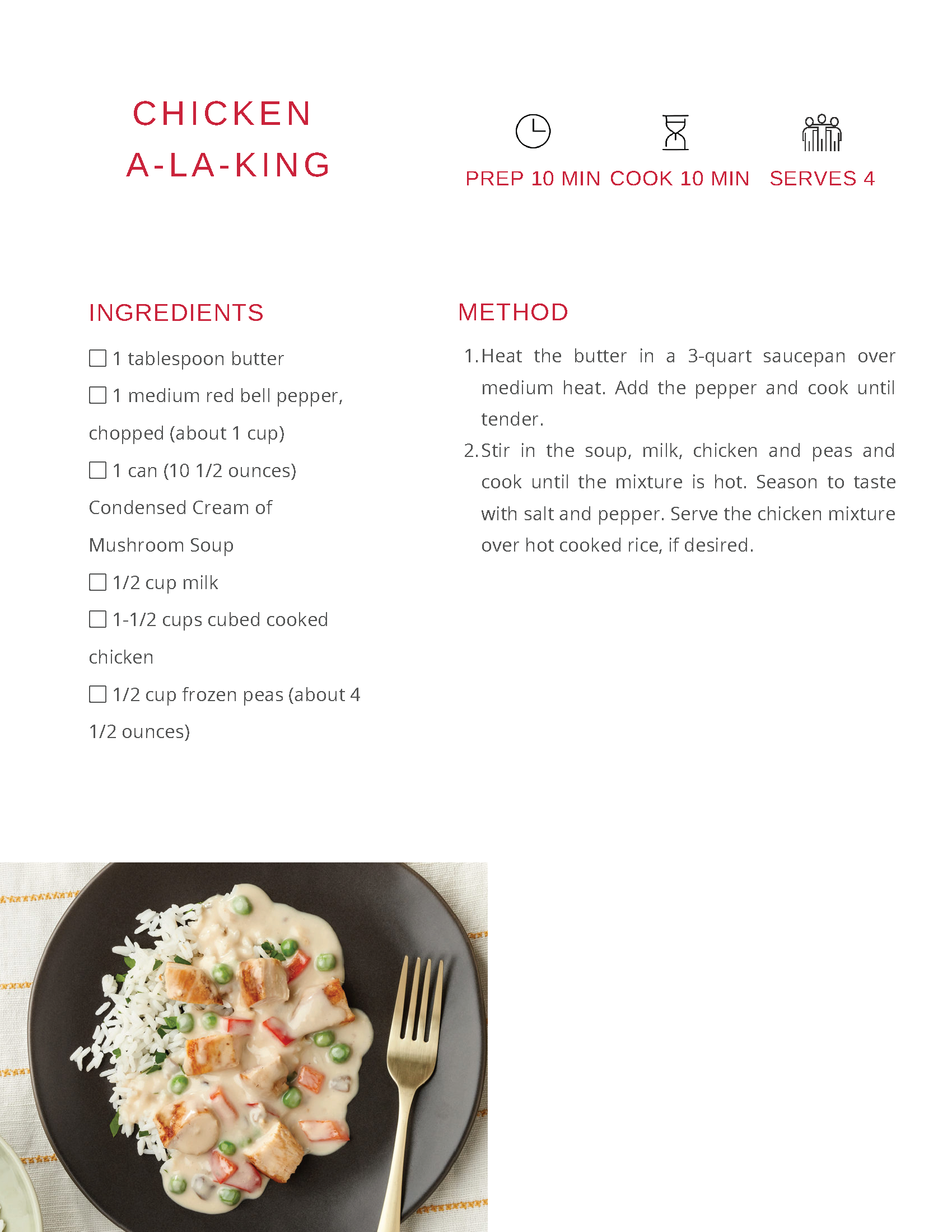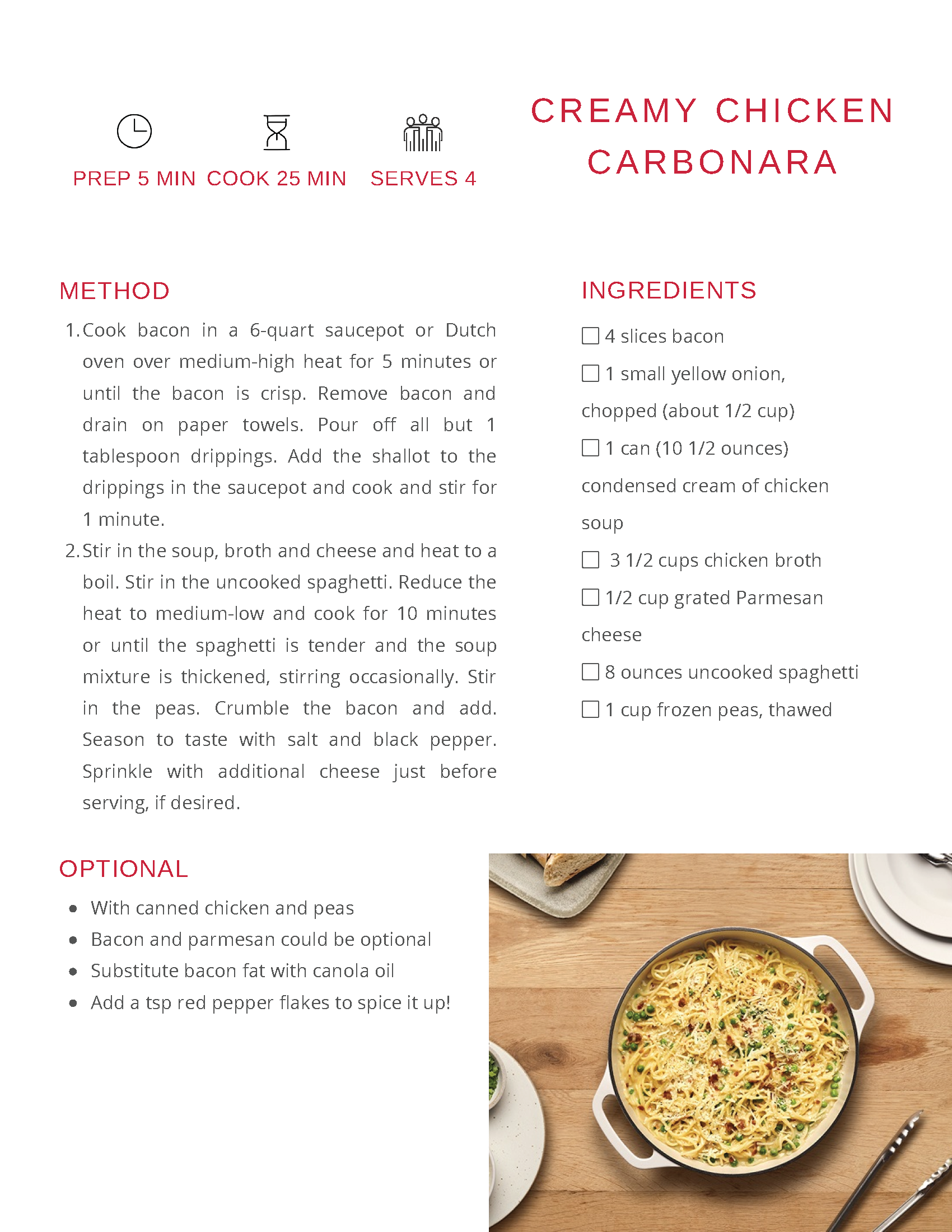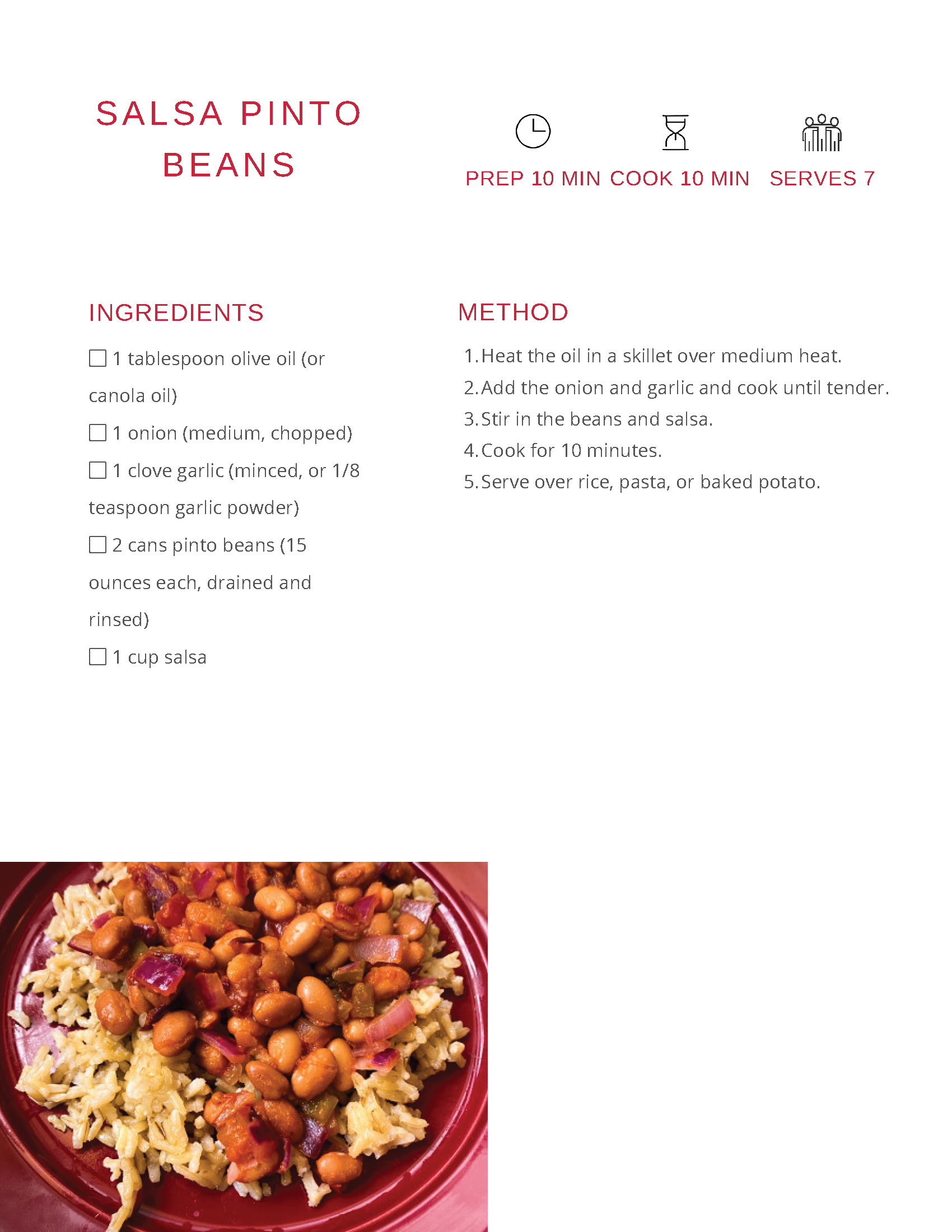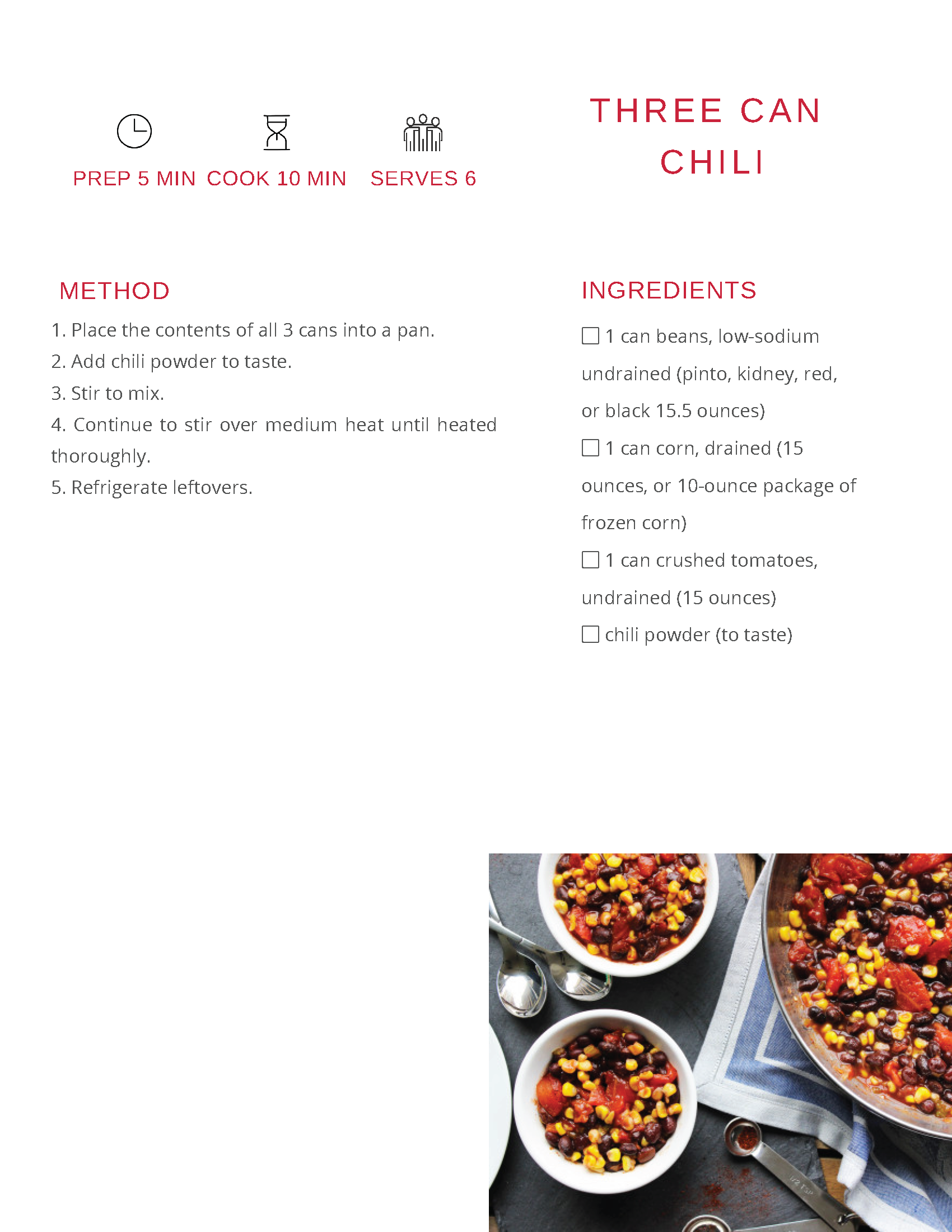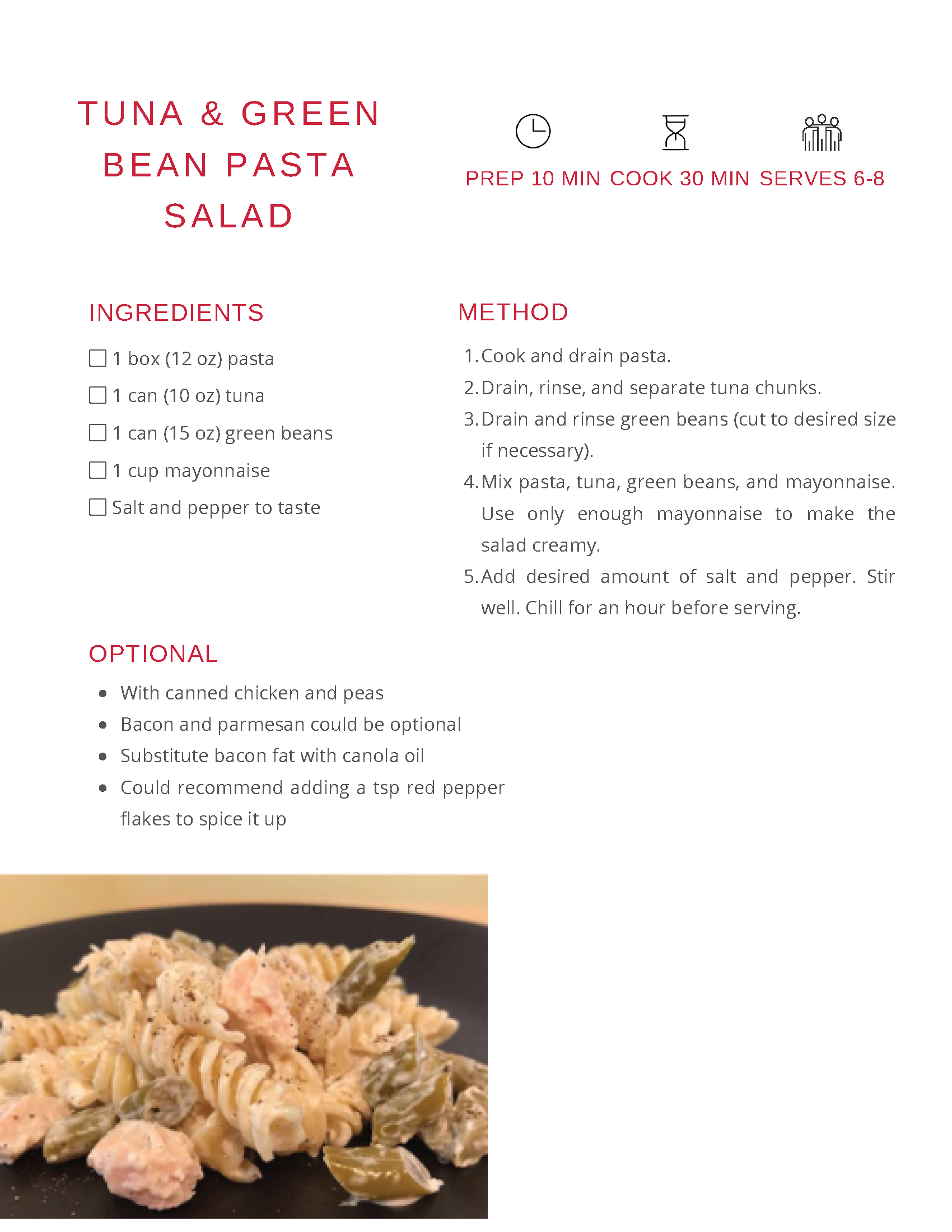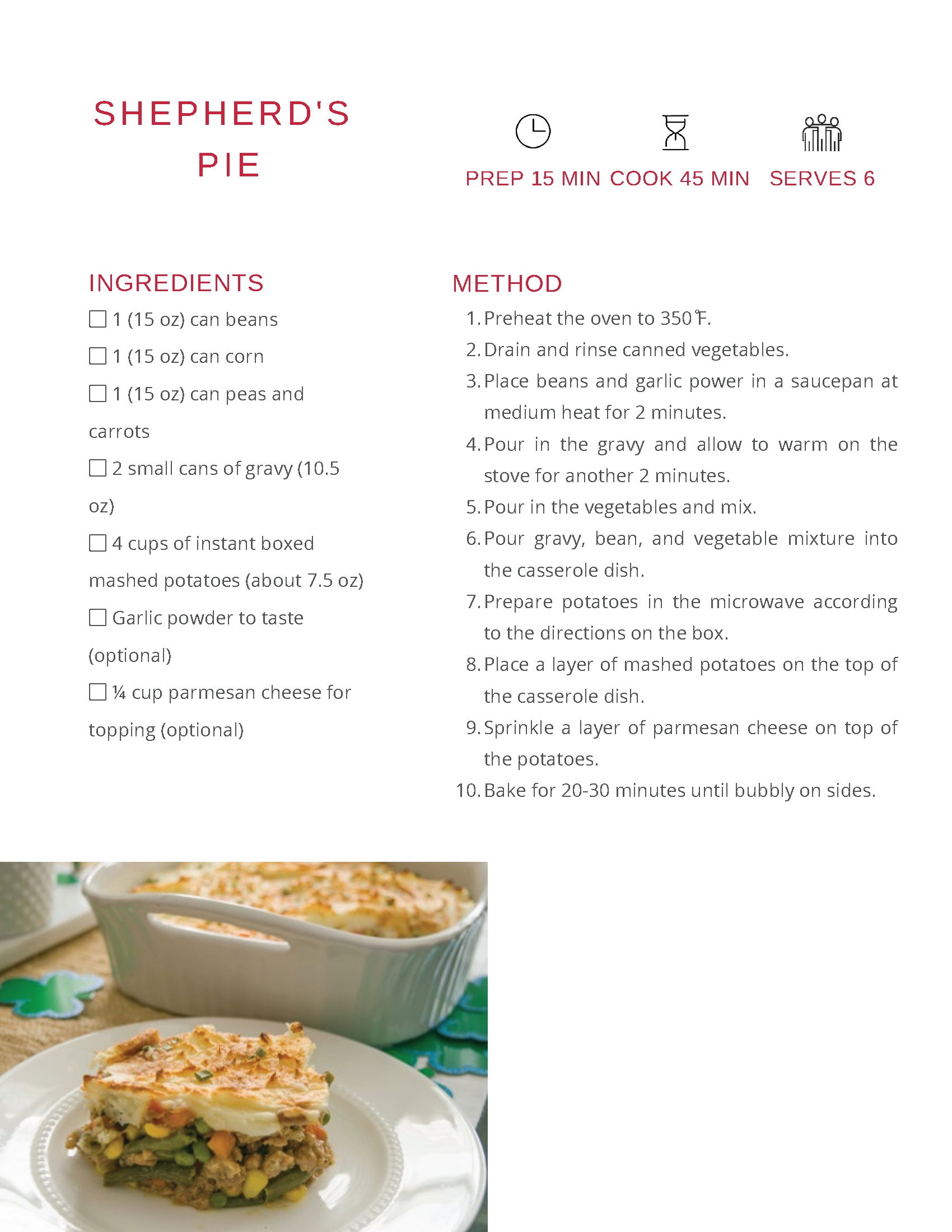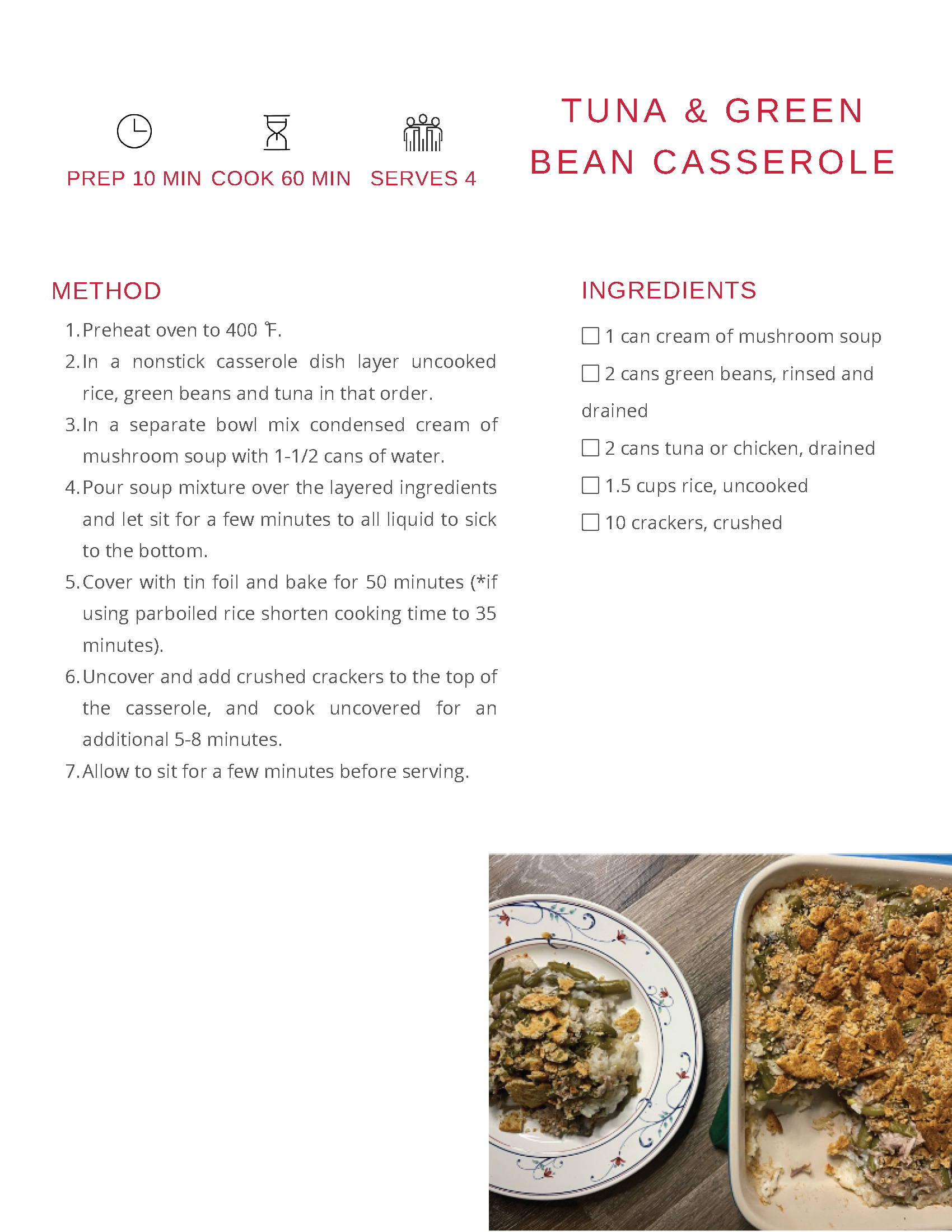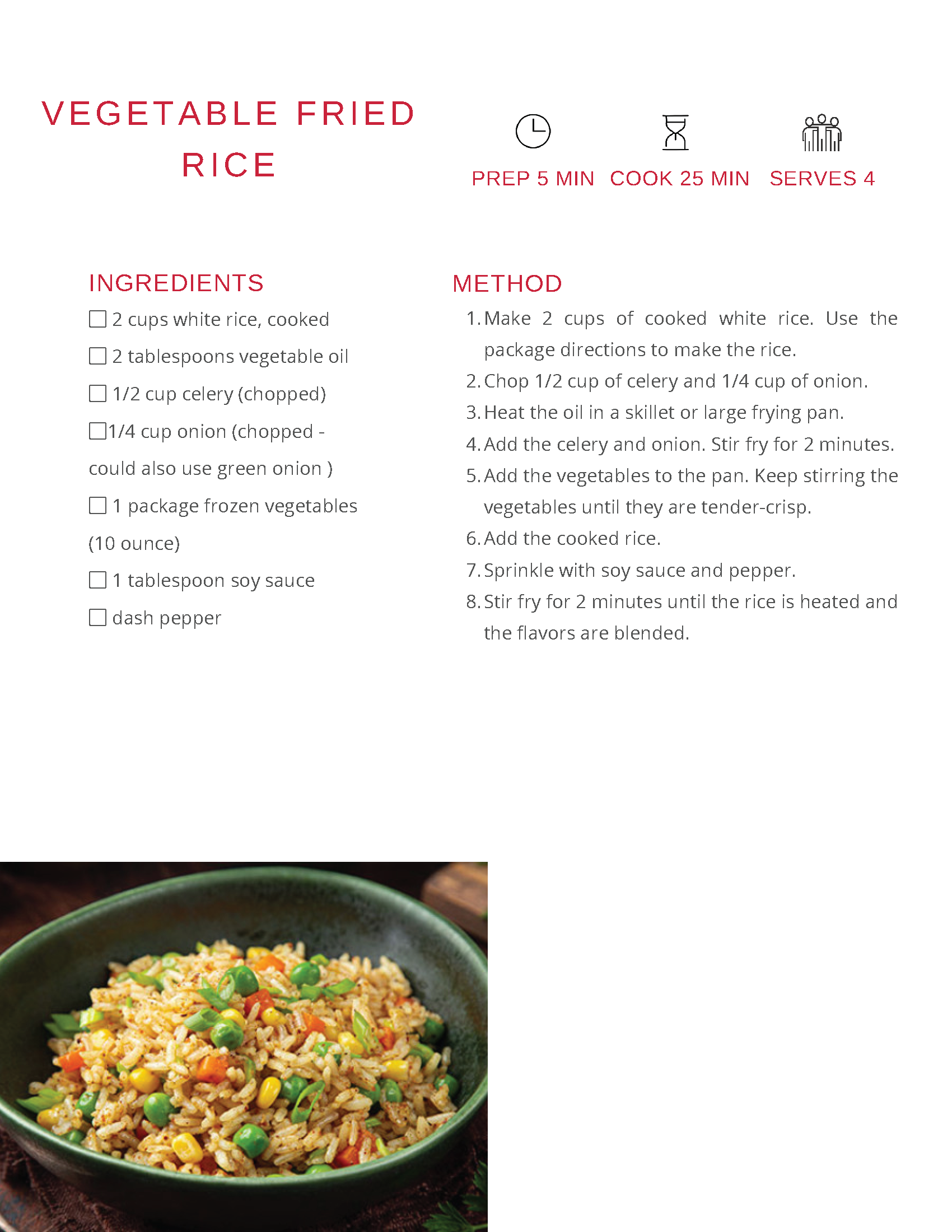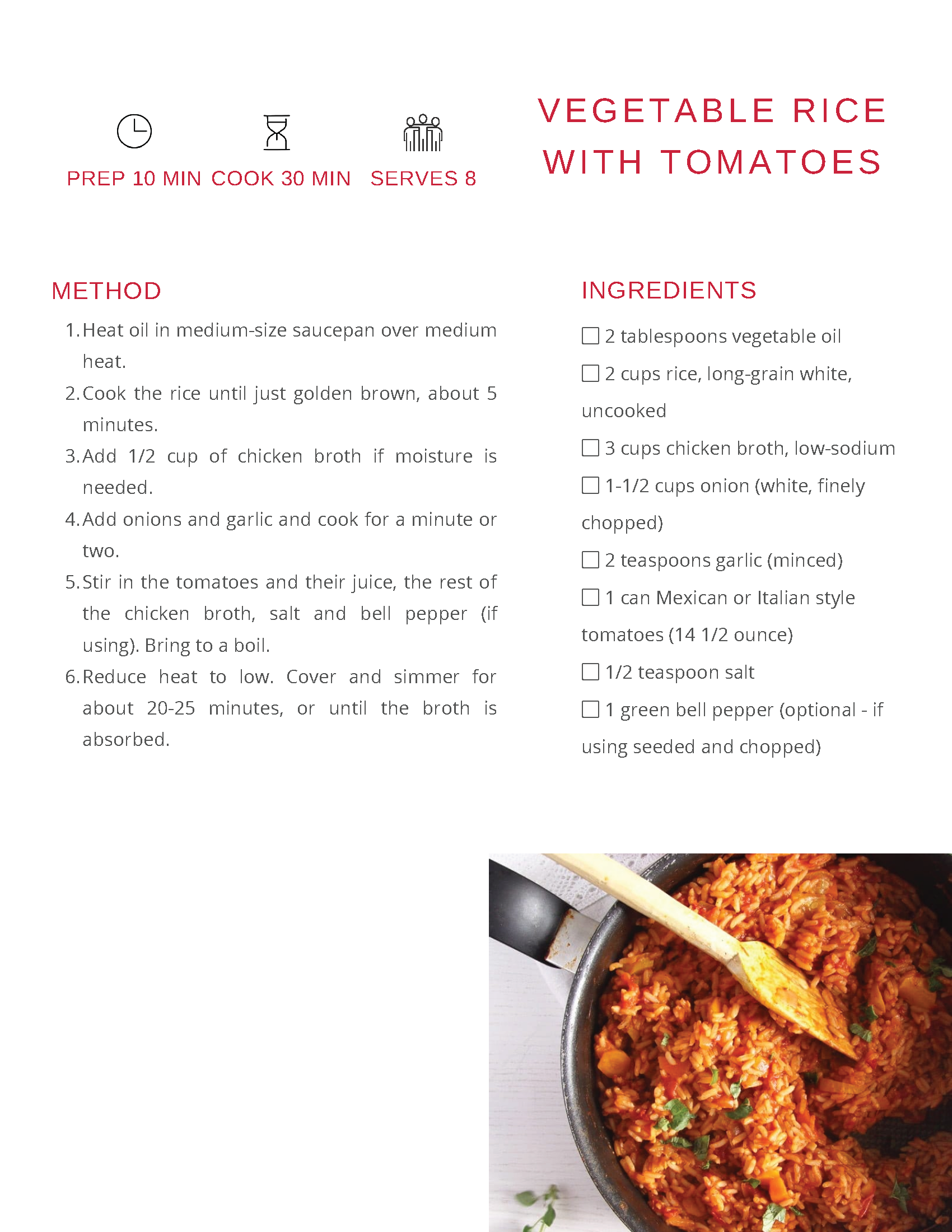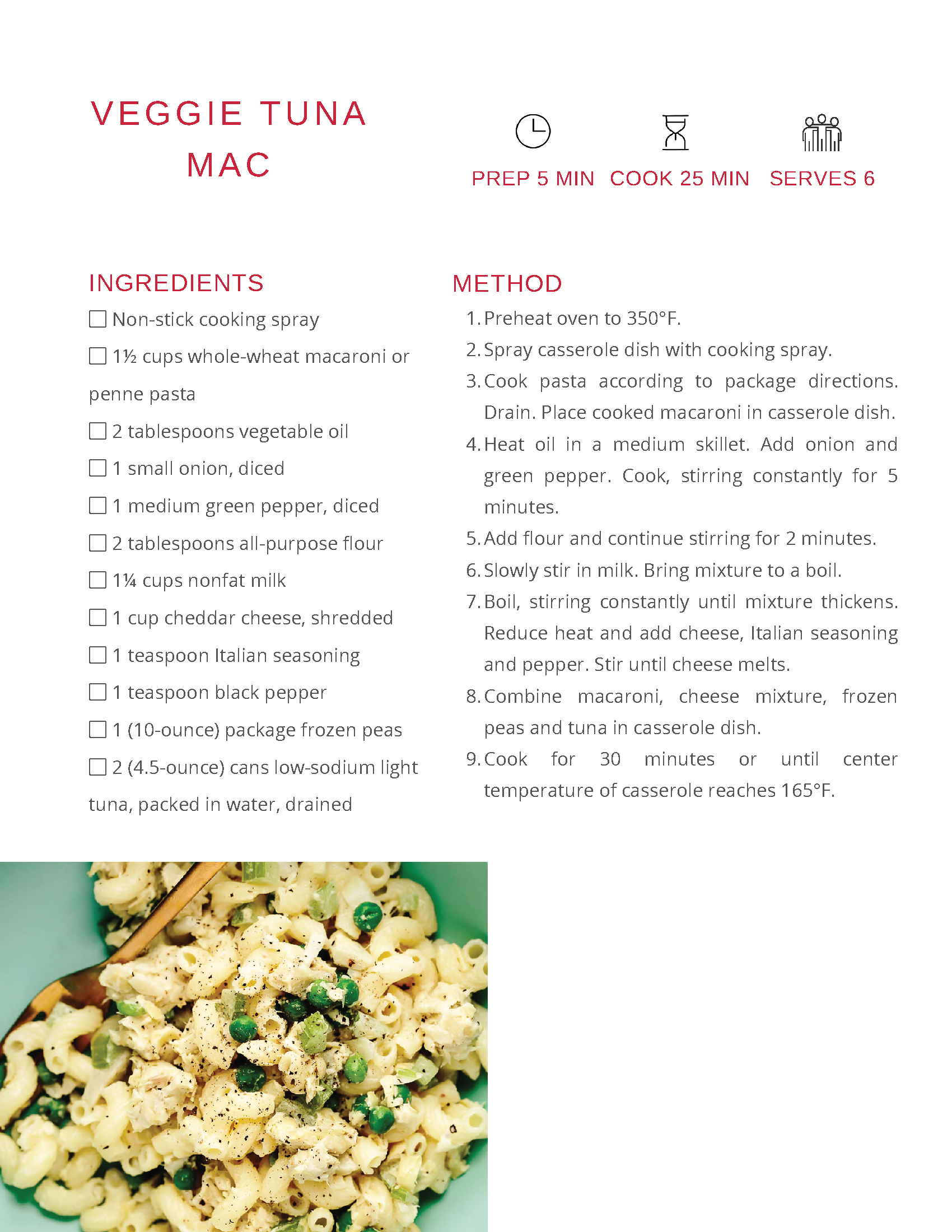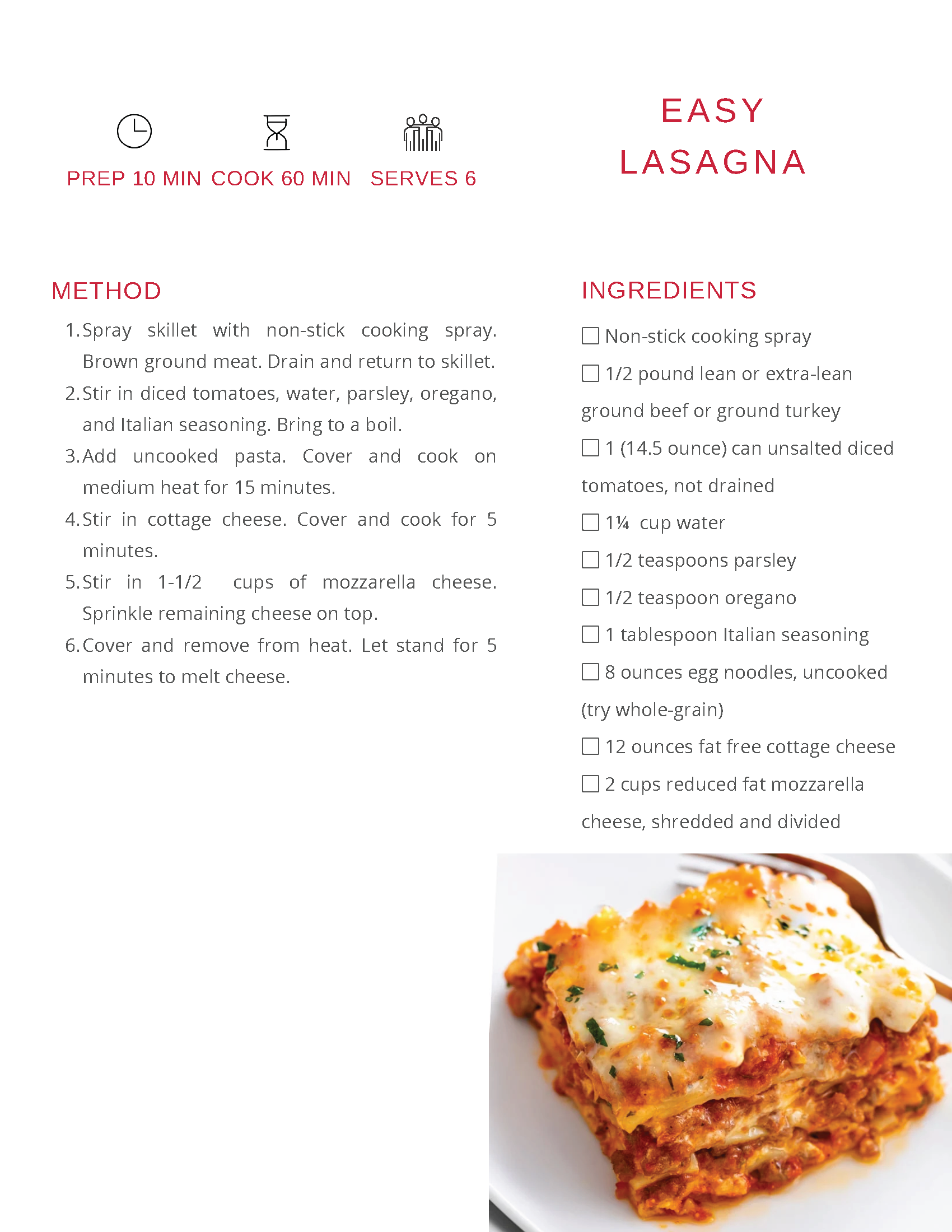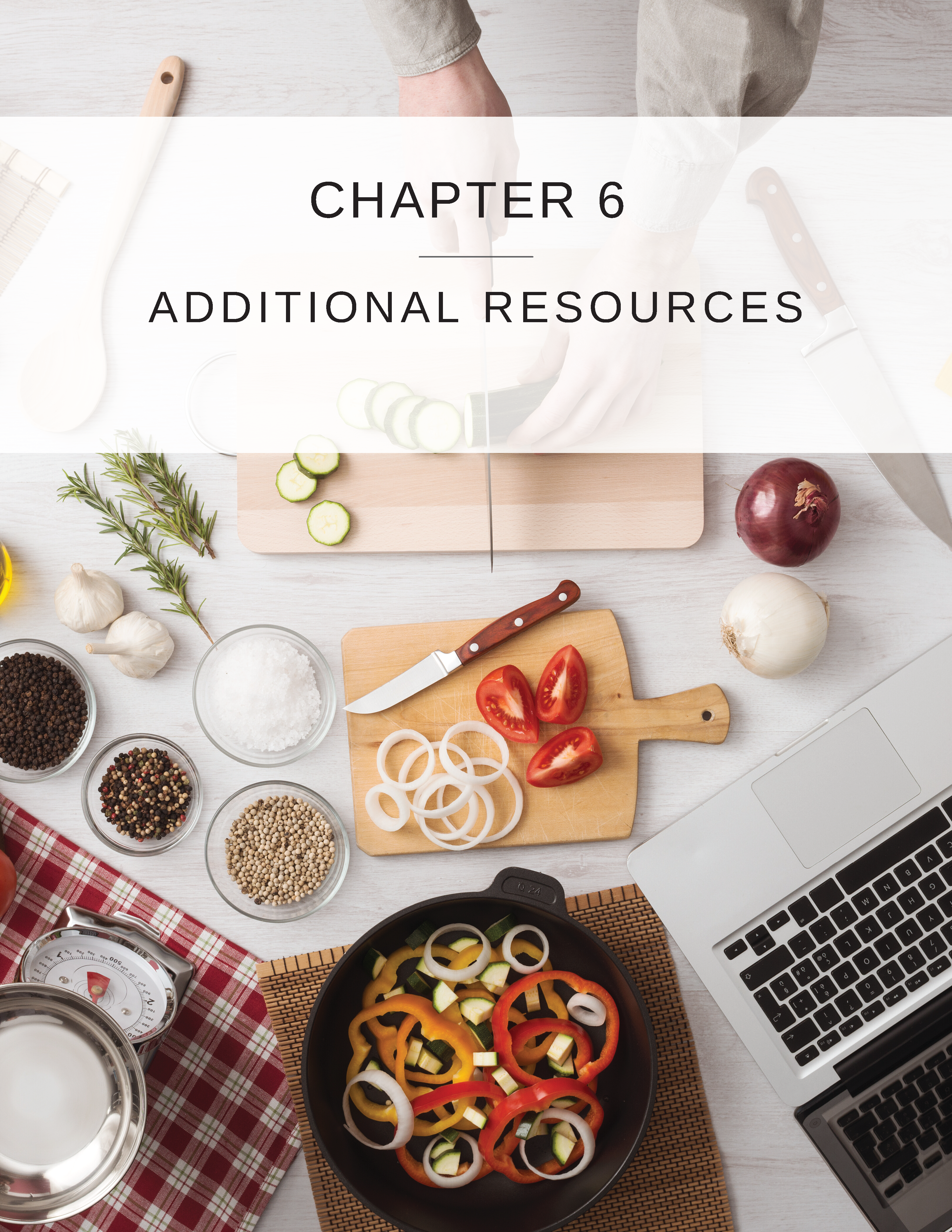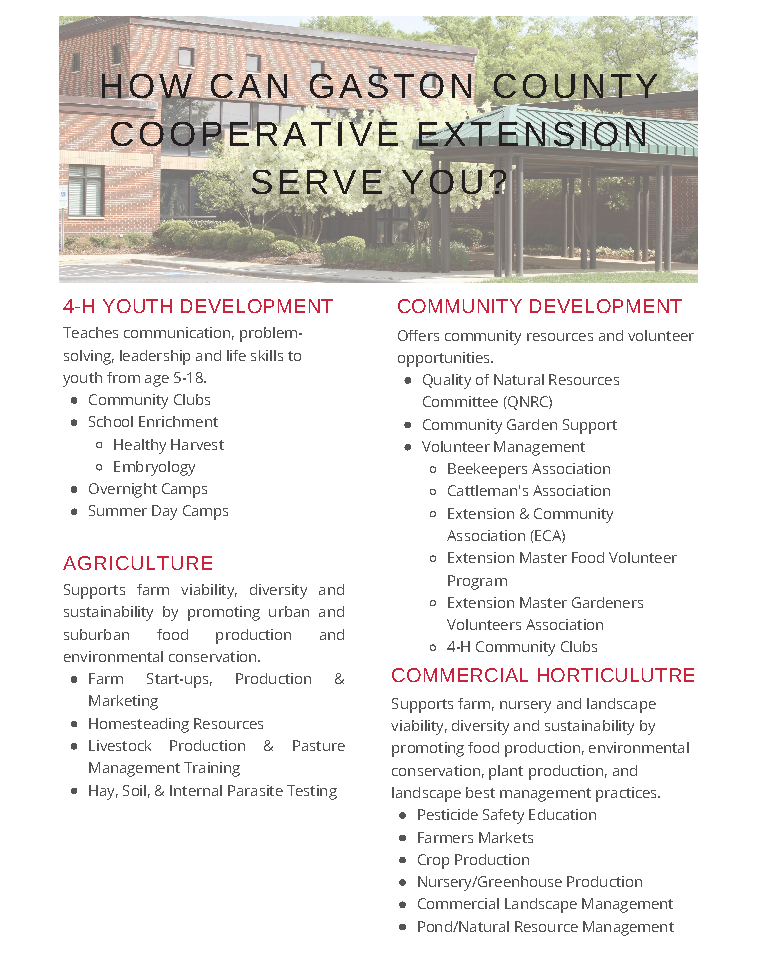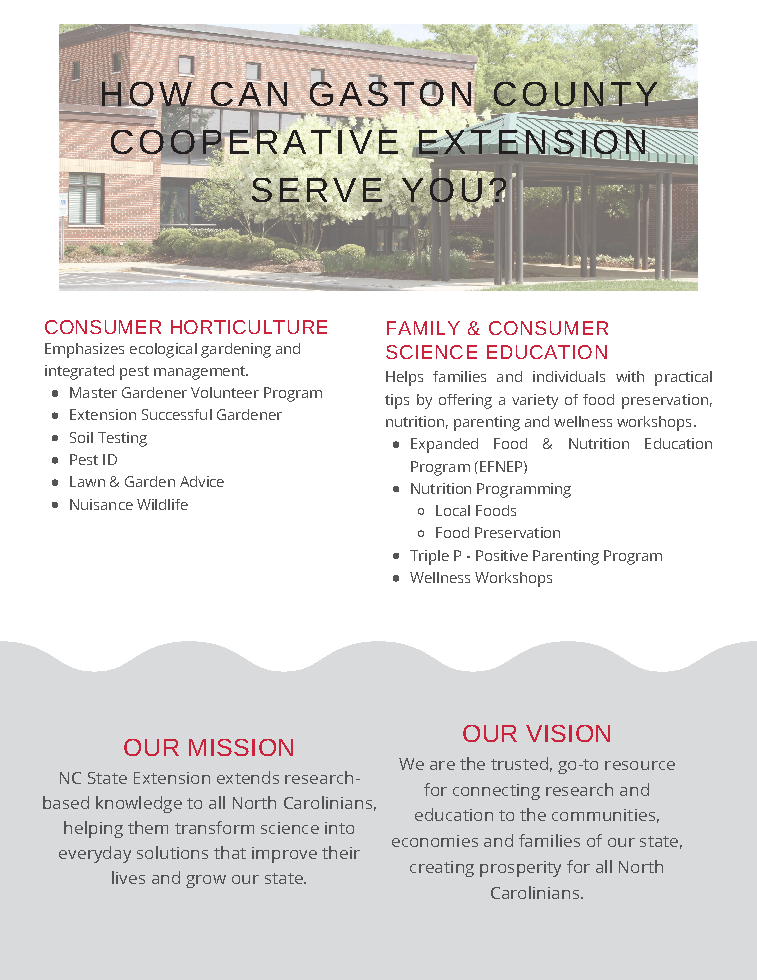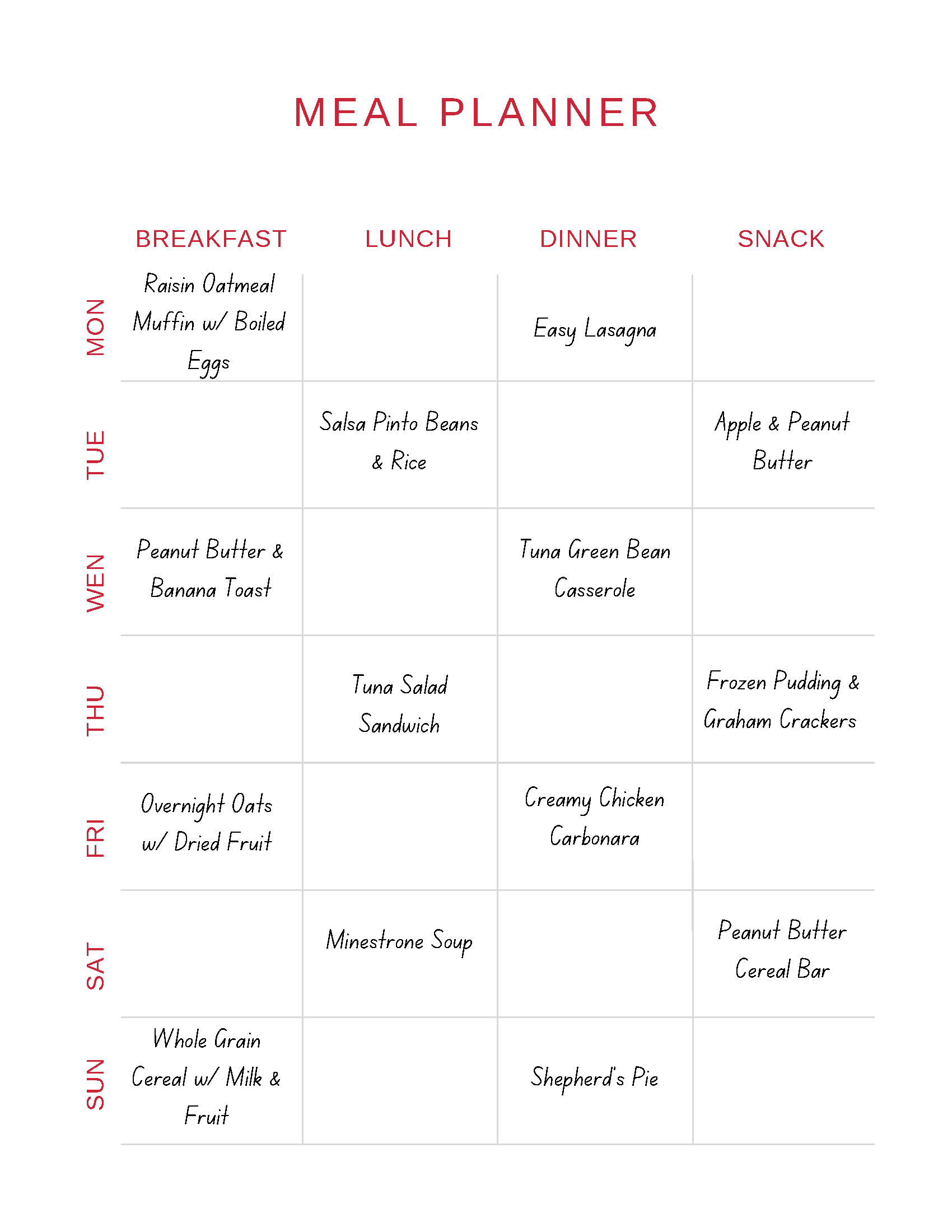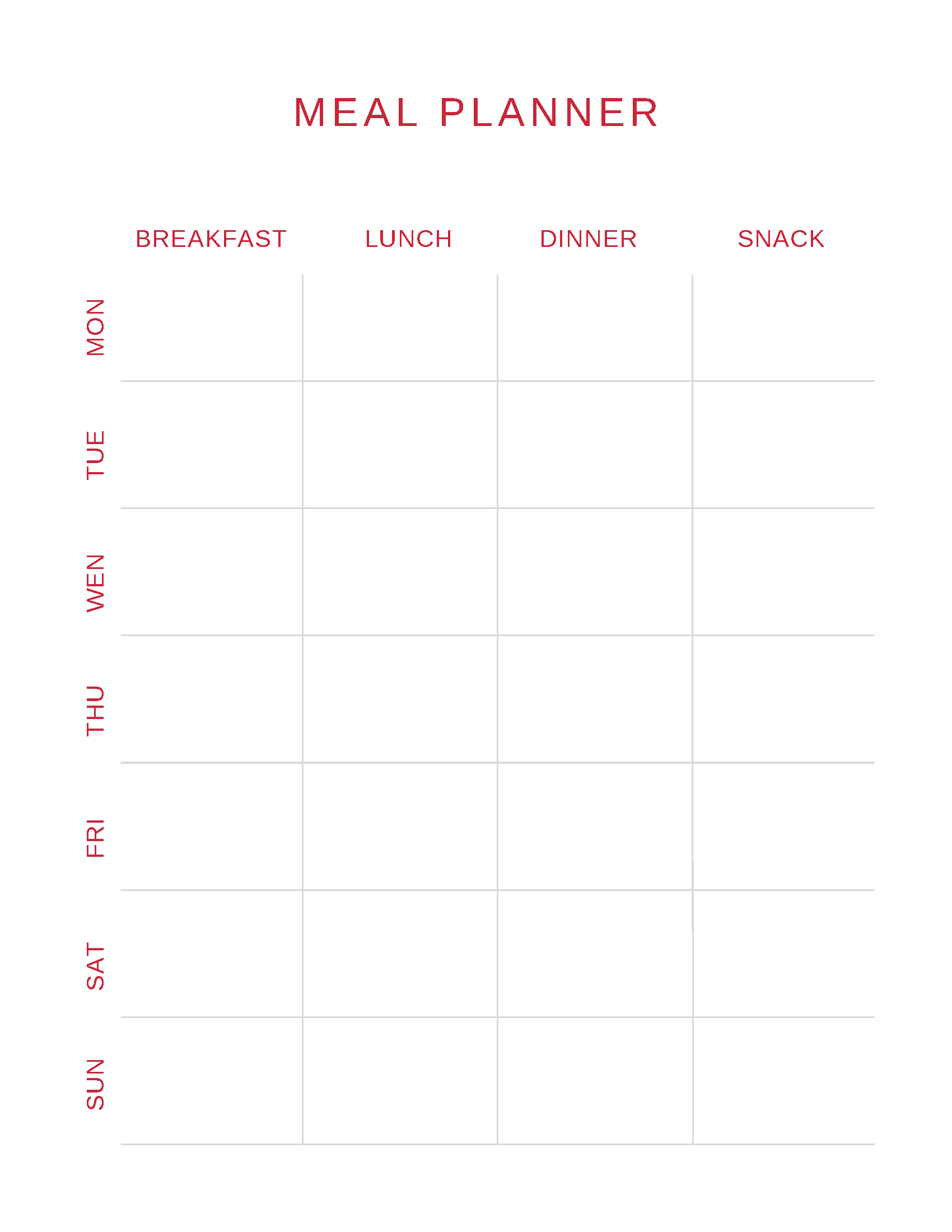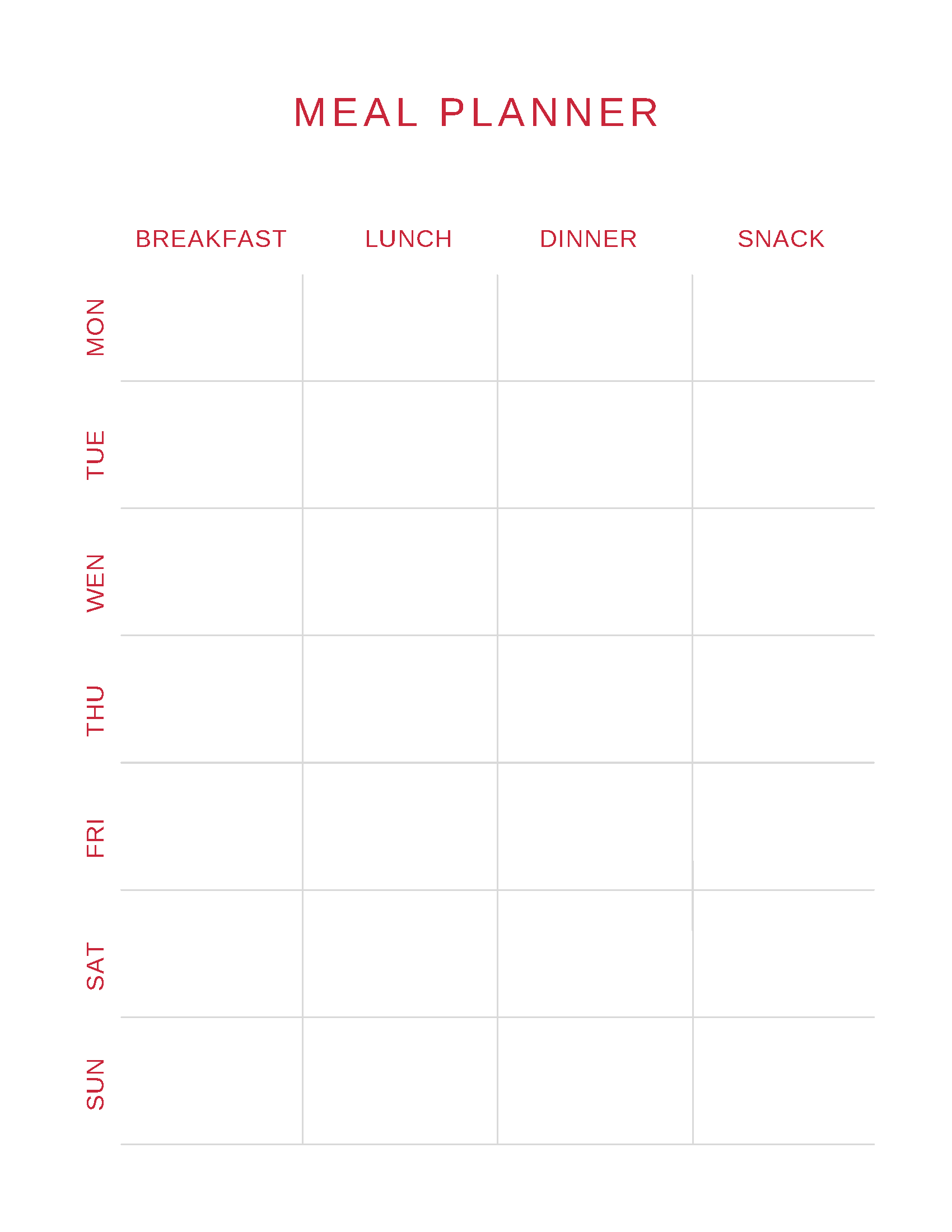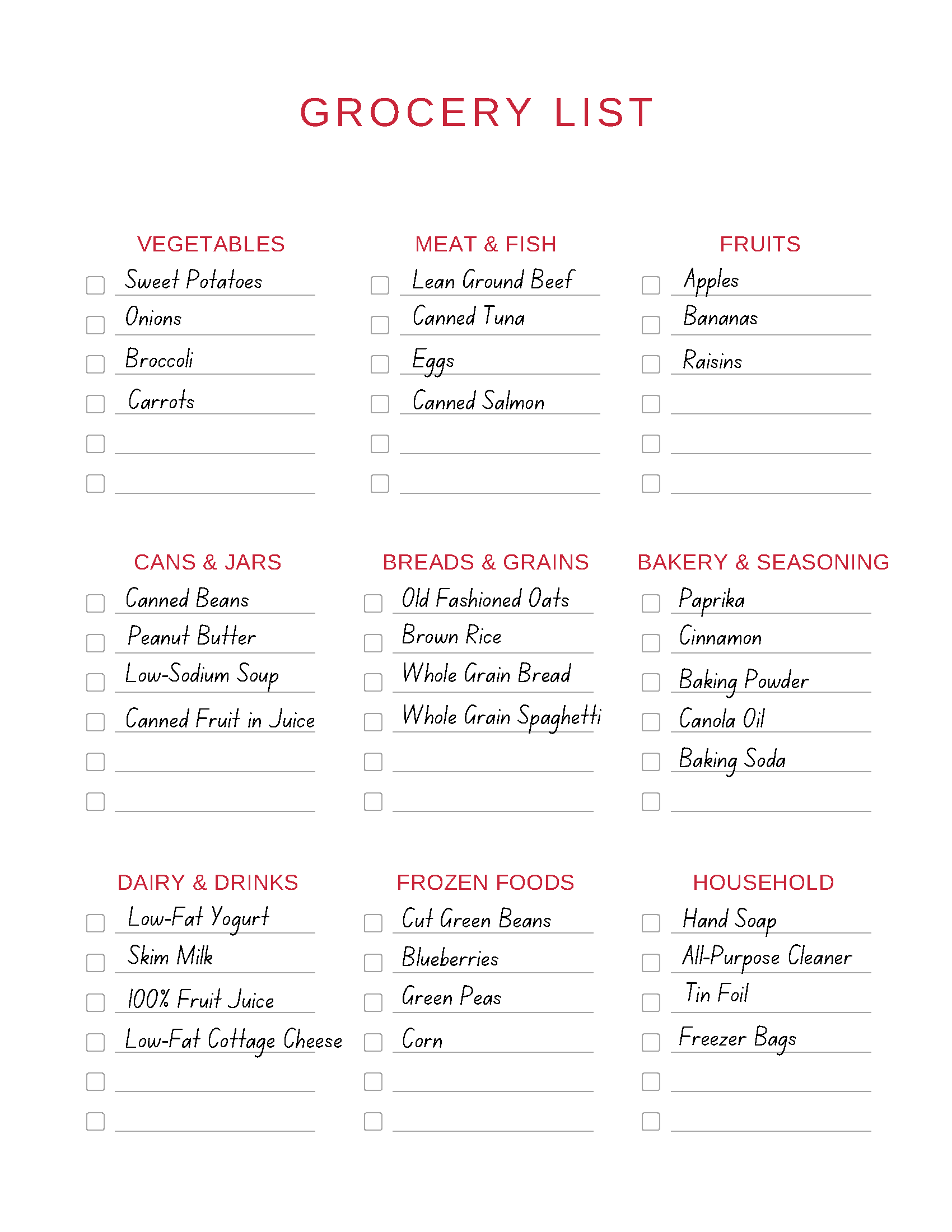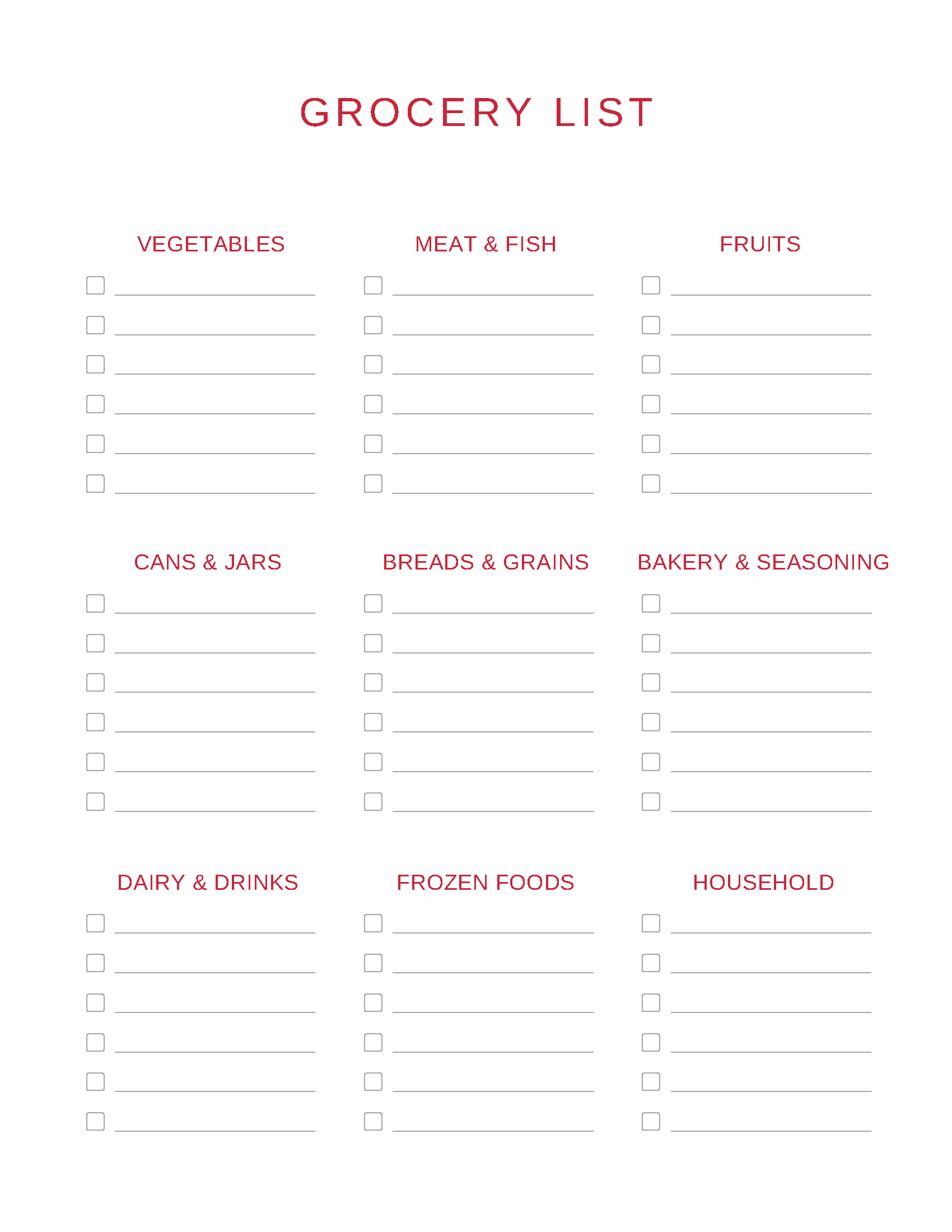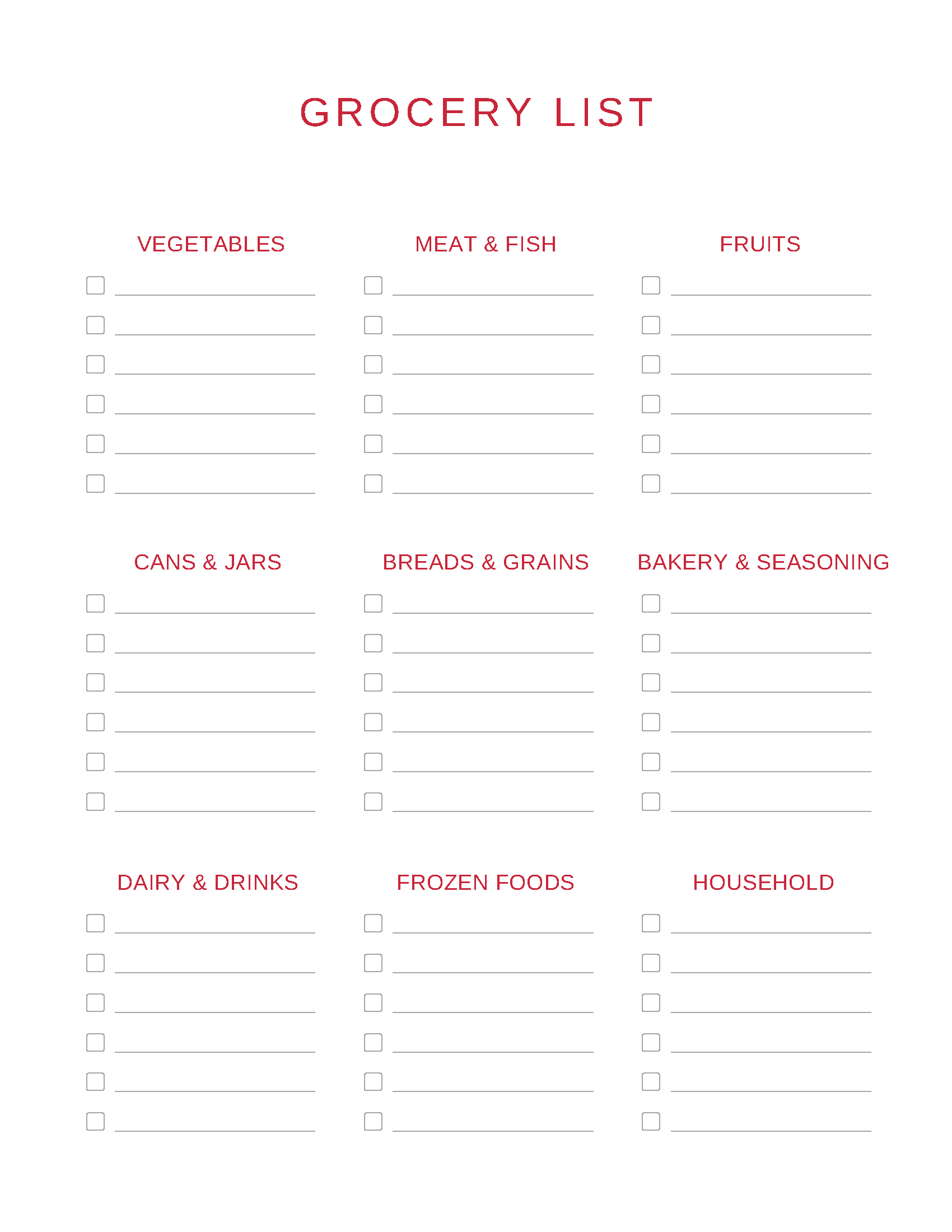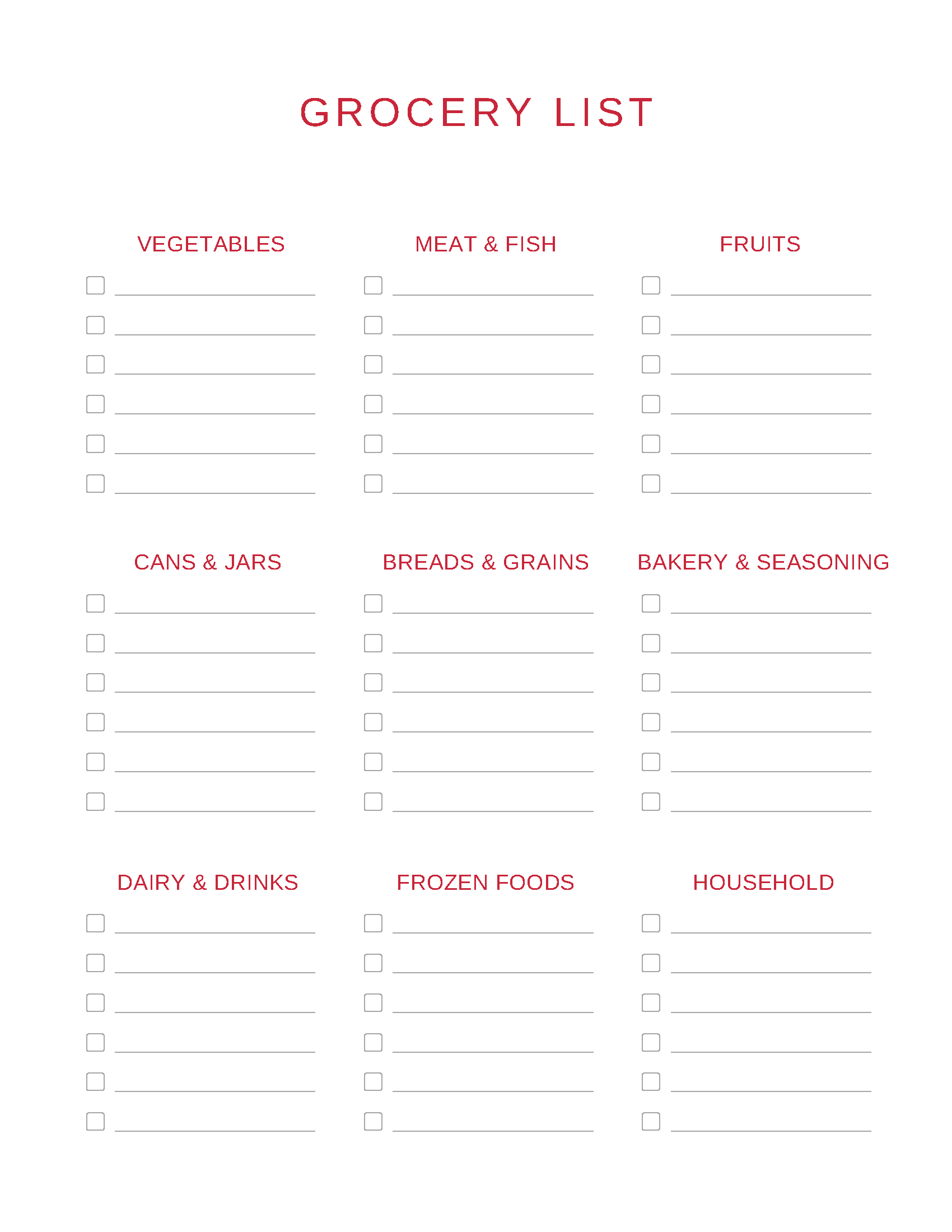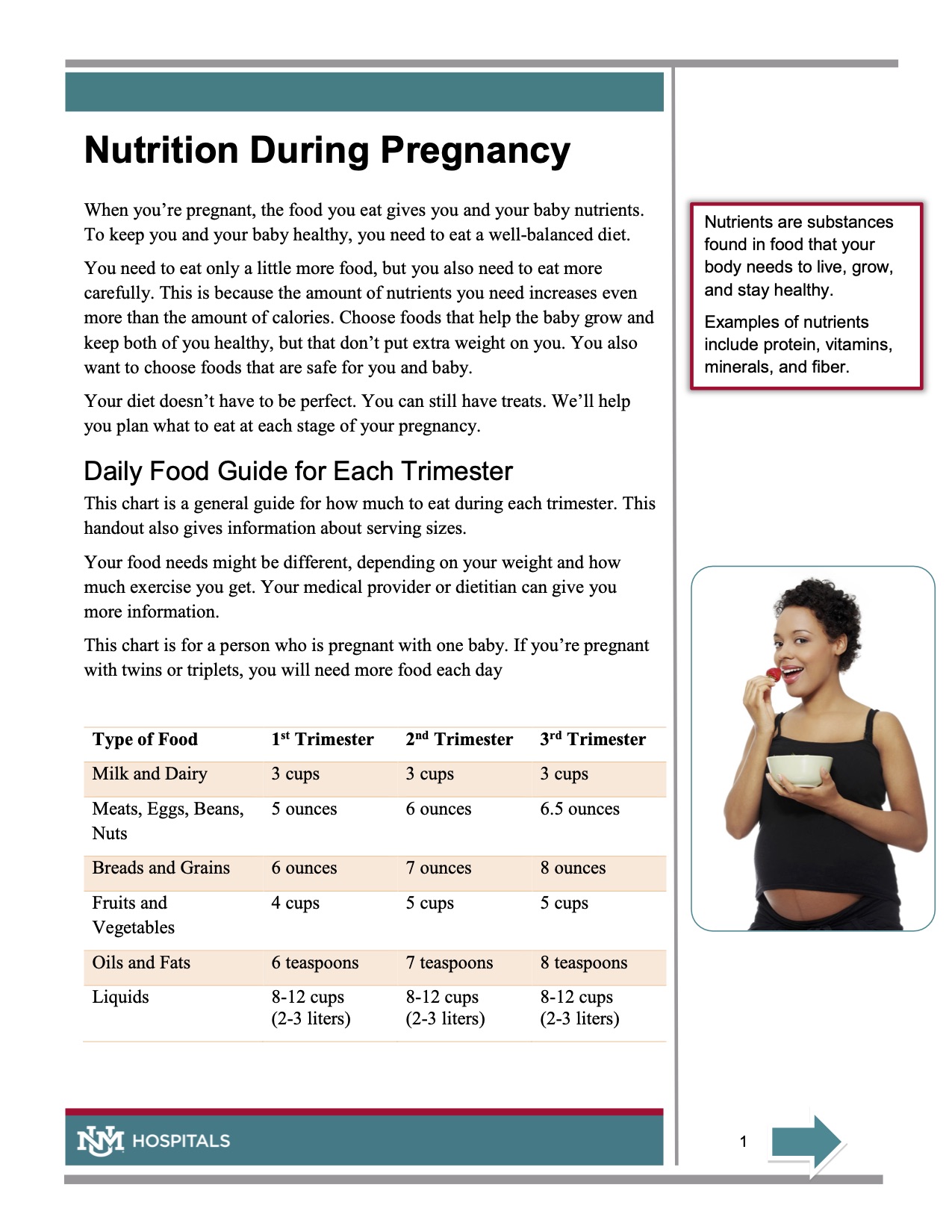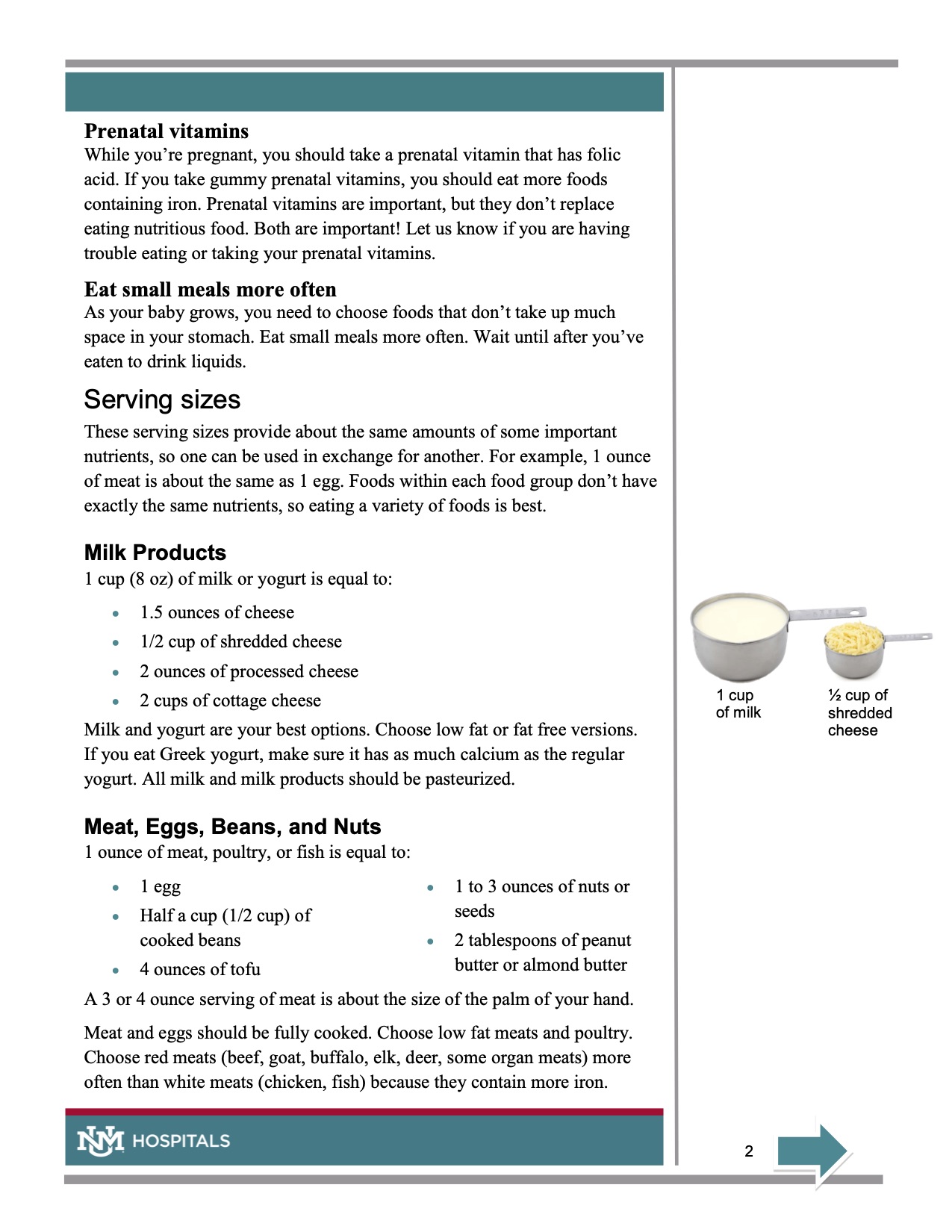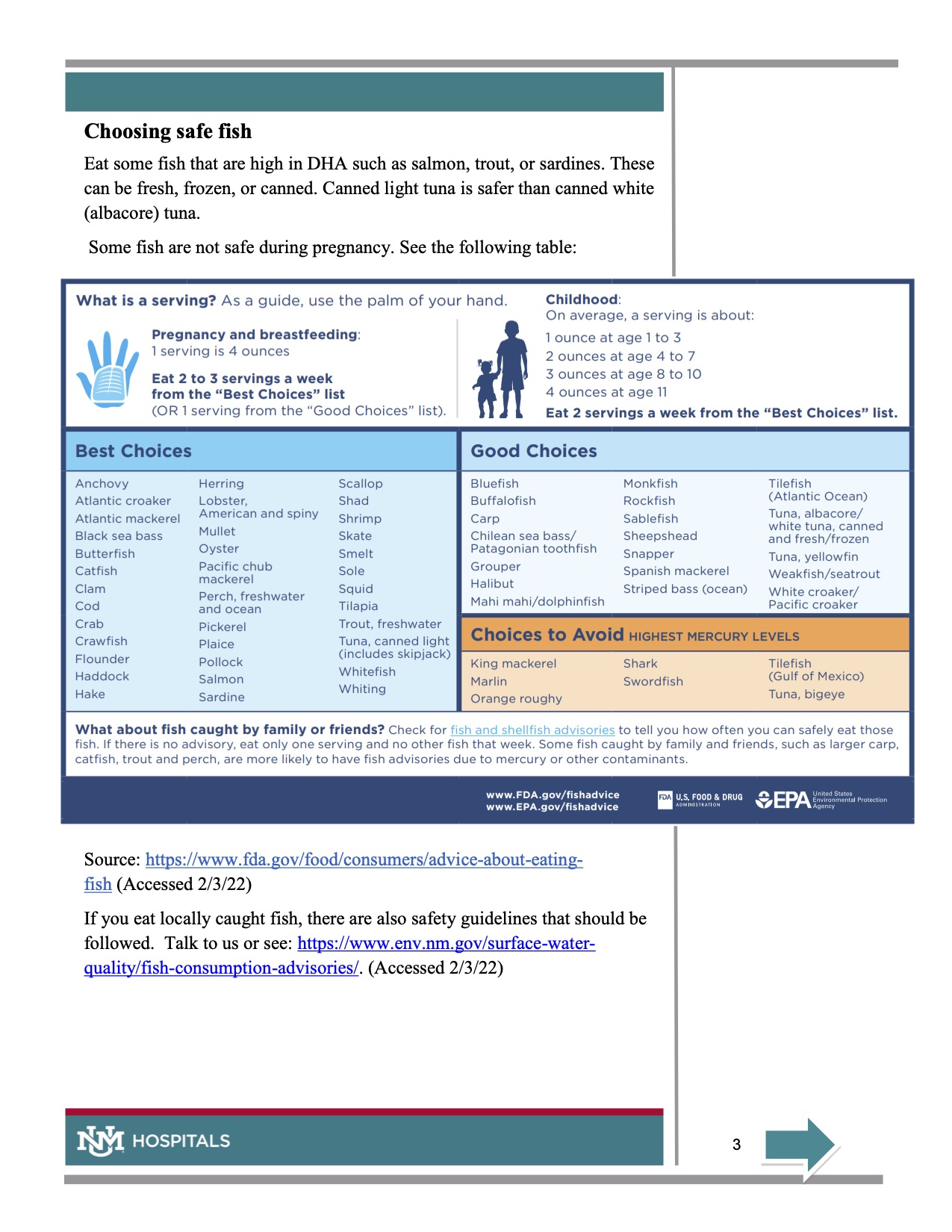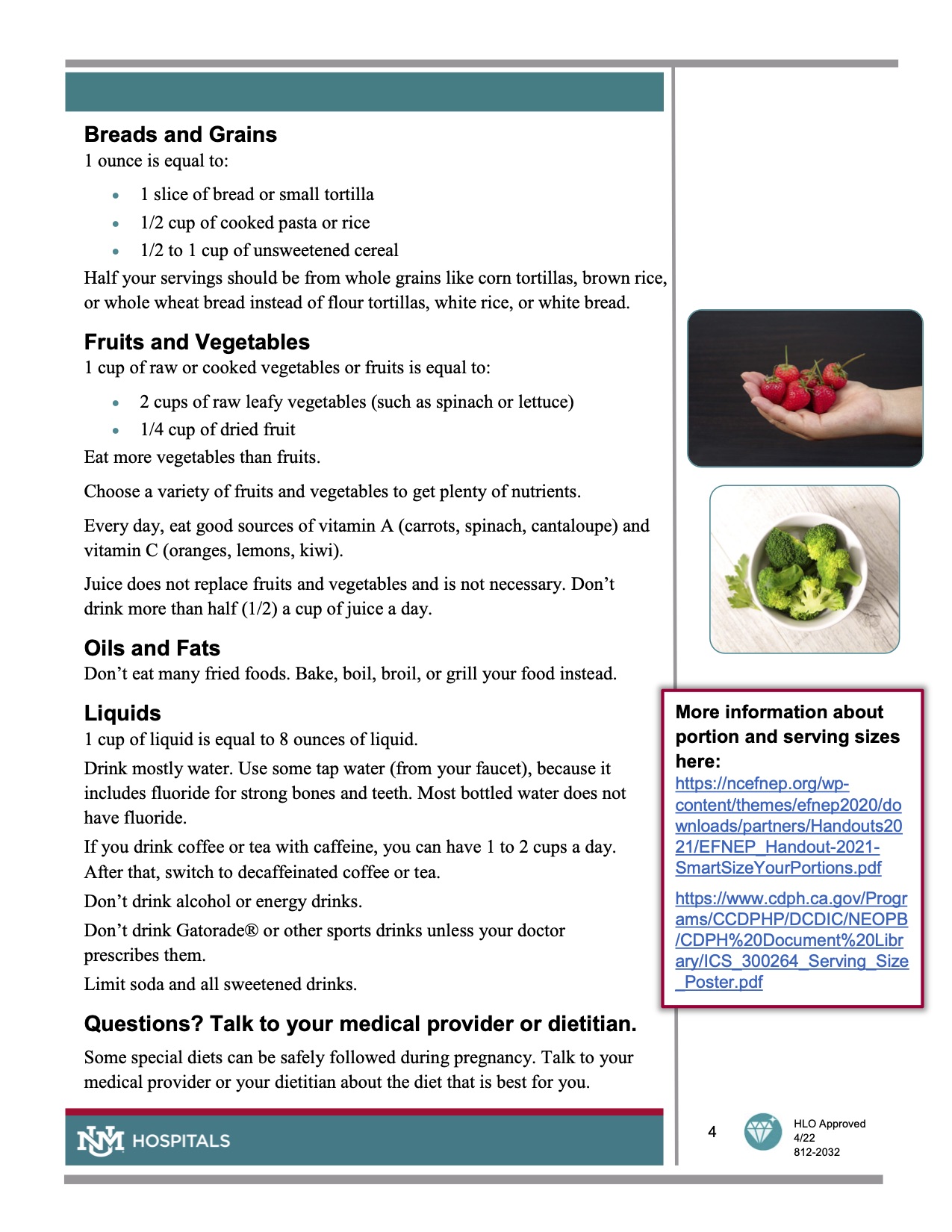New Year, New Habits

When it comes to adding a healthy diet to your family’s life, it can seem hard at first. It is important to remember that there is not one perfect diet for everyone, nor is it something that can be reached in one day. Eating a healthy diet, or following a healthy lifestyle, is a result of everyday choices that turn into daily habits. New habits can always be adopted, and what better time to do that than the New Year?
One of the simplest ways to eat a healthier diet is to increase the amount and type of fruits and vegetables you and your family consume. In order to do this it is important to have fruits and vegetables ready to go so that you can add them to every meal. Thankfully there are different options for buying fruits and vegetables like fresh, frozen, and canned. Buying fresh produce, like apples or carrots, makes for a quick and nutritious snack. Buying frozen produce, like assorted vegetables or mixed berries, will help you to always have a fruit or vegetable on hand because they last much longer. The same goes for canned produce, like corn or tomatoes, as they store well and can easily be added to soups and stews.
Setting small goals is a great place to start to increase your family’s fruit and vegetables. The ideas for goals are limitless, but here are a few you could start with.
- Try one new fruit or vegetable each week during the month of January.
- Have a fruit and/or vegetable at every meal for 1 week.
- Find one new way to add fruits and vegetables into your meals every week during the month of January.
- Examples:
- Add spinach to smoothies
- Top cereal with fruit
- Add mushrooms or peppers to egg dishes
- Examples:
Eating more fruits and vegetables is great for your health, and finding easy, enjoyable ways to add more to your diet is important. Remember, start small, and before you know it you will have added more fruits and vegetables! What goals are you and your family going to set to eat more fruits and vegetables this year?
Written by: Libby Robertson, EFNEP Volunteer
October: Pumpkin

Pumpkin is nutrient-rich and packed with beta-carotene, which is converted to vitamin A in our bodies. Vitamin A helps us fight infections and maintain healthy bones, skin, and vision. It also acts as an antioxidant, meaning it protects our cells from damage. Pumpkins contain fiber, which helps keep us regular. They also have potassium, which helps regulate blood pressure. Canned pumpkin has the same health benefits as fresh pumpkin and makes for a great option to have on hand.
Storing and Choosing Pumpkin:
- Look for a pumpkin that has a hard rind and no soft spots.
- Store whole pumpkins in a cool, dark, dry place.
- After pumpkin is cut, cover it in plastic wrap and store in the fridge. They will last for about 2 days.
- Choose canned pumpkin, as it has a very long shelf life when left unopened. When opened, it lasts in an air-tight container for 3-4 days in the fridge.
Try out this pumpkin pudding recipe perfect for fall! There is no cooking required and your kids.
Written by: Priya Samuel, EFNEP student volunteer
September: National Food Safety Education Month
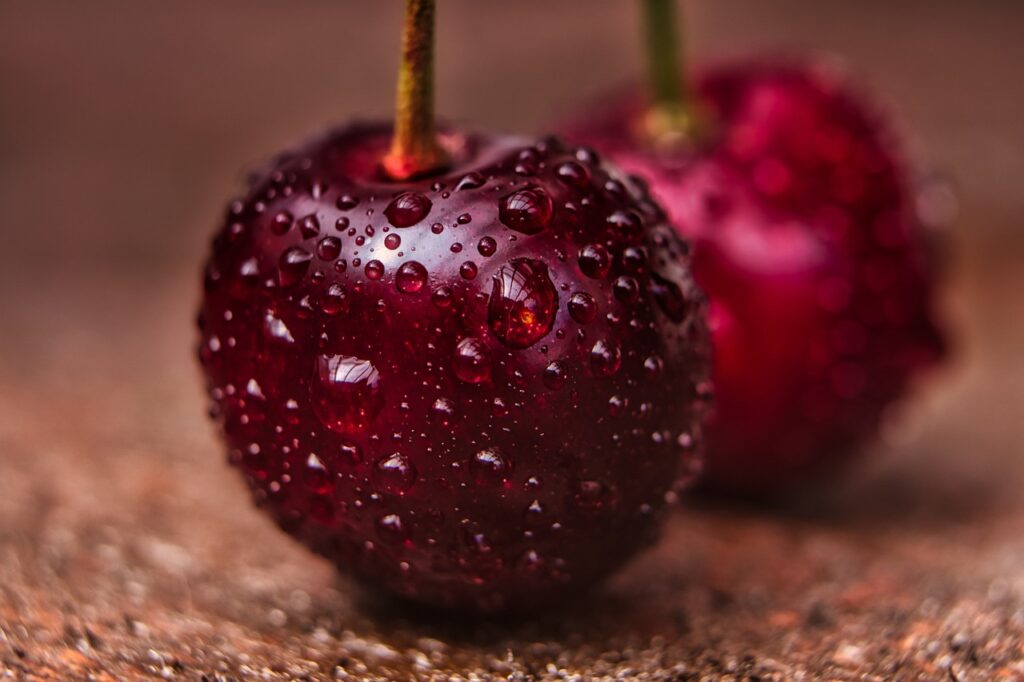
September is National Food Safety Education Month! This month is all about taking steps to prevent foodborne illness, also known as food poisoning. Symptoms of foodborne illness can include: diarrhea, vomiting, abdominal pain, headache, and fever.
Below are easy steps to prevent foodborne illness in your kitchen:
- WASH: your hands, cutting boards, dishes, and counters with warm, soapy water.
- SEPARATE: your produce from raw meat, poultry, and eggs in the fridge.
- COOK: Use a thermometer to make sure meat is cooked properly:
- Beef and pork: 145 °F
- Fish: 145 °F
- Ground Beef or Pork: 160 °F
- Turkey and Chicken: 165 °F
- CHILL: Refrigerate meat, poultry, eggs, and produce within 2 hours of purchasing or cooking.
Written by: Priya Samuel, EFNEP student volunteer
Vitamin A
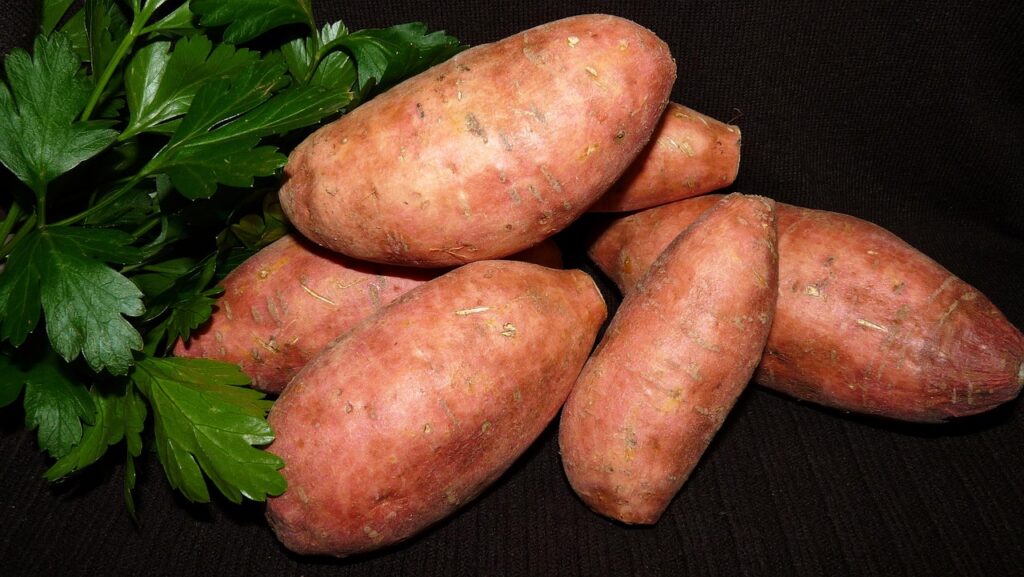
Vitamin A is a nutrient important for growth, immunity, and vision. Vitamin A has antioxidant properties, which can help protect our cells from damage and lower our risk of some cancers and heart disease.
Since our bodies cannot make vitamin A, we need to get it from our food. Foods like carrots, cantaloupe, and sweet potato contain beta-carotene. Our bodies convert beta-carotene into vitamin A.
Other sources of Vitamin A include:
- Spinach
- Liver
- Dairy products (milk and cheese)
- Fish (herring and salmon)
- Eggs
It is recommended that adult men get at least 900 micrograms (mcg) of vitamin A daily. Women should get at least 700 mcg of vitamin A daily. If you think you might not be getting enough vitamin A, check with your healthcare provider.
Sources: Mayo Clinic
Written by: Priya Samuel, EFNEP Student Volunteer
Cherries
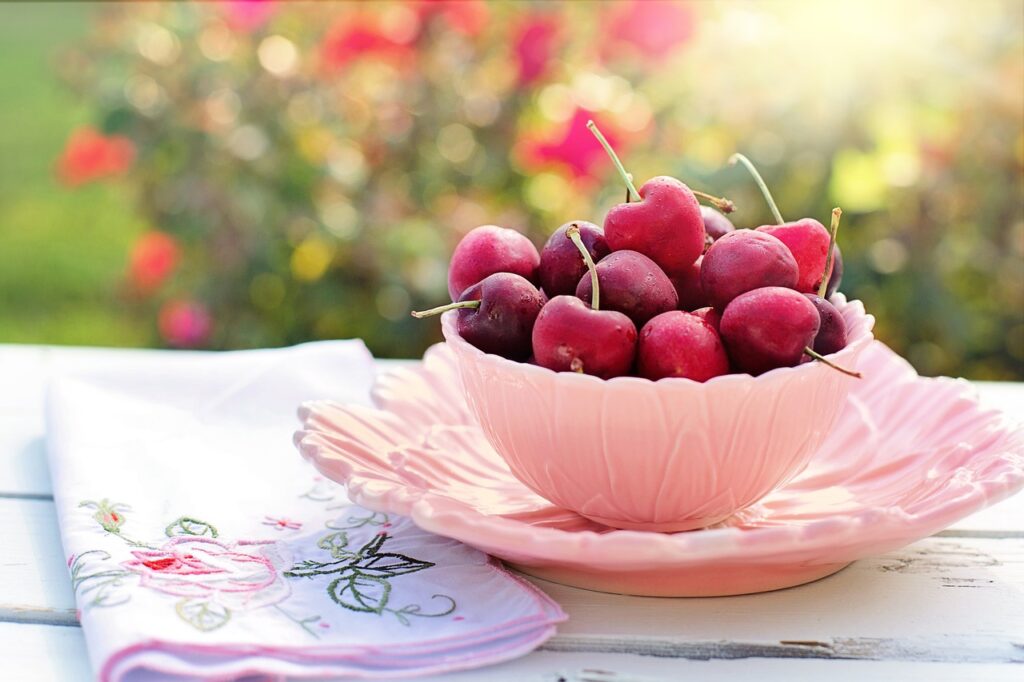
Cherries are high in antioxidants and contain vitamin C and potassium. Antioxidants protect our cells from damage. Vitamin C boosts immunity while potassium maintains normal blood pressure.
Cherries also may encourage more restful sleep. They contain melatonin, a hormone that helps balance our sleep-wake cycles.
Storing and Choosing Cherries:
- The freshest cherries are darker in color with green stems.
- Choose large, firm cherries.
- Store cherries in your fridge away from foods with a strong odor.
- Wash cherries right before you eat them.
- Purchase frozen cherries, they are usually a better deal and will last longer.
How to add cherries to your diet:
- Add frozen cherries to a fruit smoothie.
- Bake cherries into an oatmeal bar.
- Toss cherries into a salad.
- Try these Cherry Puff Pancakes from MyPlate!
Written by: Priya Samuel, EFNEP student volunteer
Asparagus
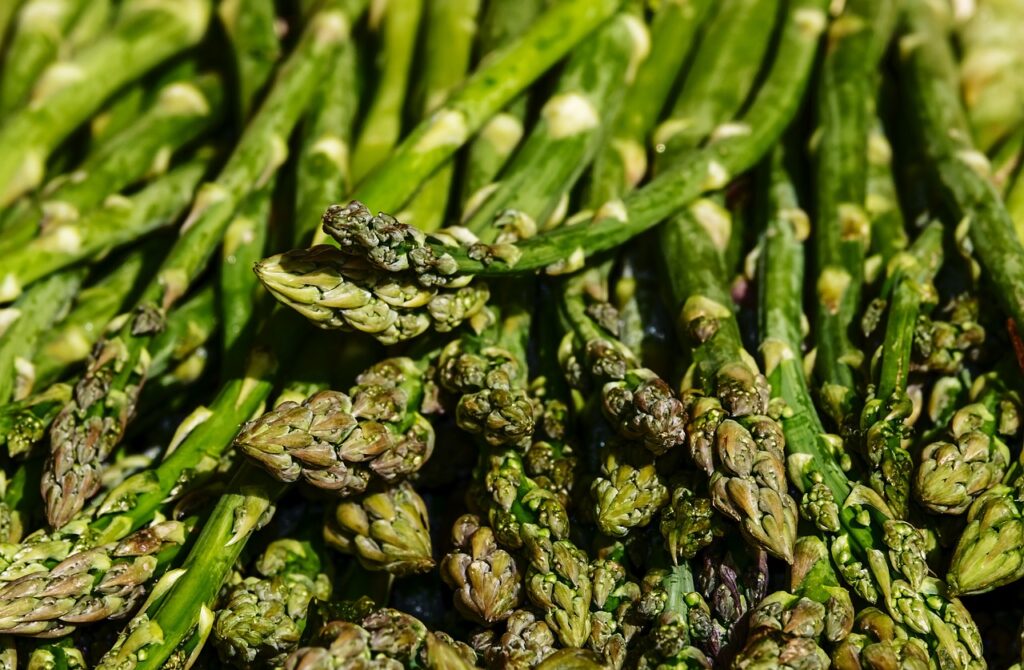
Asparagus is an excellent source of Vitamin K and contains fiber and antioxidants. Vitamin K helps keep our bones strong. Fiber keeps us regular while antioxidants protect our cells from damage.
Storing and Choosing Asparagus:
- Asparagus stalks should be plump and tips should be pointy.
- Asparagus spears should be firm and straight.
- Refrigerate asparagus in an unsealed plastic bag.
How to Add Asparagus to your diet:
- Roast asparagus in the oven.
- Serve with grilled fish.
- Sprinkle it with cheese, and bake it.
Here is a recipe for a special chicken and rice dish with asparagus: Asparagus Mandarin Orange Chicken and Rice
Written by: Priya Samuel, EFNEP student volunteer
Physical Activity for Children

Children need 60 minutes of physical activity every day! Being active helps children build strong muscles and bones, control weight, and even focus in school. Physical activity can be spread out throughout a child’s day in ways like:
- Biking or walking to school
- Playing active games like tag or hide and seek
- Joining sports teams at school or local community recreation centers
- Helping out with chores like raking leaves or washing the car
Check out children’s work-out videos on YouTube for more ideas! Remember to check with their doctor before beginning any exercise routine and encourage children to stop if you feel any discomfort.
Written by: Priya Samuel, EFNEP student volunteer
American Heart Month
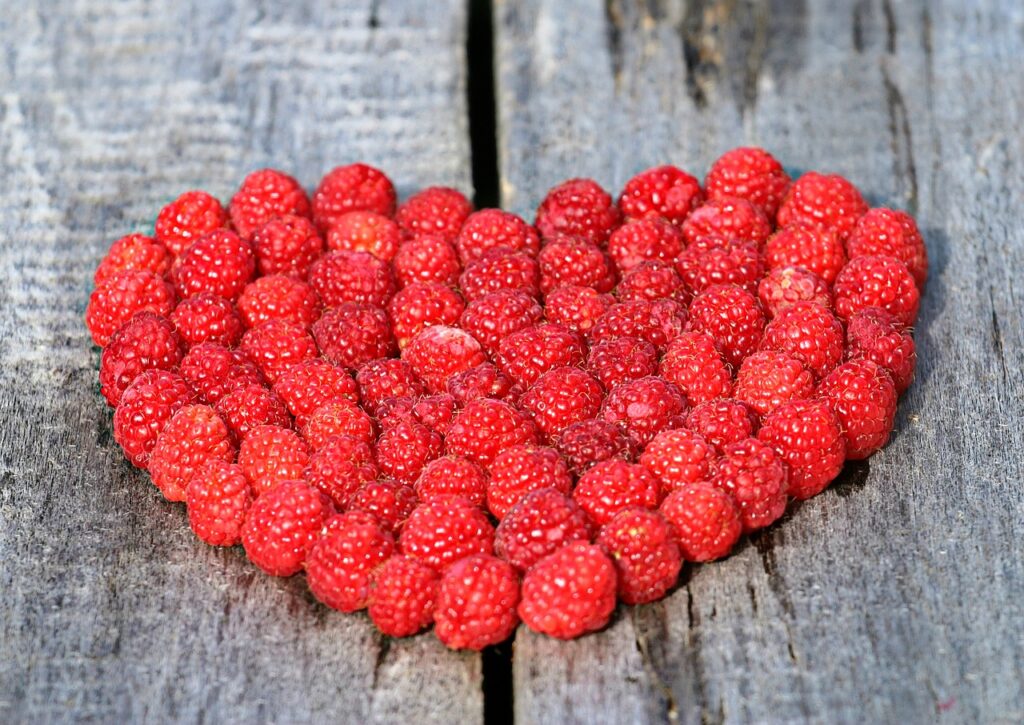
February is American Heart Month. Heart disease is the leading cause of death in America. Being physically inactive and overweight can factor into the risk of heart disease. High blood pressure, high cholesterol, and diabetes can increase the risk as well. Below are tips to care for your heart:
- Use small plates to control portion size. Chew your food slowly.
- Steam or bake food instead of frying it.
- Flavor food with spices instead of salt.
- Try healthy snacks like unsalted nuts or low-fat yogurt.
- Try to get at least 2 and a half hours of moderate-intensity aerobic exercise every week.
Learn more about improving your heart health here: Put Your Heart Into Getting Active and Eating Healthy PDF
Spanish link:Ponga su corazón en ser activo y comer saludable PDF
Sources: https://www.nhlbi.nih.gov/resources/put-your-heart-getting-active-eating-healthy-tip-sheet
Written by: Priya Samuel, EFNEP student volunteer
Start Your Day Right: Dark Chocolate Cherry Oats Recipe

Looking for a new go-to breakfast?
If you enjoy breakfast that is on the sweater side, then this oatmeal bowl is a must try. Not only are oats a delicious and versatile whole grain, they are a good source of fiber. Fiber is important for our digestive health, so it is important to make it a part of your daily meals. Along with fiber, this bowl is packed with healthy fats, protein, and fruit. Here’s how to make it:
Recipe
Makes 2 Serving | Serving Size: ½ the recipe
Ingredients
Oat Base:
- 1 Cup of Old Fashioned Oats
- 1 Green Apple
- 2 Cups of Water
- 1 ½ Teaspoons of Cinnamon
Toppings:
- 2 squares of dark chocolate (or 2 tablespoons of dark chocolate chips)
- ½ Cups of Frozen Dark Cherries (or other frozen or fresh berries)
- 2 Tablespoons of Peanut Butter
- 1 Tablespoon of Honey
Directions
- In a medium pot, bring 2 cups of water to a boil.
- Wash and chop the apple before adding it to the boiling water. Cover with a lid and cook on medium-high heat for 10 minutes.
- Once the apples are cooked, add the oats and cinnamon. Cook on medium heat until all of the liquid is absorbed – about 5-10 minutes.
- Divide the oat base into two bowls and top each bowl with dark chocolate, frozen cherries, peanut butter, and a drizzle of honey.
- Enjoy!
Recipe and Blog from Student Volunteer, Libby Robertson
Skillet Fried Rice
Makes 1 servings | Serving size: 1 recipe
Ingredients
- 1/2 cup of brown rice
- 1 cup of vegetables. Choose 2–3 (onion, broccoli, peas, celery, carrots, peppers, mushrooms, squash, zucchini, and cauliflower)
- 1 teaspoon olive or canola oil
- 1 egg
- 1 teaspoon low-sodium soy sauce
Directions
- Cook rice according to package directions. Set aside.
- Wash and chop selected vegetables into small evenly sized pieces. You may cut them into circles, strips, or cubes as desired.
- Heat oil over high heat in a large skillet.
- Keeping the heat high, add vegetables to the skillet in order of firmness—harder foods first and ending with the softest foods. Stir constantly and cook until vegetables are slightly tender, about 5 minutes.
- In a separate bowl, crack one egg. Add egg to the pan. Stir constantly and cook the egg for about 1 minute until the egg reaches 145 ̊F.
- Add soy sauce and cooked rice to the pan.
- Stir constantly and cook for another 1–2 minutes or until the mixture is well combined.
Nutrition Information Per Serving: 272 Calories, Total Fat 12g, Saturated Fat 3g, Protein 11g, Total Carbohydrate 31g, Dietary Fiber 4g, Sodium 314mg. Good source of vitamin D, calcium, iron, and potassium.
Staying Active in the Winter

Staying active this winter is easy! You can go outside, or get active in your own home. Physical activity boosts immunity during flu season.
- Weather permitting, go on a nature walk or jog. Layer as needed!
- Household chores like sweeping and vacuuming is an activity in itself.
- Walk up and down the stairs.
- Raking leaves cleans the yard and gets you moving.
- Encourage kids to play indoor hopscotch, build a fort, or create a relay race!
- Do a quick 10-minute morning stretch before starting your day.
- Look for videos on YouTube if you need some ideas
Remember to check with your doctor before beginning any exercise routine and stop if you feel any discomfort.
Written by: Priya Samuel, EFNEP student volunteer
Squash-Apple Casserole

Both apples and winter squash make a perfect Fall side dish. You can use your favorite variety of apples (such as Granny Smith or Macintosh) and winter squash (butternut, acorn, or hubbard).
Keeping the skin on the apples adds more fiber to the meal! Apples are good sources of fiber and provide our bodies with vitamin C. Winter squash provides us with fiber and potassium. Fiber keeps us regular while potassium maintains normal blood pressure. Vitamin C strengthens our immune system, which can help us fight off germs this flu season!
Ingredients
- 2 ½ cups winter squash
- 1 ½ cups apples
- ½ teaspoon nutmeg
- 1 teaspoon cinnamon
Directions
- Wash the apples and winter squash
- Cut apples and squash into thin layers
- In an 8×8 inch pan, lay down alternating layers of squash and apples (keep apples as top layer)
- Sprinkle cinnamon and nutmeg on top
- Cover with aluminum foil
- Bake at 350˚ F for 45-60 minutes, until squash is tender.
Sources:Recipe, Apple Nutrition, Everything You Should Know About the Benefits of Squash
Avocado Toast
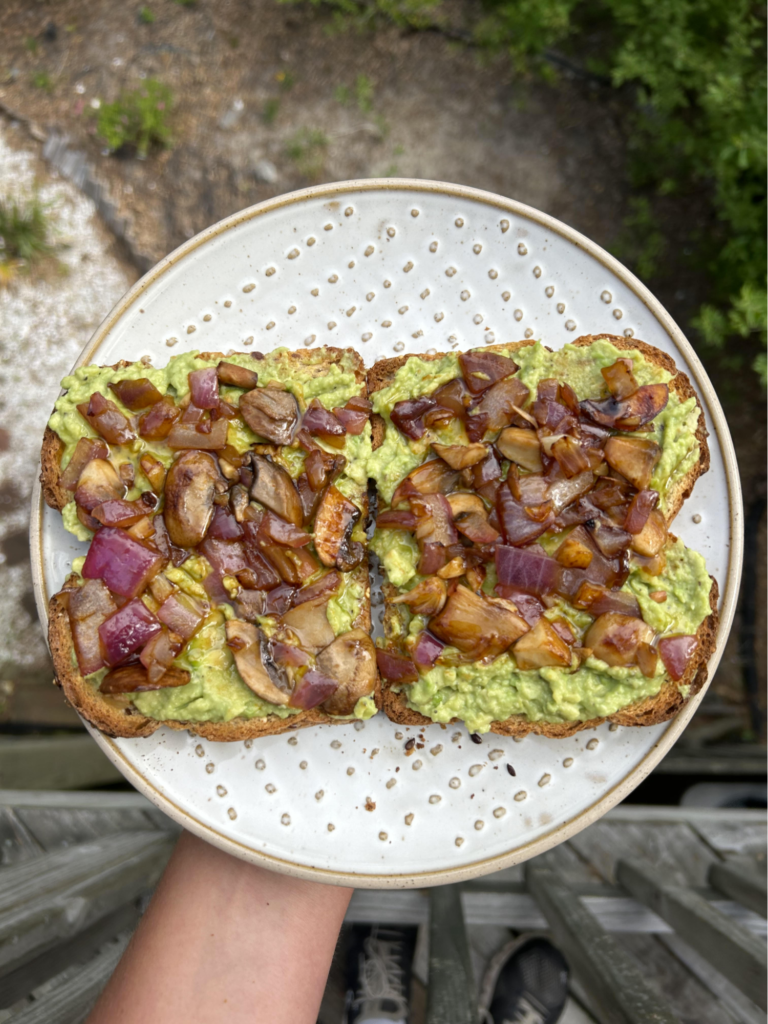
Did you know…
Avocados are well known for their bright green color and great taste, but do you know about all of their health benefits? Avocados are a great source of healthful fats, dietary fiber, vitamins, and minerals. Some of these include vitamins C, E, K, and B, as well as magnesium, folate, potassium…. and the list goes on!
One great way to incorporate avocados into your diet today: Avocado Toast!
Makes 2 Serving | Serving Size: 2 slices of avocado toast
Ingredients:
- 1 avocado
- 1 handful of mushrooms
- 1 garlic clove
- 1 handful of chopped red onion
- 4 slices of whole wheat bread
- Salt & pepper
- Honey (optional)
Directions:
- Chop garlic clove, mushrooms, and onion.
- Spray a pan with oil and cook the garlic, mushrooms, and onion over medium heat until the onion is translucent.
- Mash up avocado & spread an even layer of it over each slice of toasted bread.
- Place onion, garlic, and mushroom mixture on top of each slice & season with salt and pepper.
- [optional] drizzle honey over top for a sweet and savory flavor combo!
Tip: If you want to make one serving & save your other ½ of the avocado, squirt a little bit of lemon juice on it before placing it in a container in the fridge to stop it from browning quickly!
Recipe and Blog from Student Volunteer, Libby Robertson
Cauliflower
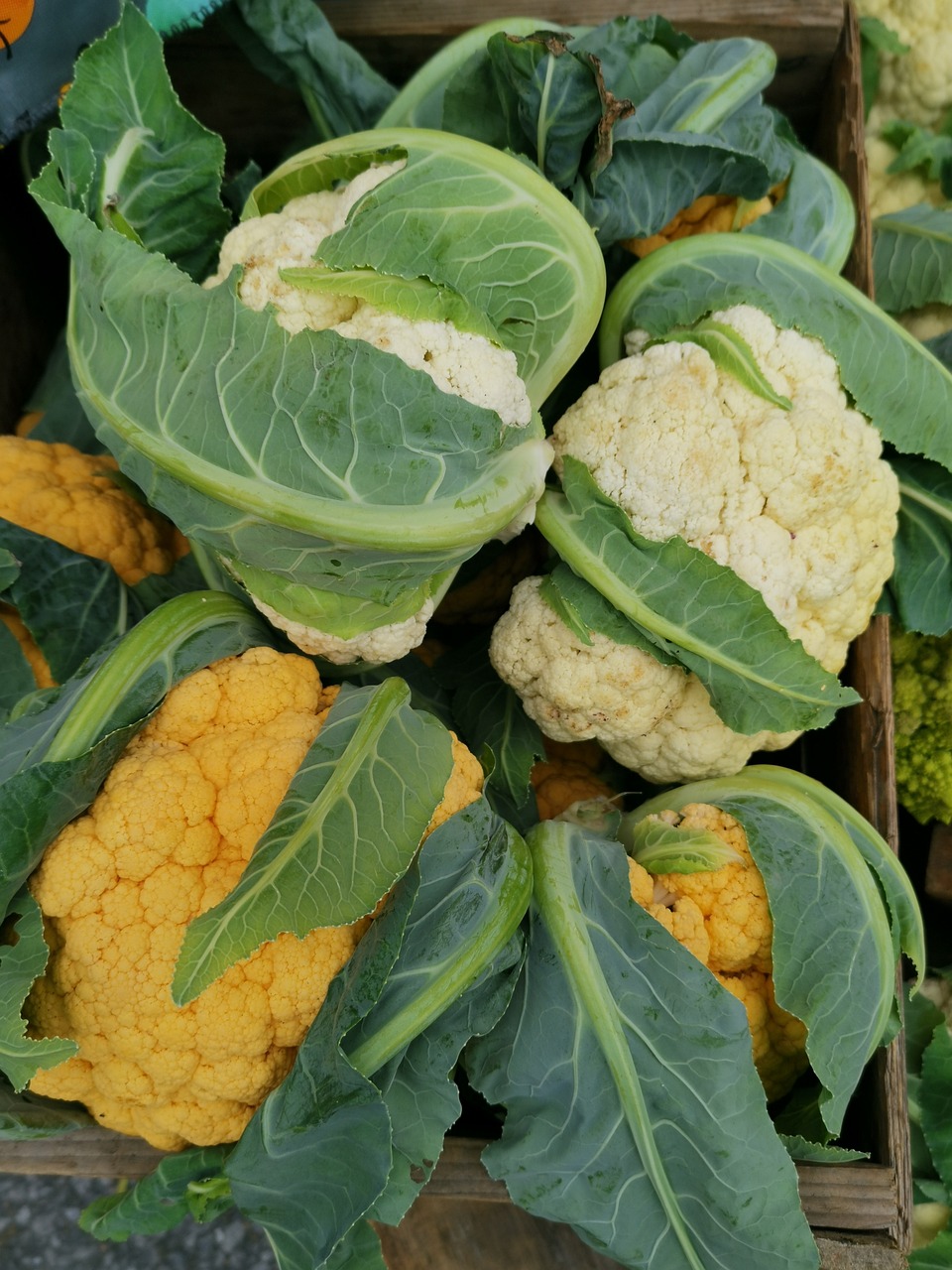
Cauliflower is high in vitamins C, E and K. Vitamin C supports our immune system while vitamin E helps protect cells from damage. Vitamin K helps us make proteins needed for building bones. Cauliflower is also a great source of folate and fiber. Folate helps our cells function properly. Fiber helps keep us regular.
Storing and Choosing Cauliflower
- Cauliflower is in season in October, November, and December.
- The freshest cauliflower is compact and has bright, intact leaves.
- Store cauliflower in a produce bag in the refrigerator. It should last a week before brown spots appear.
Cauliflower Colors
- Cauliflower also comes in purple, green, and orange.
- Purple cauliflower has an antioxidant found in red produce.
- Green cauliflower is a mix of broccoli and cauliflower.
- Orange cauliflower has carotenoids, which gives carrots its color.
How to Add Cauliflower to Your Diet
- Stir fry cauliflower with vegetables and spices.
- Cozy up to cauliflower soup! Roast cauliflower. Then, add it to a sauté of onions, garlic, and vegetable broth.
- Replace white rice with cauliflower rice! (Learn more using the MyPlate recipe below.)
Sautéed Cauliflower Rice
Ingredients
- ½ cup diced onion
- ¼ teaspoon garlic powder
- 1 cauliflower (grate or chop finely, 4-5 cups)
- 1 tablespoon vegetable oil
- ½ teaspoon salt
- ¼ teaspoon pepper
- 1 tablespoon lemon juice (optional)
- 2 tablespoons chopped parsley or cilantro (optional)
Directions:
- In a large pan on medium heat, heat oil. Add onion and cook for 3-5 minutes.
- Add cauliflower, garlic powder, salt, and pepper. Mix for 3-5 minutes or until cauliflower is soft.
- Add lemon juice and sprinkle with parsley or cilantro (optional).
Written by: Priya Samuel, EFNEP student volunteer
Sources:
Nutrition Facts, Food Revolution, Mayo Clinic, Fruits and Veggies, and Iowa State Extension.
One Pot Pasta
We’re cooking up a delicious and budget-friendly one-pot pasta recipe that’s perfect for the whole family!
Makes 6 serving | Serving size: 1/6 of the recipe
Ingredients
- Non-stick cooking spray
- 1/2 pound ground turkey or lean or extra-lean ground beef
- 1 (14.5 ounce) can no salt added diced tomatoes, not drained
- 3 cups water
- 1 tablespoon Italian seasoning
- 1 teaspoon garlic powder
- 1 teaspoon onion powder
- 1/8 teaspoon salt
- 8 ounces whole wheat pasta (penne or macaroni)
- 6 ounces fat-free or low-fat cottage cheese (or low-fat ricotta cheese)
- 8 ounces of frozen spinach (about 4 cups fresh)
- 1 cup reduced-fat mozzarella cheese
Directions
- Spray a medium sized saucepan or skillet with non-stick cooking spray.
- Brown ground meat. Drain and return to pan.
- Stir in diced tomatoes, water, Italian seasoning, garlic powder, onion powder, and salt. Bring to a boil.
- Add uncooked pasta. Cover and cook on medium heat for 15 minutes.
- Stir in cottage cheese (or ricotta) and spinach. Cover and cook for 3 minutes.
- Sprinkle the mozzarella cheese on top, then cover and remove from heat. Let stand for 1–2 minutes to melt the cheese.
Nutrition Information Per Serving: 264 Calories, Total Fat 4g, Saturated Fat 2g, Protein 24g, Total Carbohydrate 36g, Dietary Fiber 6g, Sodium 462mg.
Breakfast Bowl
In celebration of #WorldEggDay – try out this breakfast bowl! Mix it up and include your favorite veggies and seasonings.
Makes 1 serving | Serving size: 1 bowl
Ingredients
- 1 scoop of cooked grits (about 1/2 cup)
- Small handful of sautéed peppers (about 1/4 cup)
- Small handful of sautéed onions (about 1/4 cup)
- Handful of scrambled eggs (about 1/2 cup)
- Sprinkle of reduced-fat shredded cheese (about 1/8 cup)
Directions
- Cook grits according to package directions.
- Cut and sauté onions and peppers.
- Scramble eggs (cooked to 145 ̊F).
- Add cooked grits, onions, peppers, and eggs to a bowl.
- Top with shredded cheese.
Nutrition Information Per Serving: 246 Calories, Total Fat 9g, Saturated Fat 4g, Protein 13g, Total Carbohydrate 30g, Dietary Fiber 4g, Sodium 368mg.
Pizza Pocket
You may have seen this viral food trend. Check out our version of this easy handheld meal. Even better, it has all five groups!
Are you team pineapple on pizza or not?
Makes 1 servings
Ingredients
- Non-stick cooking spray
- 1 whole wheat tortilla
- 1 tablespoon tomato sauce
- 1 tablespoon crushed pineapple
- 1 tablespoon ham, diced
- 1 tablespoon low-fat mozzarella cheese
Directions
- Make a cut half way up the tortilla.
- Spread tomato sauce on the bottom left quarter of the tortilla
- Add the pineapple, ham, and cheese to separate quarters.
- Fold the tomato sauce section up over the top quarter. Fold this double section to the right and then one final fold so you have a wedge.
- Spray a pan or skillet with non-stick cooking spray. Add the tortilla wedge to the pan. Cook until golden brown and cheese is melted, flipping the tortilla at least once.
Nutrition Information Per Serving: 186 Calories, Total Fat 5g, Saturated Fat 2g, Protein 9g, Total Carbohydrate 26g, Dietary Fiber 2g, Sodium 473mg.
Pasta Salad
When the temperatures rise and appetites seek something refreshing, a plate of hot pasta might not be the first thing on your mind. This is where the charm of cold pasta salad steps in. This delightful dish not only caters to your pasta cravings but also keeps you fueled with a burst of flavors and nutrition perfectly suited for the lively summer vibes.
Makes 6 servings | Serving size: 1/6 of recipe
Ingredients
- 8 oz Whole Wheat pasta (try elbow macaroni or orzo)
- 2 Cups Cherry Tomatoes, halved (or diced roma tomato)
- 1 Medium Cucumber, peeled and diced
- 1 Colored Bell Pepper, diced
- 2 Stalks Celery, diced
- 1/2 cup Herb Olive Oil Dressing (or low-fat Italian dressing)*
- 1/2 cup Grated Parmesan Cheese
Directions
- Bring a medium size pot of water to a boil.
- Cook pasta according to the package directions.
- Once pasta is cooked. Drain water and rinse with cool water to cool the pasta down and then place in the refrigerator uncovered to finish cooling.
- Wash all vegetables.
- Cut cherry tomatoes in half.
- Peel the cucumber. Cut the cucumber, bell peppers, and celery into small/medium dice.
- Combine all vegetables into a medium sized mixing bowl.
- Cover vegetables with 1/2 a cup dressing.
- Toss the vegetables well with the dressing.
- Add the cooled pasta.
- Finish by mixing in the parmesan cheese.
- Serve chilled.
Nutrition Information Per Serving: 316 Calories, Total Fat 17g, Saturated Fat 3g, Protein 9g, Total Carbohydrate 34g, Dietary Fiber 6g, Sodium 250mg. Excellent source of vitamins A and C. Good source of calcium and iron.
Kids in the Kitchen

Getting kids involved in the kitchen and familiar with preparing food is important. It sets an example for a healthy lifestyle and creates an interest in food and cooking. Help your kids develop a love of healthy foods by teaching them to make meals as a family.
Benefits of Cooking Together
- Picky Eaters: Children who are involved in creating their meals are more likely to eat the food on their plate.
- Help Kids’ Physical Development: Simple kitchen tasks like stirring, washing, peeling, whisking, and squeezing can help children develop fine motor skills.
- Build Healthy Habits: Home-cooked meals promote an overall healthier diet.
- Promote Bonding: Cooking as a family allows connections to be built through quality time.
Getting Started in the Kitchen
- Start simple: Begin with easy recipes with just a few steps.
- Assign roles in the kitchen: Adjust the tasks you assign to each family member based on your child’s skills and age.
- Supervise: Make sure kids know the rules of kitchen safety and provide help when needed.
Tips for Teaching Kitchen Skills
- Help kids stir by holding the bowl and placing one hand over their hand as they hold the spoon.
- When kids chop foods for the first few times, help by guiding their hand with yours. Start by cutting soft foods with a plastic knife or dull table/butter knife.
- Let kids pour out pre-measured ingredients to start. Then try helping them measure small amounts of dry ingredients before moving to wet ingredients.
- Place your hands over older kids’ hands while using a grater, watching their fingers carefully so they do not get cut or scraped.
Check out this article for specific kitchen tasks based on your child’s age!
Written by: Lauren Hinze, EFNEP Student Intern
Blueberries for Health

Blueberries have many vitamins and minerals that help lower blood pressure, manage diabetes, protect against heart disease, and prevent cancer. They are a good source of vitamin C and vitamin K. Vitamin C boosts your immune system, while vitamin K helps your blood clot properly. These little berries are low in calories but high in nutrients.
Blueberries are one the top antioxidant foods. Antioxidants can prevent or delay some types of cell damage, which could lead to heart disease, cancer, and other diseases. They help to protect healthy cells in the body.
Tips When Eating Blueberries:
- You will get the most health benefits from eating fresh, uncooked berries. Heat can impact the antioxidant content, so raw blueberries are the best way to eat this fruit.
- Remember to rinse and wash the berries before eating to remove any debris or residue that may be on the surface.
- If stored properly, blueberries can last up to 2 weeks in the refrigerator. For peak flavor and texture, eat them within a week.
- Blueberries can last up to 10 months in the freezer.
How to Add Blueberries to Your Diet:
- Use blueberries as a topping on oatmeal, yogurt, or cereal. This is a quick and easy way to eat a serving of fruit and boost your fiber intake in the morning.
- Add into a smoothie or smoothie bowl for a cooling mid-day summer snack.
- Mix fresh or dried blueberries into a salad for a little sweetness.
- Make ice cubes with blueberries or add frozen blueberries to your water. To mix up how you drink water, adding frozen berries can create new flavors to your water to help you stay hydrated.
Sources: USDA
Written by: Lauren Hinze, EFNEP Student Intern
Southwest Bowl
Spice up your meal plan this week with our Southwest Bowl recipe!
Makes 1 serving
Ingredients
- 2 handfuls brown rice
- 2 handfuls of fruits and vegetables. Mix and match from the following:
- Lettuce, corn, avocado, tomato or other of choice
- Handful of cooked lean ground beef
- Small handful of Shredded Cheese, Salsa, and or Greek Yogurt
Directions
- Cook brown rice according to package directions.
- Cook lean ground beef to 158˚F.
- Add the cooked rice to a bowl.
- Add your choice of fruits and vegetables to the bowl.
- Top the bowl with your choice of cheese, salsa, and or yogurt.
National Banana Day

Bananas are high in many vitamins and minerals, including potassium, vitamin B6, fiber, magnesium, and vitamin C. This fruit is an excellent source of potassium which is a mineral and electrolyte that helps to maintain a healthy balance of water and offset the effects of excess salt intake. Bananas are also easy to digest and can improve your overall digestive health.
How to Store Your Bananas
- Store at room temperature away from direct sunlight.
- Do not refrigerate green bananas as this can disrupt normal ripening.
- To speed up ripening, store in a brown paper bag or place bananas near ripe fruit. On the other hand, if you want to slow ripening, store bananas away from other ripe fruits.
- Do not store in plastic bags as this traps excess moisture and promotes rotting.
- If a banana has ripened to a brown color, remove the peel and chop or mash the fruit to include in baked goods or freeze to be added into smoothies.
How to Add Bananas to Your Diet
- Add a sliced banana to a fruit salad.
- Swap an equal amount of mashed banana for butter in baked goods like muffins, quick breads, or cookies.
- For a frozen treat, slice a peeled banana in half and turn the fruit into a popsicle. Dip the banana into yogurt and sprinkle with nuts, chopped dried fruit, or other toppings. Freeze for a few hours.
- Add a banana or frozen banana into your smoothie.
Written by: Lauren Hinze, EFNEP Student Intern
https://www.hsph.harvard.edu/nutritionsource/food-features/bananas/
Working With Common Ground Food Pantry
Alyssa Smock, EFNEP educator, and Linda Minges, FCS agent of Gaston County, partnered together to provide healthy recipes and tasting samples to the clients of Common Ground Food Pantry at First United Methodist Church of Stanley. With the help of countless volunteers including ECA members, Extension Master Food Volunteers, and dietetic interns, they were able to create this wonderful cookbook utilizing common foods distributed by the food pantry. Take a look to get some new recipe ideas and healthy eating tips!
Vitamin C

Vitamin C is a nutrient that can help our bodies to make collagen, protect our cells, and support our immune system. It also helps to keep our brain and nervous system healthy. Another benefit of this antioxidant is that it supports our body’s healing process.
Because our bodies cannot make Vitamin C, we need to get it from our food. Fruits and vegetables are the best sources for this vitamin. If you do not eat enough fruits and vegetables it could put you at risk for a vitamin C deficiency. Eating a variety of servings of fruits and vegetables each day can help you get enough vitamin C.
Food Sources of Vitamin C
- Fruit Sources: Citrus fruits (kiwi, lemon, oranges, grapefruit), strawberries, tomatoes, cantaloupe
- Vegetable Sources: White potatoes, bell peppers, cabbage, broccoli, spinach, cauliflower, brussel sprouts
Importance of Vitamin C
- Vitamin C can help prevent or treat health conditions like heart disease.
- Evidence suggests that eating more fruits and vegetables can lower the risk of most types of cancer because of their high vitamin C content.
- When you have enough vitamin C in your diet it could decrease the length and reduce the symptoms of the common cold.
- Vitamin C also helps your body to process other nutrients like iron from plant-based foods.
Written by: Lauren Hinze, EFNEP Student Intern
https://ods.od.nih.gov/factsheets/VitaminC-HealthProfessional/
Chicken Quesadilla
If you ever run out of dinner ideas for you and your family, try out this simple quesadilla recipe!
Makes 4 servings | Serving size: 1 quesadilla
Ingredients
- Non-stick cooking spray
- 1/4 cup chopped onion
- 1 cup cooked and shredded chicken
- 2 tablespoons salsa
- 1/4 cup low-fat shredded cheese
- 4 (10-inch) whole-wheat tortillas
- Hot sauce (optional)
Directions
- Spray skillet with cooking spray and preheat over medium-high heat.
- Sauté onions until tender.
- In a medium bowl, mix chicken, salsa, and onions.
- Place 1/4 of chicken mixture on one side of tortilla and top with 1/4 of cheese. Fold over mixture and seal edges. (Use a small amount of water for a perfect seal.)
- Spray skillet. Brown one side of quesadilla over medium heat for about 3–4 minutes. Turn and brown the other side. (Chicken temp should be 165°F.)
- Cut each folded tortilla into 3 wedges for easy handling. Serve with extra salsa and hot sauce if desired
Seafood Tips
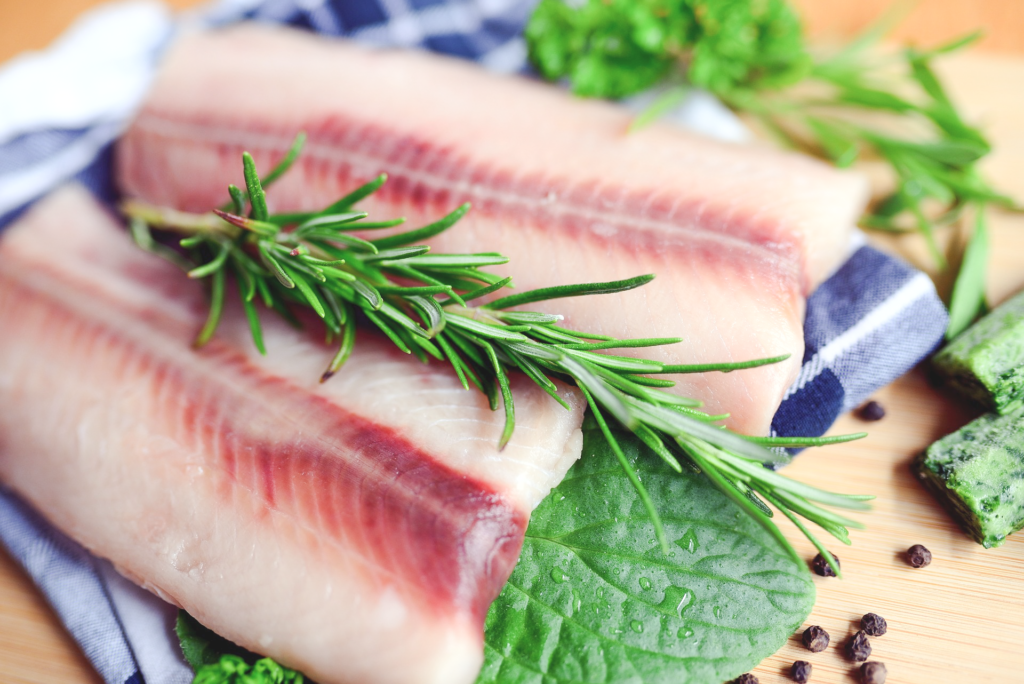
Seafood is an important part of a healthy diet. Try to include seafood at least twice a week with a goal to eat 8 ounces per week. Use these tips when buying fresh fish:
Tips
Whole Fish
- Choose fish that smells like the ocean. Fresh fish should not have a strong odor.
- Look for bright, clear eyes. Dull eyes indicate that the fish is old.
- Look for a fish with shiny, tightly connected scales.
- Choose fish with firm flesh. It should spring back when touched.
- Look for bright red gills.
Frozen Fish
Frozen fish is often a good buy. If you live inland, frozen fish will likely be less expensive than fresh fish. Today, much of the frozen fish is flash-frozen within just a few minutes of being caught. Here are a few tips for choosing frozen fish:
- Check the packaging. Avoid loose, damaged, or torn packages.
- Look for moisture-proof packaging. Vacuum-sealed packages offer the most protection to preserve the quality of the fish.
- Choose only fish without ice crystals. Frost or ice crystals on the fish could mean that the fish was thawed and re-frozen or has been stored for a very long time.
- Avoid any fish with signs of freezer burn.
Recipe
Makes 4 servings | Serving size: 1 fish filet packet
Ingredients
- 4 frozen tilapia filets (or other mild flavored fish)
- Non-stick cooking spray
- Black pepper to taste
- 1/2 (15-ounce) can low-sodium whole-kernel corn, drained
- 1/2 (15-ounce) can reduced sodium black beans, rinsed and drained
- 1 medium tomato, chopped
- 1/4 cup chopped green pepper
- 1 small onion, sliced
- 2 tablespoons cilantro, chopped
- 3 tablespoons lime juice
Directions
- Preheat oven to 450°F.
- Tear off 4 pieces of aluminum foil big enough to wrap 1 fish filet each.
- Spray foil with cooking spray.
- Lay 1 filet on each piece of aluminum foil and sprinkle each filet with desired amount of black pepper.
- In a separate bowl, combine corn, black beans, tomato, and green pepper. Top each filet with 1/4 of the vegetable mixture.
- In another bowl, combine onion, cilantro, and lime juice. Add 1/4 of this mixture to each filet.
- To make each packet, bring two sides of foil to meet in the middle and fold together to seal. Fold remaining open sides together to seal packet.
- Place each packet on a baking sheet and bake for 20 minutes. Remove from oven.
- Let rest for 5 minutes. Serve.
Nutrition Information Per Serving: 190 Calories, Total Fat 3g, Saturated Fat 1g, Protein 26g, Total Carbohydrate 19g, Dietary Fiber 4g, Sodium 150 mg. Excellent source of vitamin C.
Experiment with different seasonings and vegetables.Packets can be cooked on a grill if desired.
How Sleep Can Influence Your Eating Habits

It is important to be aware that your sleep quality can affect your daily food choices.
- Not Getting Enough Sleep Can Lead to Cravings: Poor sleep is linked to wanting more sugary and processed foods. People who are sleep deprived tend to be more drawn to high-calorie foods.
- Sleep Problems Can Cause Overeating: A lack of sleep can make you snack more frequently. People who do not get enough sleep tend to increase their food consumption.
- Lack of Sleep Could Mean Less Produce Intake: Sleep deprivation often leads to selecting foods that offer less nutritional benefit. Increasing your fruit and vegetable intake is one step you could take to improve your overall sleep quality. Not only do fruits and vegetables promote overall health, they can also lead to longer sleep duration.
Tips for Better Sleep:
- Have a Nighttime Routine: Routines help guide the body. A nighttime routine will signal your body to start unwinding before you get into bed.
- Make Your Bedroom Relaxing: If you are having trouble falling asleep every night, try making your bedroom more relaxing for sleep. Dim the lights. Turn off the TV and your phone at least an hour before bed.
- Do Not Eat Too Late: Try to eat an earlier dinner to allow your body time to digest the meal.
- Avoid Caffeine: Be mindful of coffee, energy drinks, soda, or other caffeinated beverages. If you drink these, try to limit them to earlier in the day.
- Move Your Body: Schedule regular movement throughout the day to improve your sleep. Avoid exercising too close to bedtime to allow your body to wind down before bed.
Sources: Sleep Foundation
Written by: Lauren Hinze, EFNEP Student Intern
Buffalo Chicken Wrap
Try this Buffalo Chicken Wrap for an easy dinner for the family. This wrap will give you restaurant vibes but is healthier and cheaper than eating out!
Makes 6 servings | Serving size: 1/2 cup
Ingredients
- 1 whole wheat wrap
- 1-2 handfuls of vegetables (lettuce, tomato, and avocado)
- 1 handful shredded chicken
- 1 small handful of shredded cheese
- Drizzle of hot sauce
Directions
- On a plate or cutting board, lay out the wrap.
- In the center of the wrap, layer on the vegetables.
- Add the chicken and cheese.
- Top with hot sauce.
- Fold the wrap over the filling, pressing gently so that filling moves down into the fold.
- Fold both sides in and roll to close.
National Almond Day

Almonds are good for your overall health. These tree nuts have been suggested to reduce the risk of heart disease by lowering cholesterol. In addition to improving cholesterol levels, almonds contain vitamins and minerals like vitamin E, magnesium, and fiber.
- Almonds are heart healthy and can contribute to lower blood pressure. Elevated blood pressure is one of the leading risk factors for heart disease. Including this tree nut in your diet may not only lower cholesterol but may reduce the risk of a cardiovascular event.
- Almonds are a good source of vitamin E, which is a powerful antioxidant. One serving of almonds contains half of the daily requirement for vitamin E.
- Almonds have a decent amount of fiber. Eating almonds can help control your cravings and prevent overeating, as they make you feel full faster than other foods.
- Despite being calorie-dense, almonds are not linked to weight gain. In fact, eating almonds is associated with less weight gain and a lower risk of obesity because the fiber content helps to improve feelings of satisfaction and fullness.
Tips on How to Add Almonds to Your Daily Diet:
- Chopped or sliced unsalted almonds can be added as a topping to cereals, salads, and baked goods.
- Spread almond butter on apples or whole grain toast.
- Add a tablespoon of almond butter to oatmeal for a richer taste.
- Try almonds in place of less healthy snacks like chips and pretzels.
- Try almond flour instead of all-purpose flour in baked goods.
Veggie Tuna Mac
Celebrate National Cheese Lovers Day with this cheesy Veggie Tuna Mac Recipe.
Makes 6 servings | Serving size: 1/2 cup
Ingredients
- Non-stick cooking spray
- 1 ½ cups whole-wheat macaroni or penne pasta
- 2 tablespoons vegetable oil
- 1 small onion, diced
- 1 medium green pepper, diced
- 2 tablespoons all-purpose flour
- 1 ¼ cups nonfat milk
- 1 cup cheddar cheese, shredded
- 1 teaspoon Italian seasoning
- 1 teaspoon black pepper
- 1 (10-ounce) package frozen peas
- 2 (4.5-ounce) cans low-sodium light tuna, packed in water, drained
Directions
- Preheat oven to 350°F.
- Spray casserole dish with cooking spray.
- Cook pasta according to package directions. Drain. Place cooked macaroni in casserole dish.
- Heat oil in a medium skillet. Add onion and green pepper. Cook, stirring constantly for 5 minutes.
- Add flour and continue stirring for 2 minutes.
- Slowly stir in milk. Bring mixture to a boil.
- Boil, stirring constantly until mixture thickens. Reduce heat and add cheese, Italian seasoning and pepper. Stir until cheese melts.
- Combine macaroni, cheese mixture, frozen peas and tuna in casserole dish.
- Cook for 30 minutes or until center temperature of casserole reaches 165°F.
Nutrition Information Per Serving: 320 Calories, Total Fat 10g, Saturated Fat 2g, Protein 26g, Total Carbohydrate 34g, Dietary Fiber 5g, Sodium 200mg. Excellent source of vitamins A and C. Good source of calcium and iron.
Sweet Potato and Apples
Our normal eating habits might be a little off this time of year. Try making this sweet potato and apple recipe to make sure you are still eating your fruits and vegetables!
Makes 6 servings | Serving size: 1/2 cup
Ingredients
- Non-stick cooking spray
- 1 (16-ounce) can sweet potatoes (may use 3 fresh sweet potatoes)
- 2 large apples
- 1/4 cup raisins
- 1/3 cup pineapple or orange juice
- 2 teaspoons packed brown sugar or 2 tablespoons granulated sugar
- 2 tablespoons butter
- 1 teaspoon cinnamon
Directions
- Preheat oven to 350°F.
- Lightly spray a baking dish with non-stick cooking spray.
- Wash, peel, and slice apples (and fresh sweet potatoes if using).
- Drain canned sweet potatoes.
- Layer sweet potatoes and apples in the sprayed baking dish.
- Sprinkle sweet potatoes and apples with raisins.
- In a separate cup, mix juice and sugar.
- Pour juice mixture over sweet potatoes, apples, and raisins.
- Cut butter into small bits and distribute evenly across the top of the casserole.
- Sprinkle cinnamon over fruit.
- Cover with aluminum foil and bake for 20 minutes. Remove foil and bake for 10 minutes longer. Potatoes should be tender and cooked through.
Nutrition Information Per Serving: 190 Calories, Total Fat 4g, Saturated Fat 0.5g, Protein 2g, Total Carbohydrate 41g, Dietary Fiber 4g, Sodium 95mg. Excellent source of vitamin A. Good source of vitamin C.
Cinnamon Apple Crisp
Looking for a sweet treat without loads of added sugar? Try out this tasty cinnamon apple crisp!
Makes 6 servings | Serving size: 1/2 cup
Ingredients for Filling
- 4 cups peeled, thinly sliced apples (3-4 medium)
- 1/4 cup water
- 3 tablespoons firmly packed brown sugar
- 1 tablespoon all-purpose flour
- 1/2 teaspoon ground cinnamon
- Non-stick cooking spray
Ingredients for Topping
- 1 cup quick cooking oats
- 3 tablespoons firmly packed brown sugar
- 3 tablespoons butter, melted
- 1/4 teaspoon ground cinnamon
Directions
- Heat oven to 350°F.
- Spray 8-inch square glass baking dish with cooking spray.
- For filling, combine fruit and water in large bowl.
- Combine sugar, flour, and cinnamon; add to fruit; stir until fruit is evenly coated.
- Spoon into baking dish.
- For topping, combine all ingredients in medium bowl; mix well until oats are moistened.
- Sprinkle evenly over fruit.
- Bake 30-35 minutes or until fruit is tender.
Nutrition Information Per Serving: 70 Calories, Total Fat 3.5g, Saturated Fat 3.5g, Protein 0g, Total Carbohydrate 18g, Dietary Fiber 2g, Sodium 0mg
Nutrition During Pregnancy
It is always important to eat healthy but for those with a baby on the way, nutrition is even more important! Make sure you are fueling yourself and your baby well during pregnancy with these tips on what to eat, what not to eat, and how much to eat too!
Source: Maternity and Family Planning Clinics and the Health Literacy Office – UNMH
Jean Cox, MS, RD, LN
Creative Movement for Cold Weather

Like Olaf from Frozen sang, “Winter’s a good time to stay in and cuddle,” but that can’t be all we do during the cold-weather months!
It’s important to stay active year-round, but some days it’s just not possible to bundle everyone up, load the kids into the car, and drive 20 minutes to a gym or a playground for kids to get the exercise they need to stay healthy. But don’t worry! There are plenty of fun indoor activities that will get your kids moving, help them stay healthy, and fight those chilly winter blues!
Balloon Volleyball
Just like regular volleyball, the goal of balloon volleyball is to keep the balloon from touching the ground. The catch is that you can only move the balloon by blowing on it—no limbs allowed.
Hang a piece of ribbon, yarn, or string across the room where you are playing to serve as a net. The balloon has to go over the string and land on the other team’s side of the “net” to score a point.
If your kids are younger or less competitive, you can skip the “net” and try to keep the balloon off the floor by hitting it back and forth. Each player can only touch the balloon once in a row.
Indoor Obstacle Course
We all know that kids have huge imaginations, so use that to your advantage by creating an indoor obstacle course! Imagine that the floor is lava, rushing water, or something else that would be unsafe to step in. Place pillows, towels, chairs, or anything else you are okay with your kids standing on at various points around the house, designating them as “safe.” Then challenge players to get from point A to point B without touching the floor.
For an added challenge, come up with tasks players must accomplish along the way (still without touching the floor), like putting on a pair of tennis shoes, crossing over or under a certain piece of furniture, collecting certain toys, washing their hands, etc.
Laser Maze
(This will take up some space, so be prepared to dedicate whatever area you are playing in to the game while it is going on.)
Create a web of “lasers” by stringing yarn or rope around furniture or taping it to walls, criss-crossing it back and forth. Once your laser web is built, instruct players to get through the “lasers” without touching them!
Have fun!
